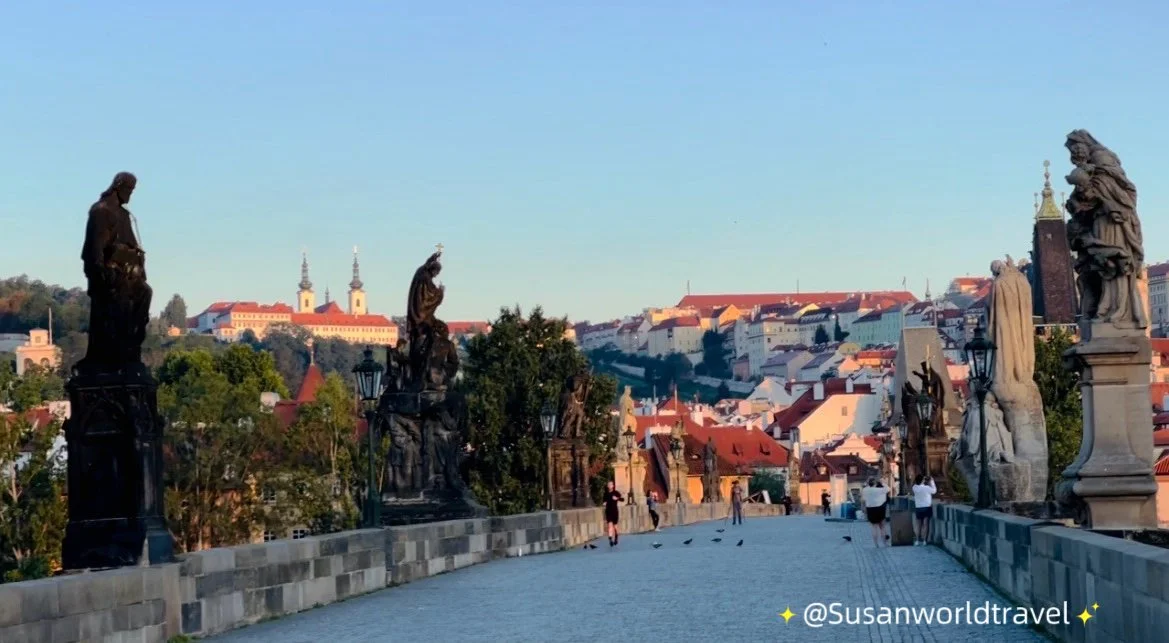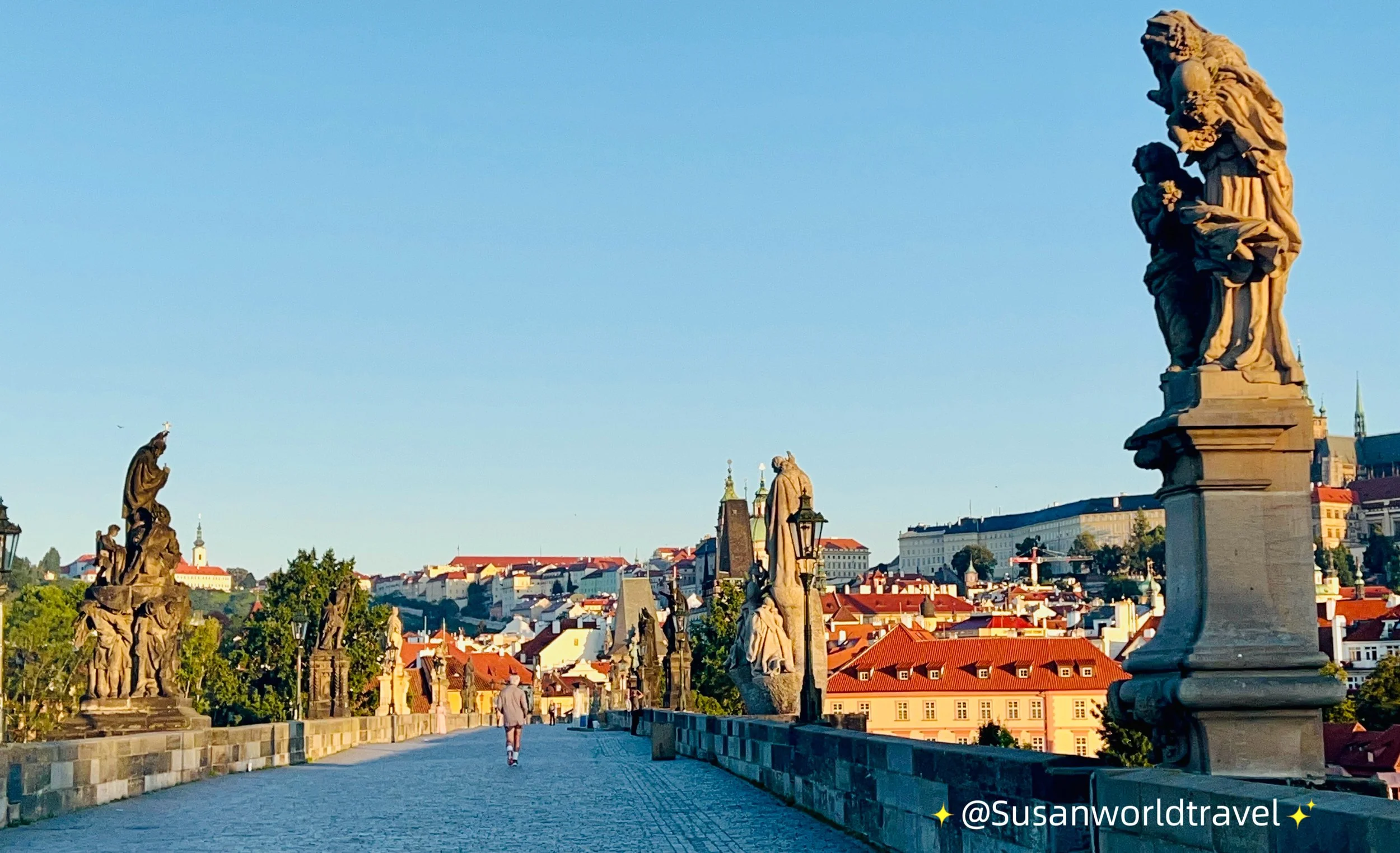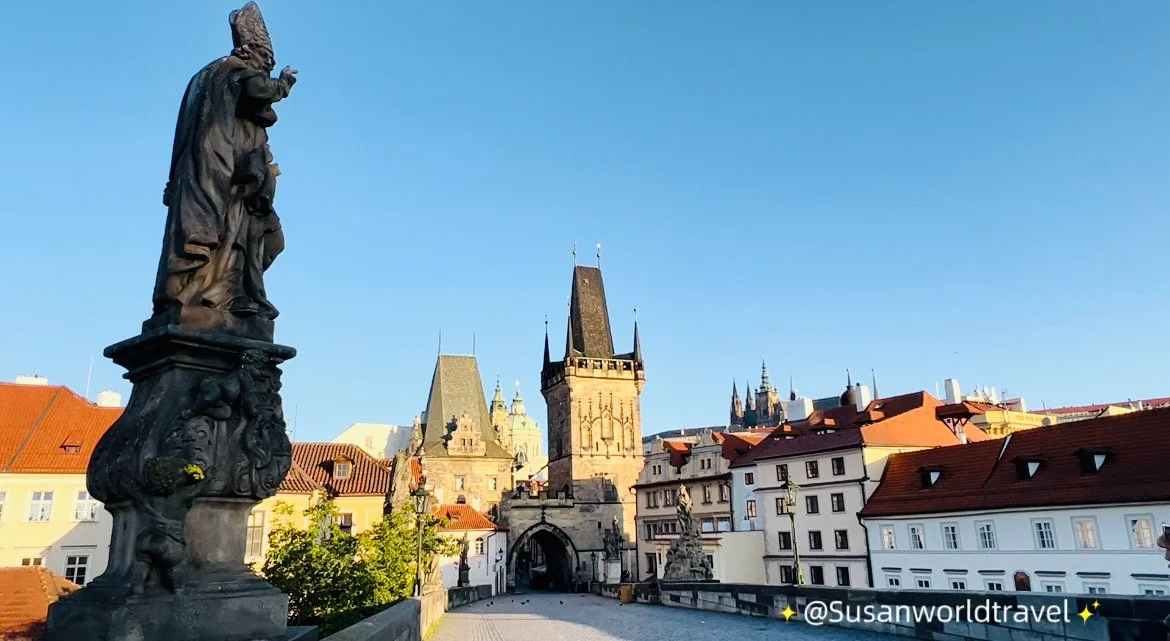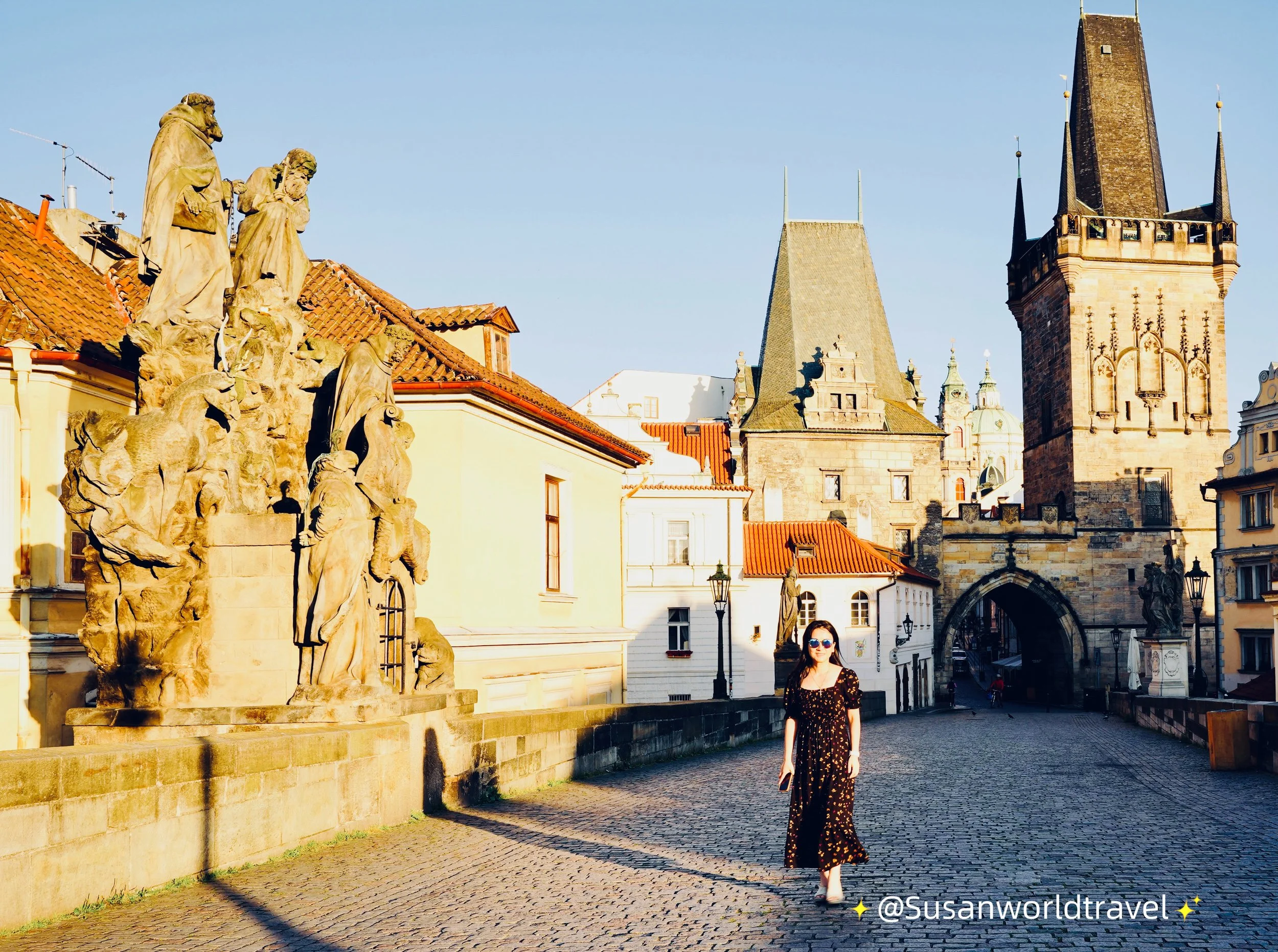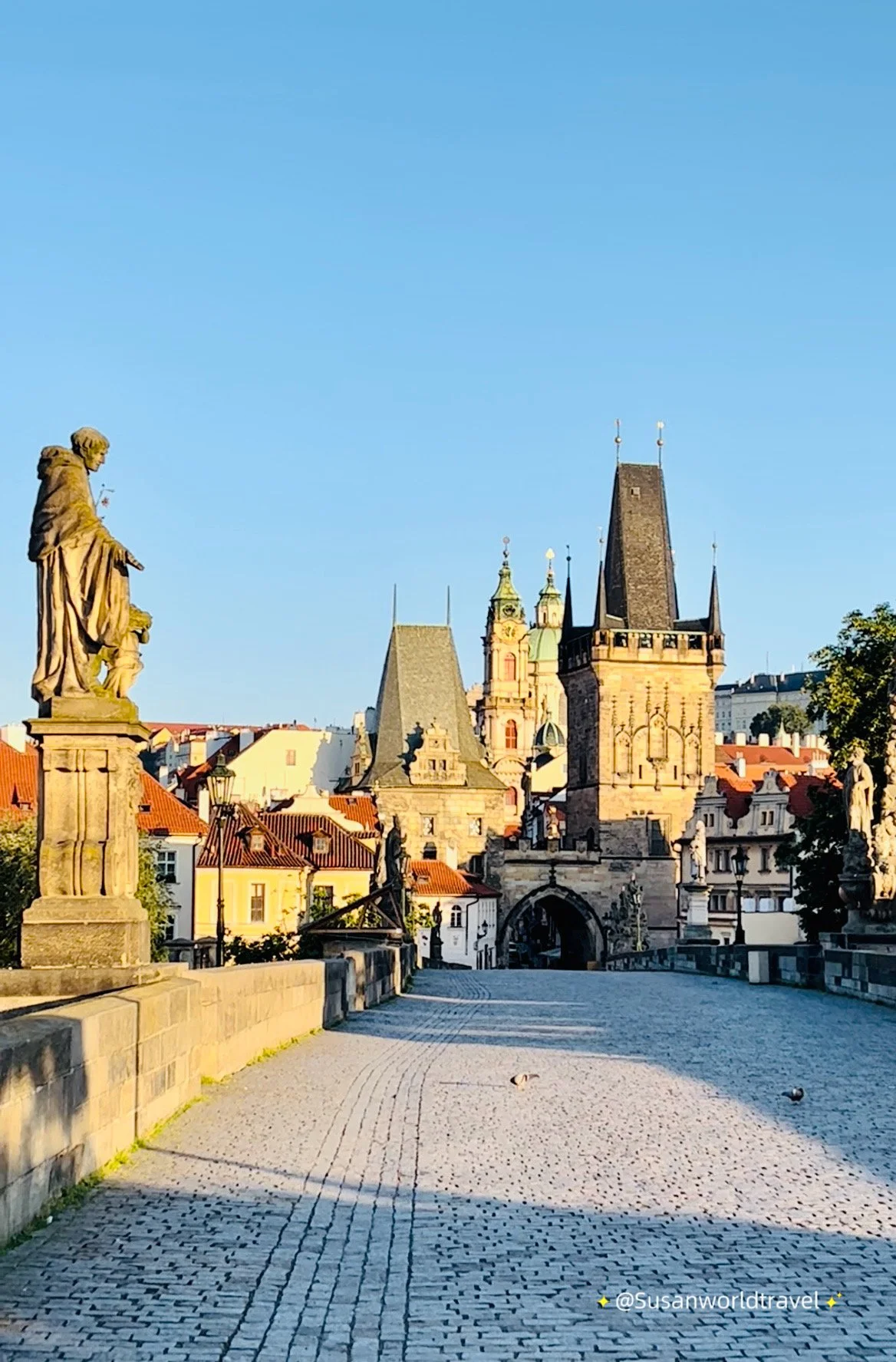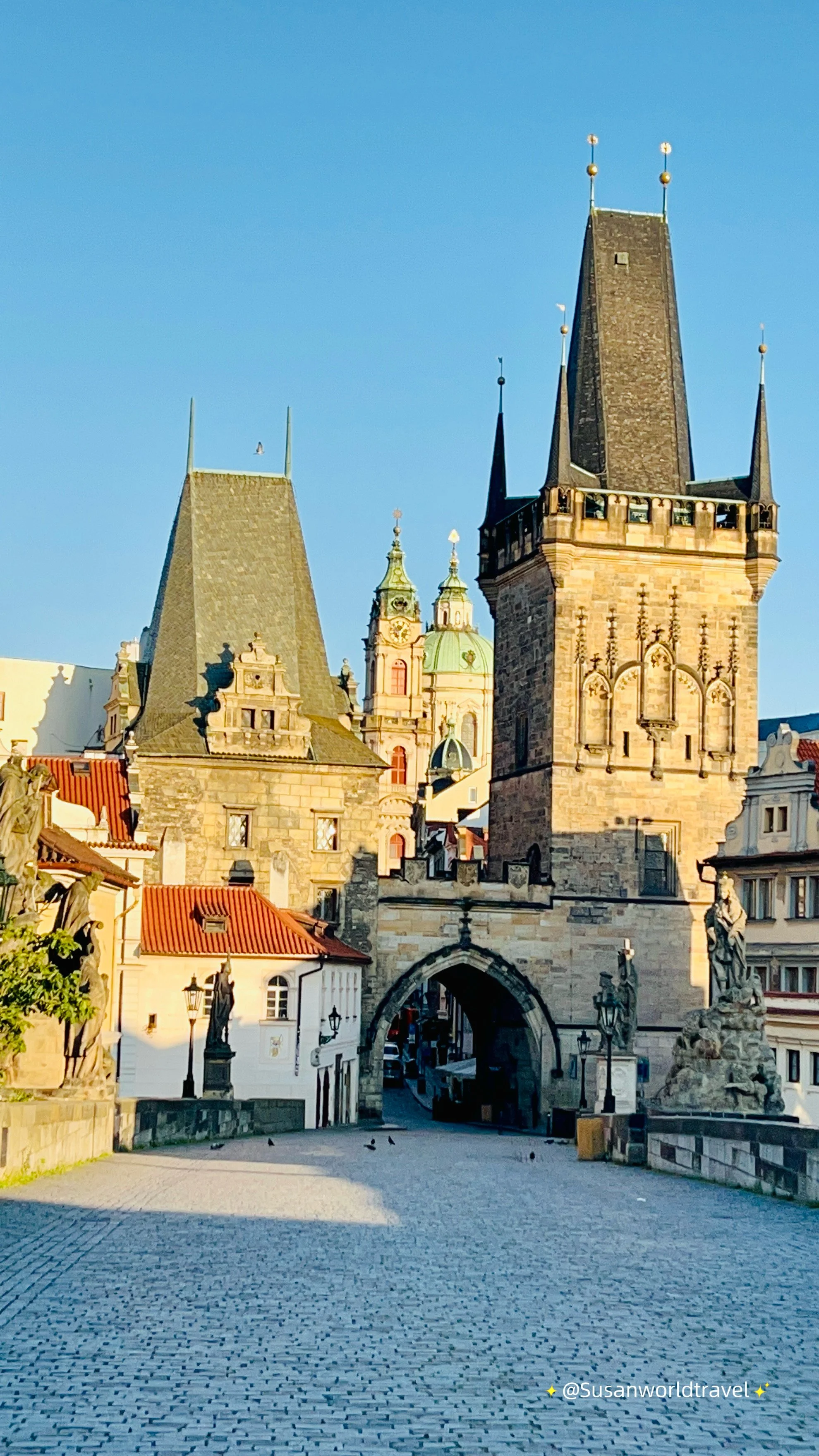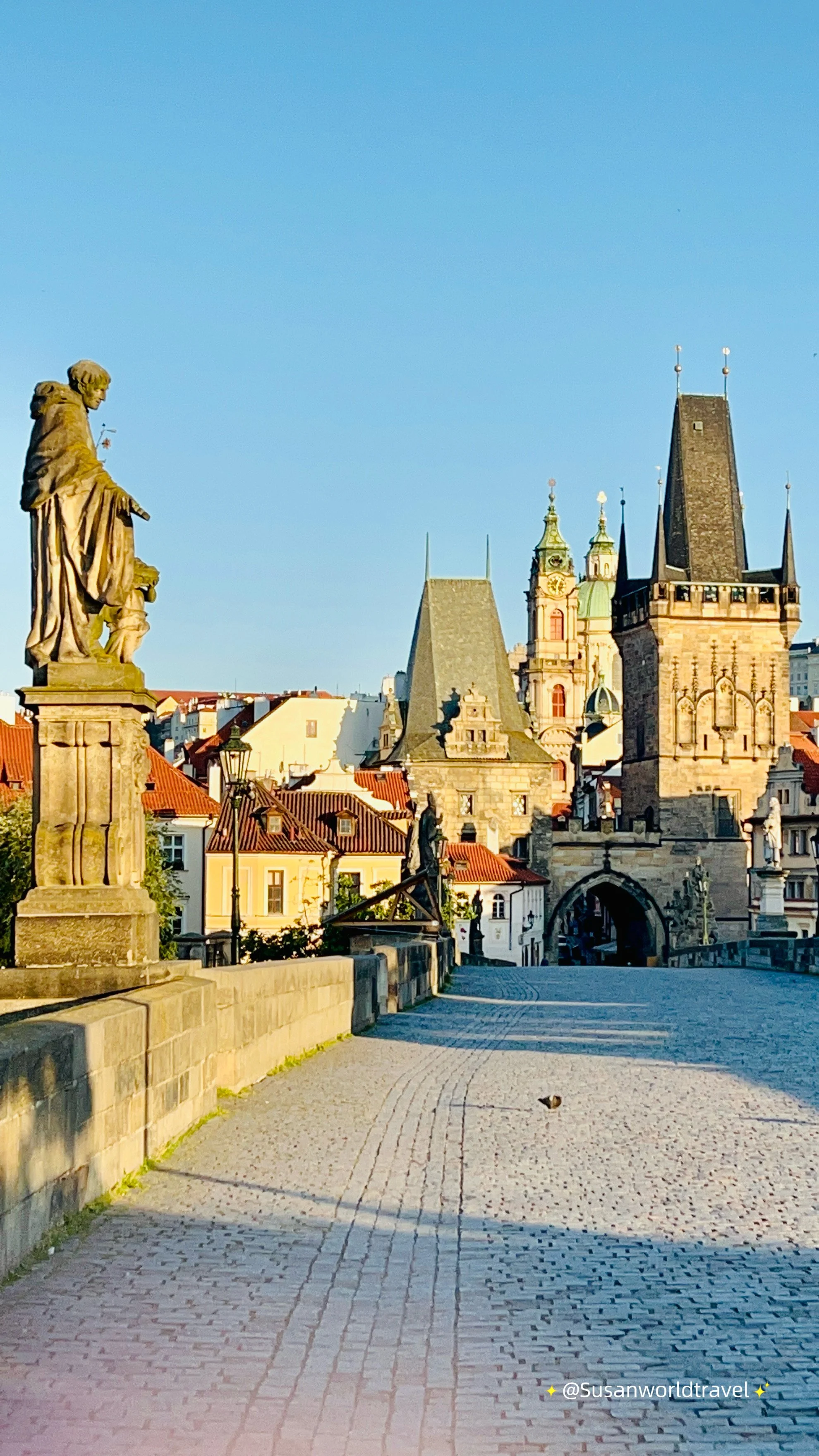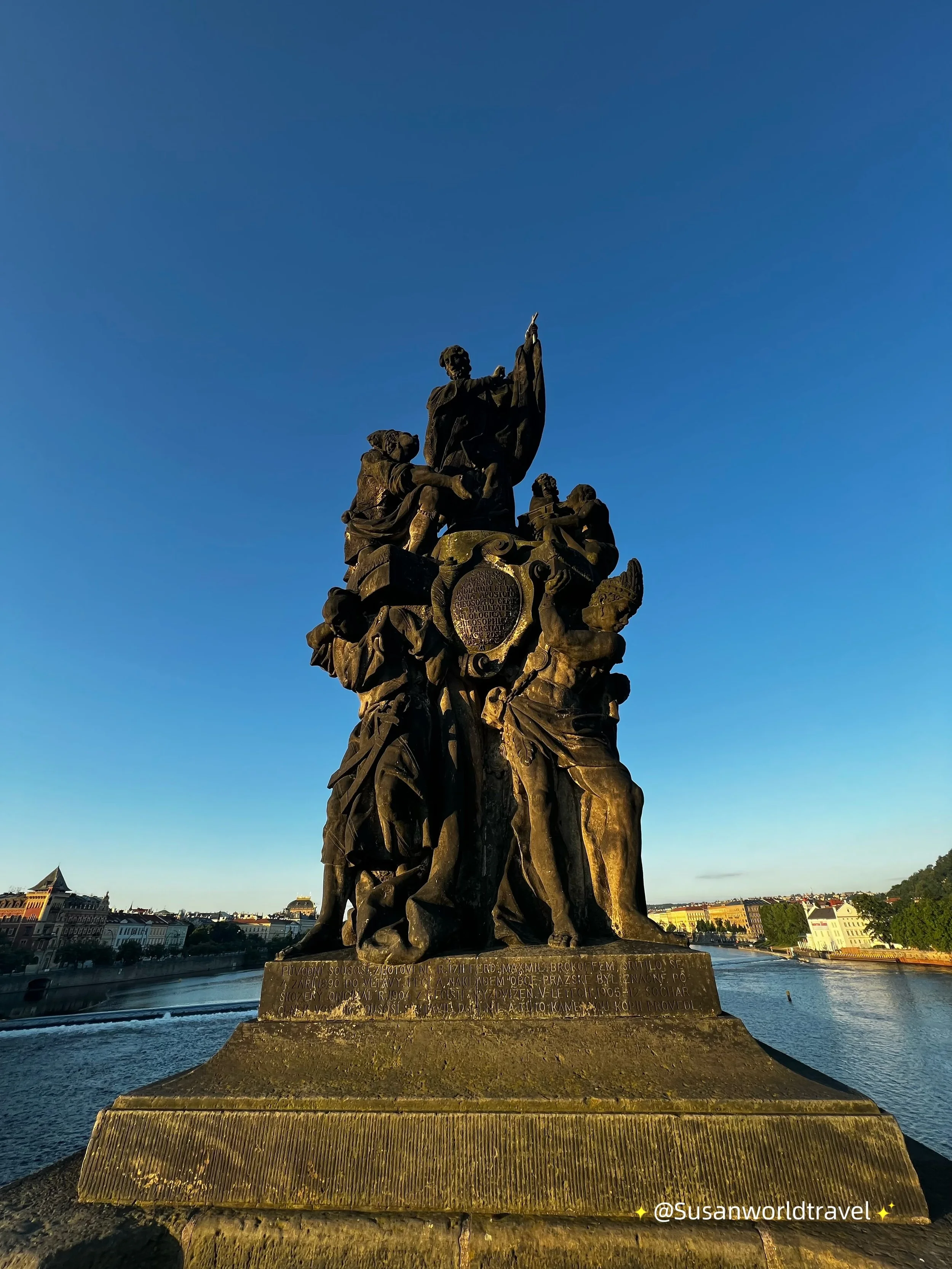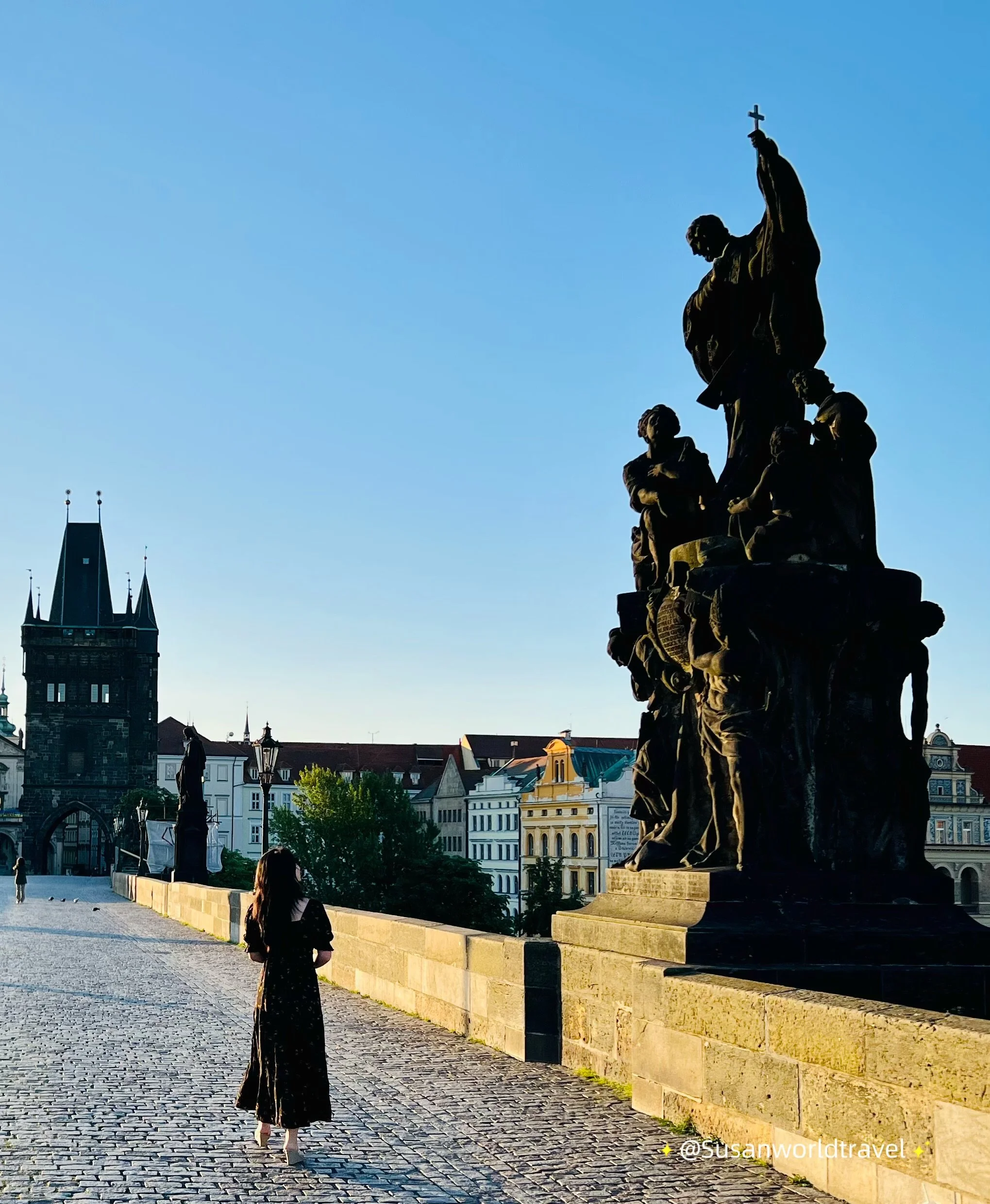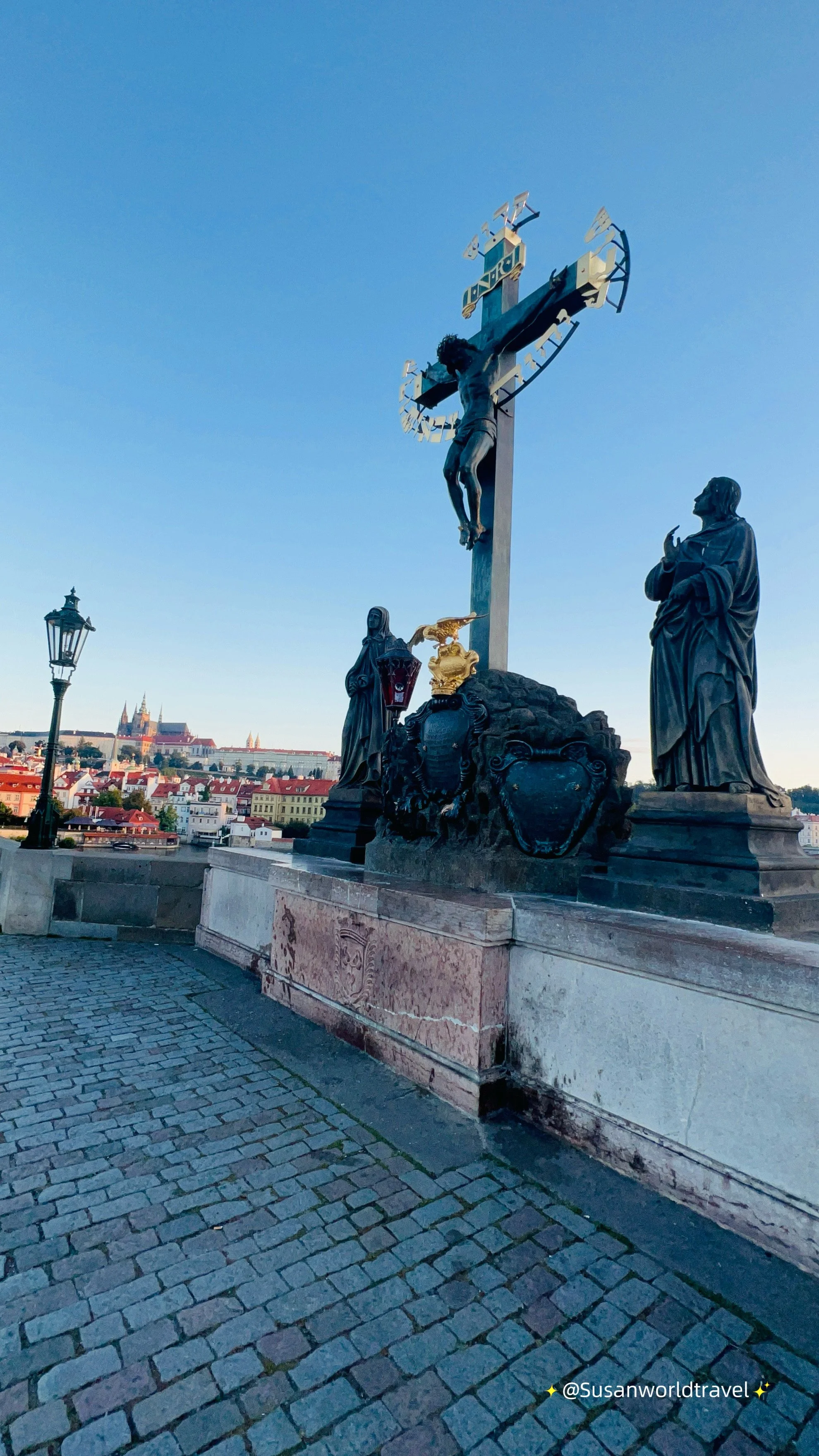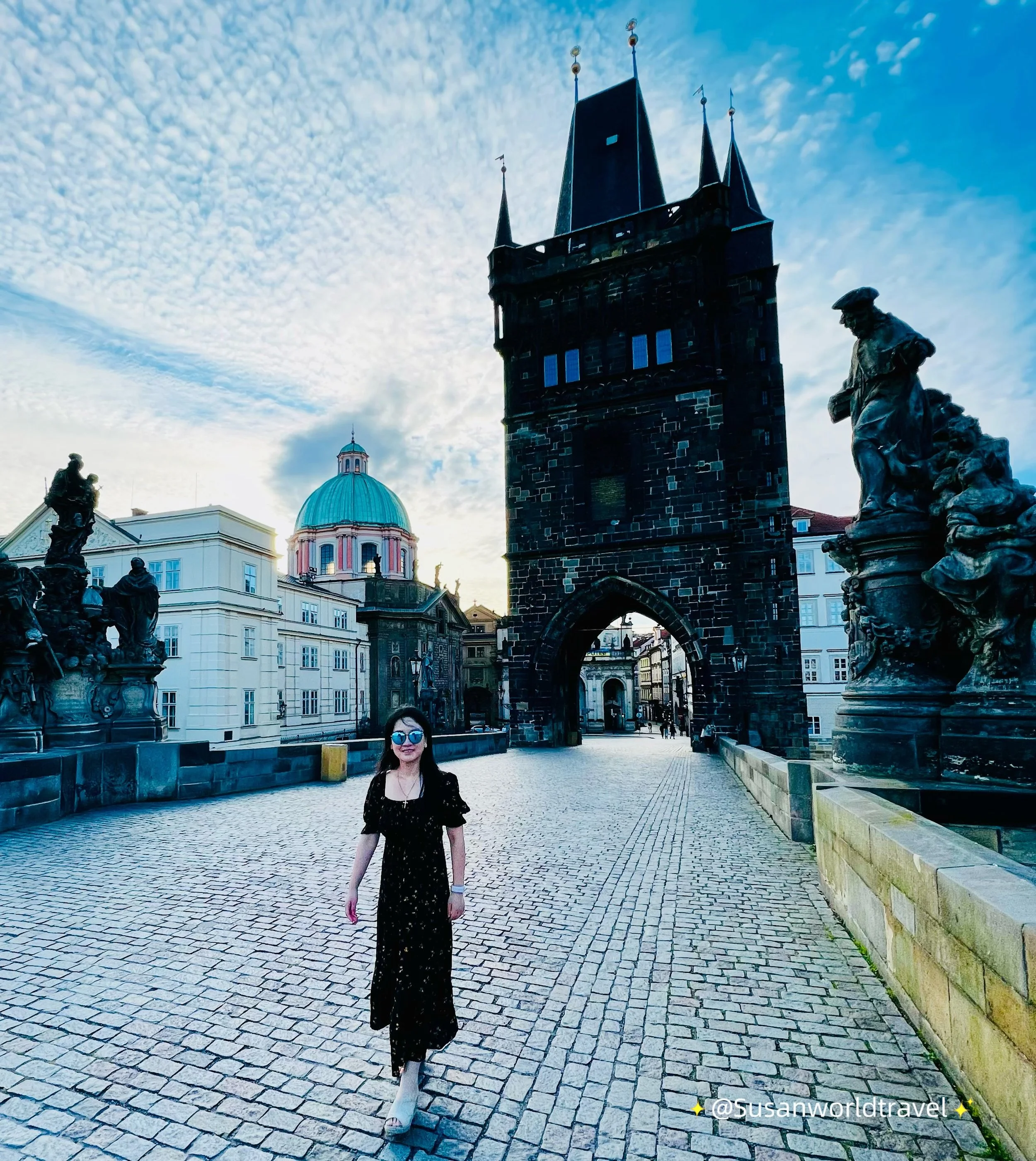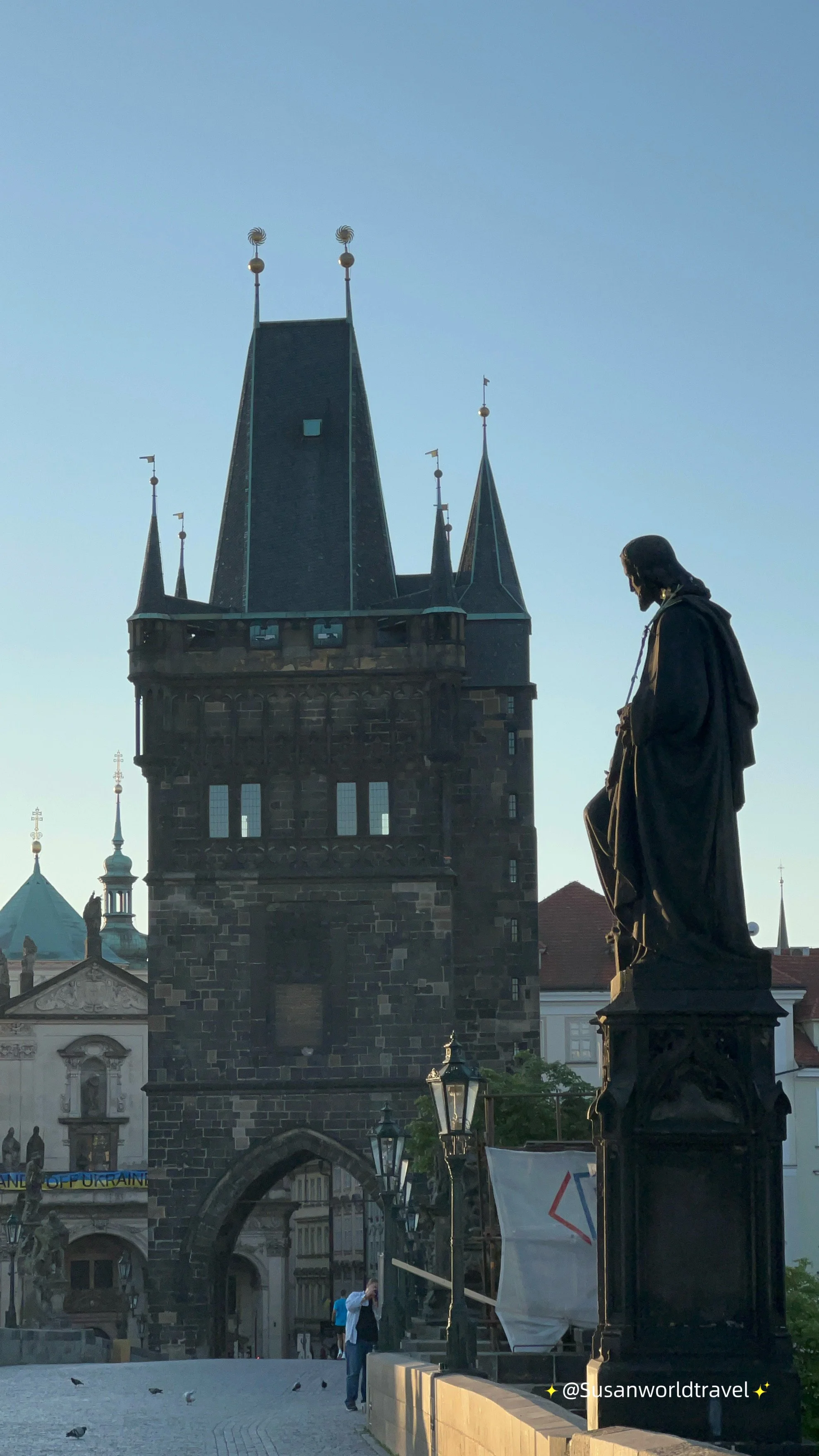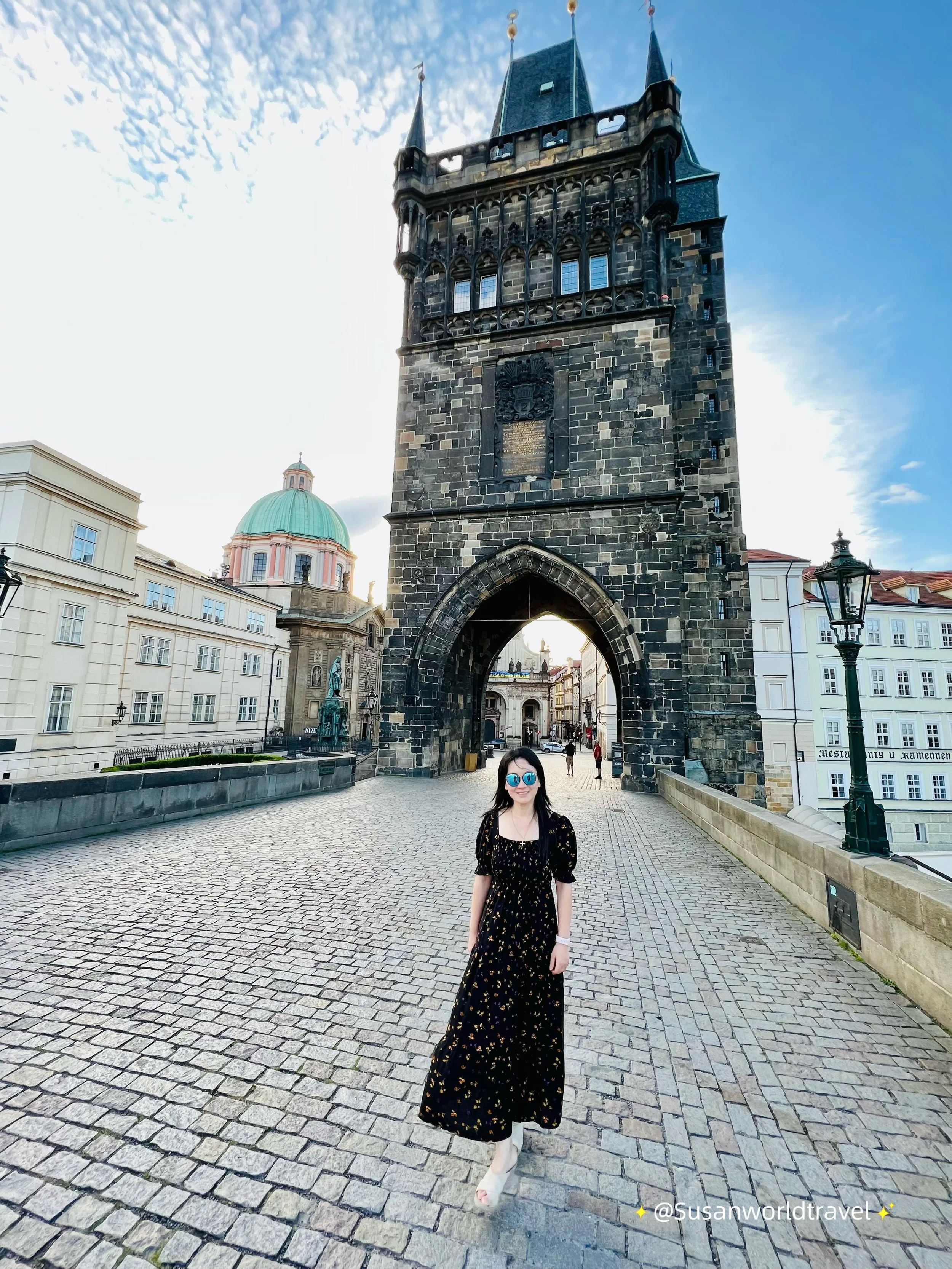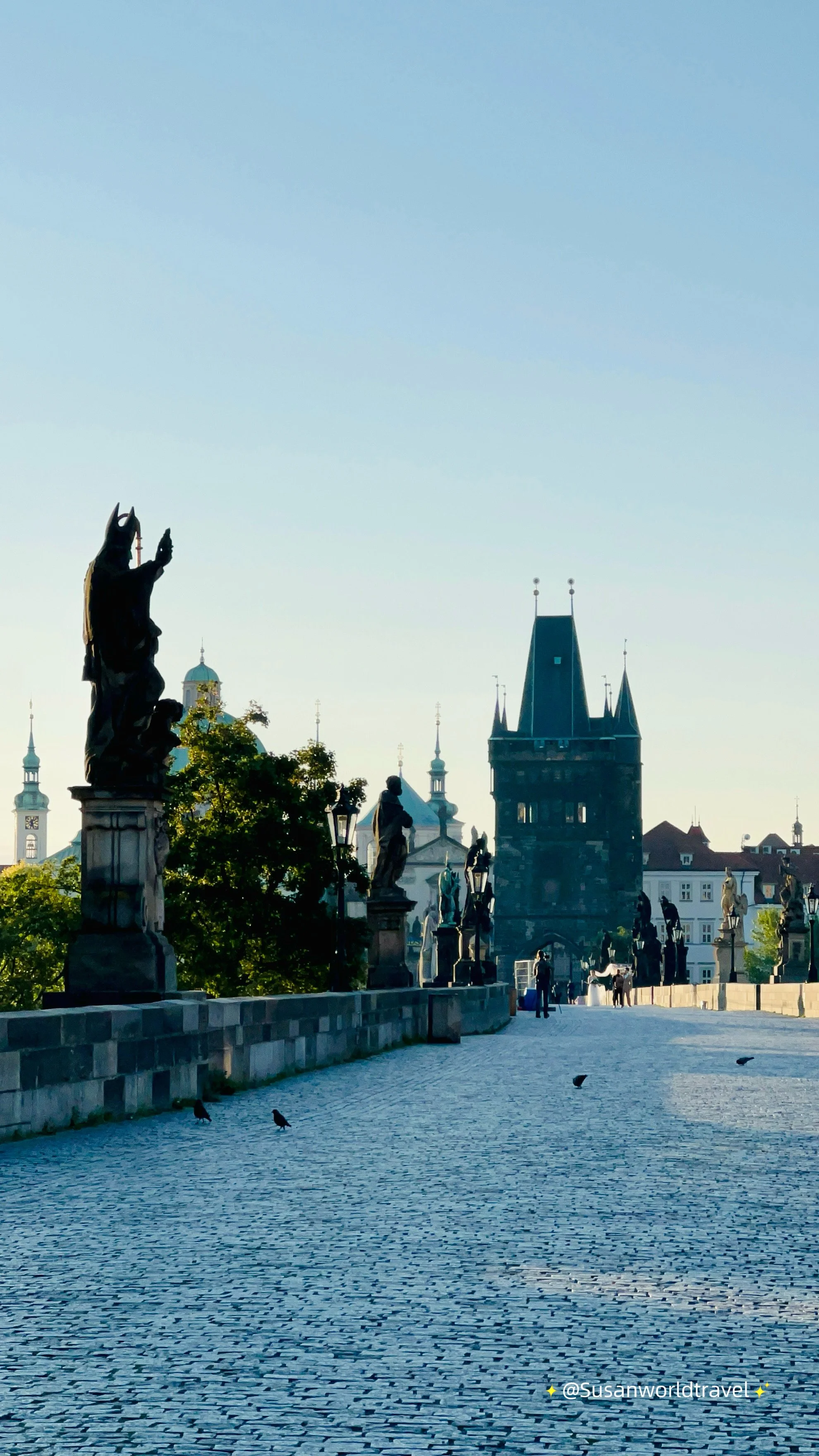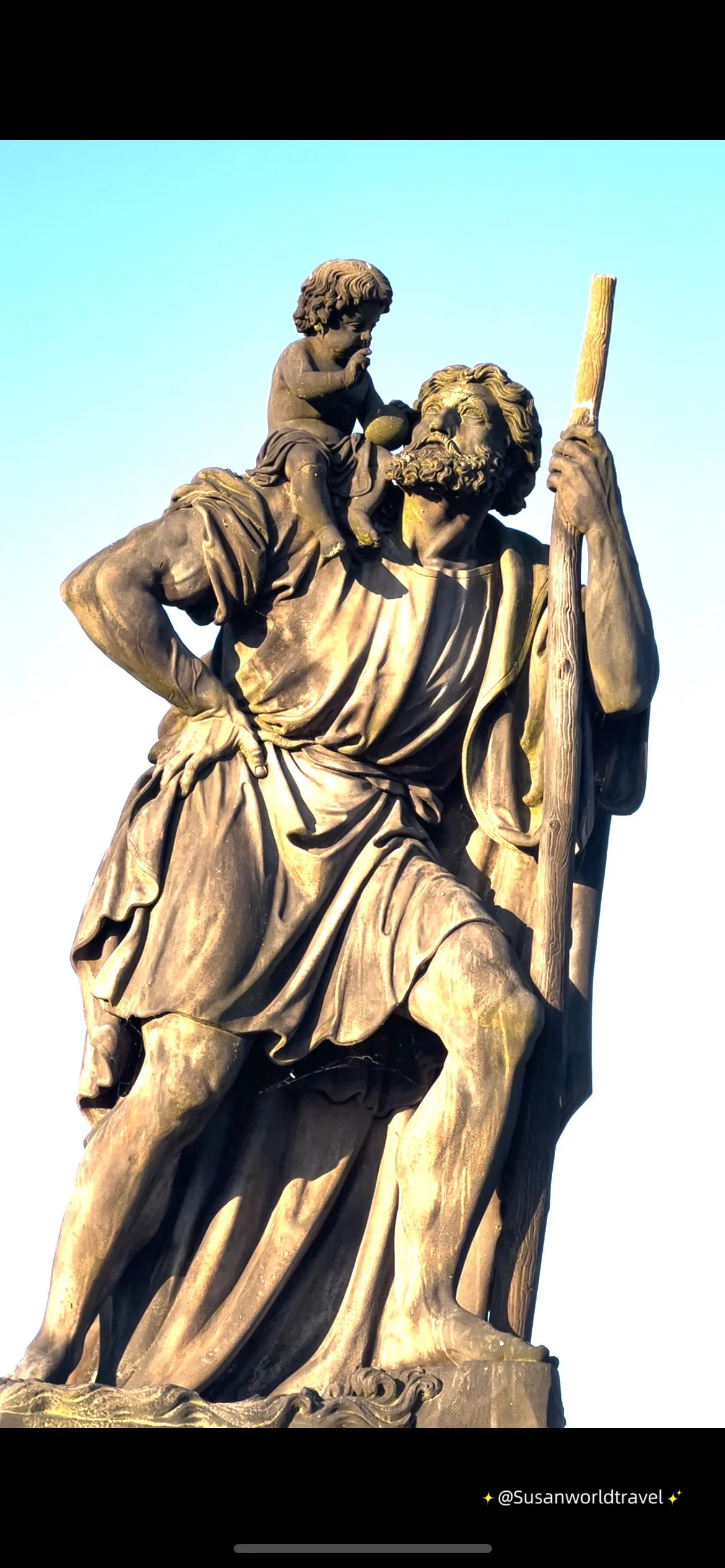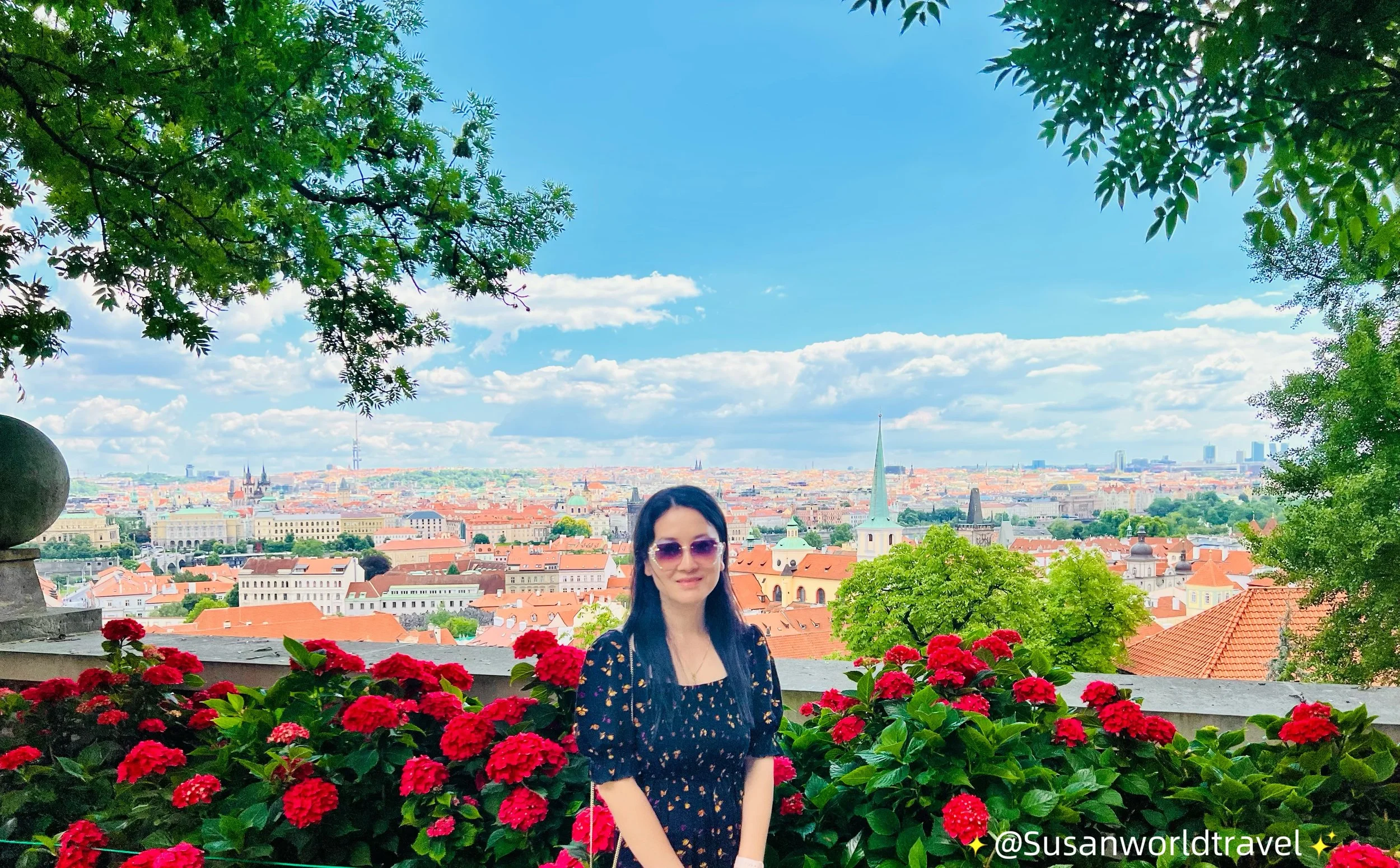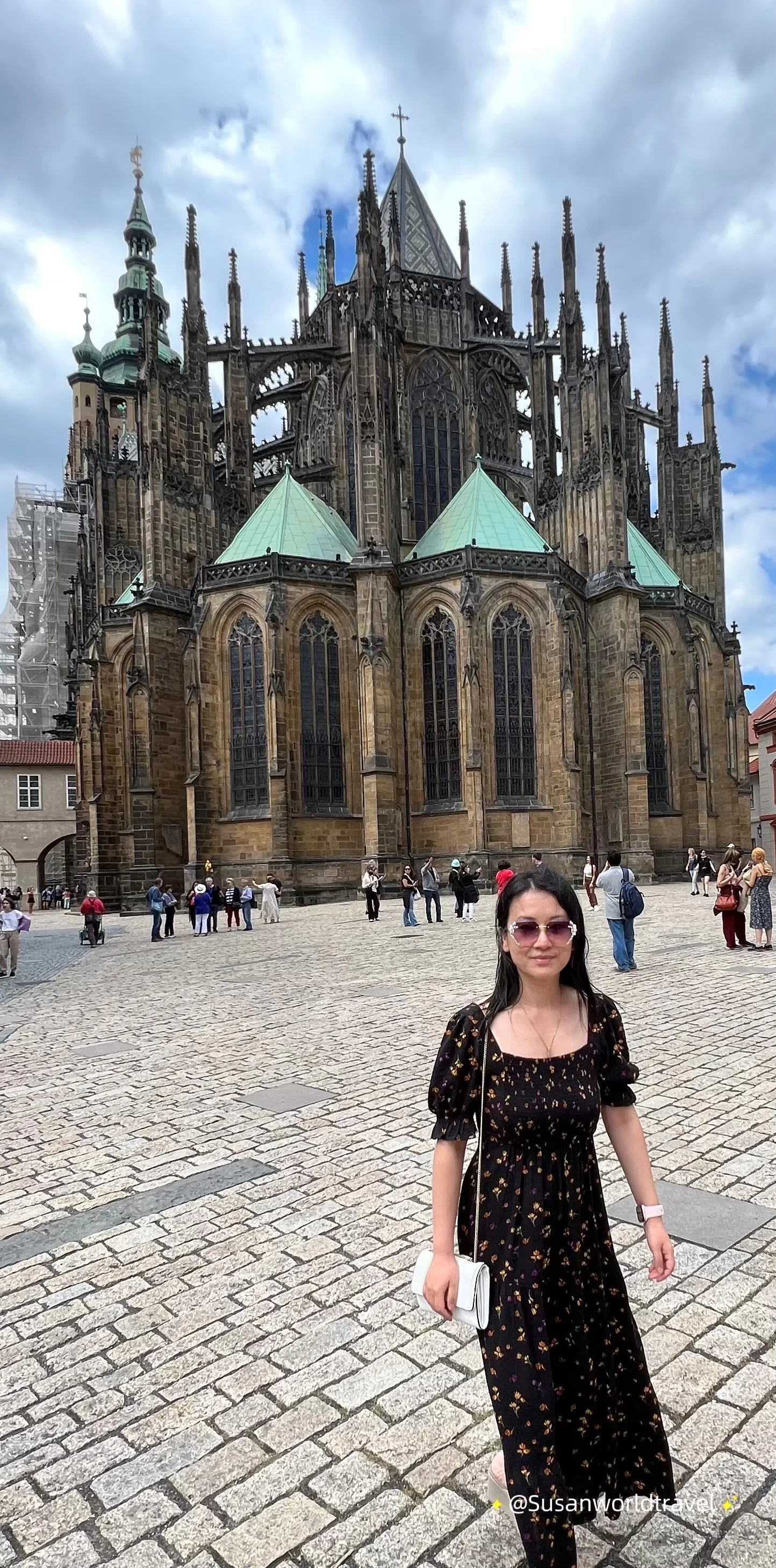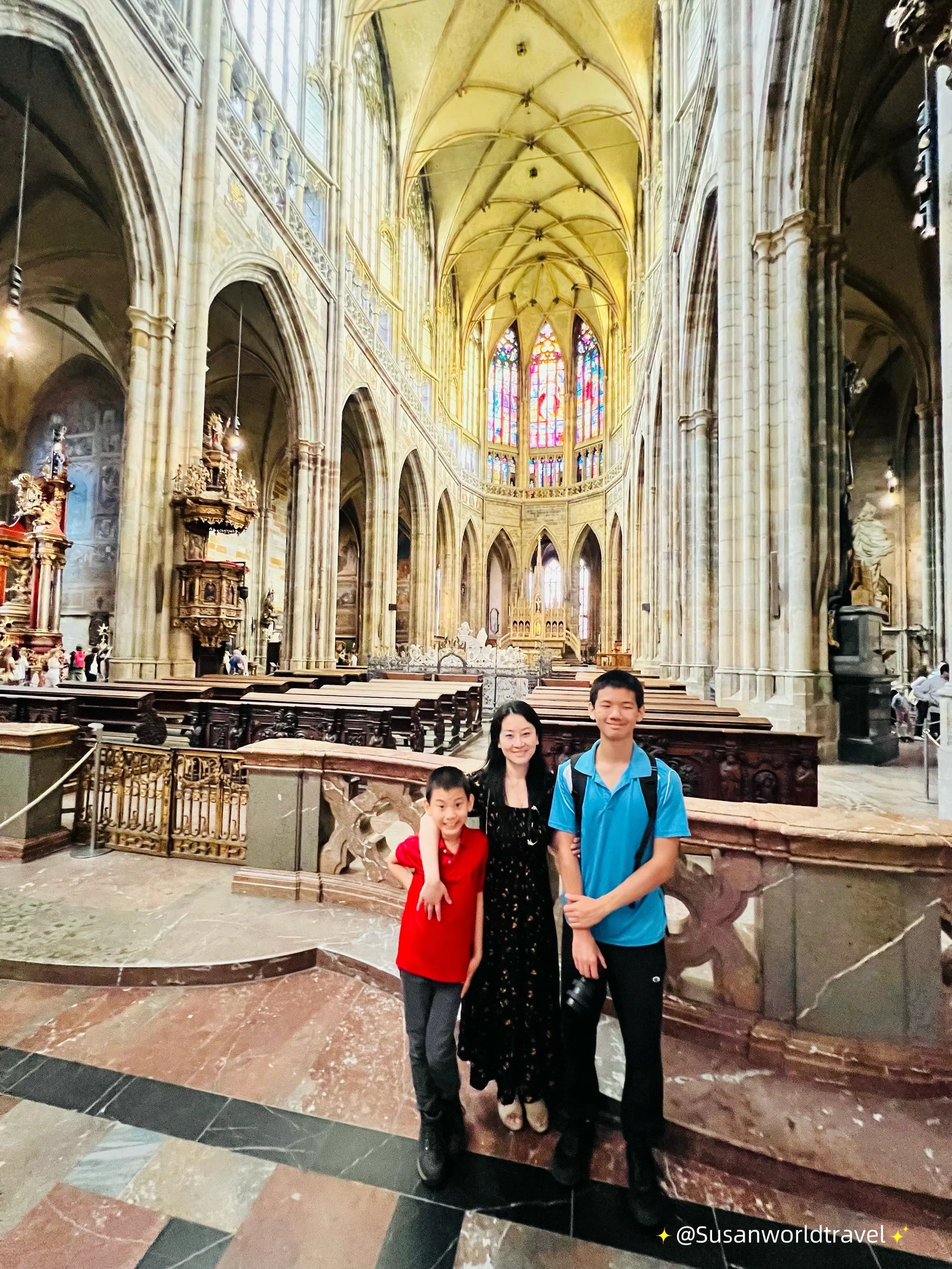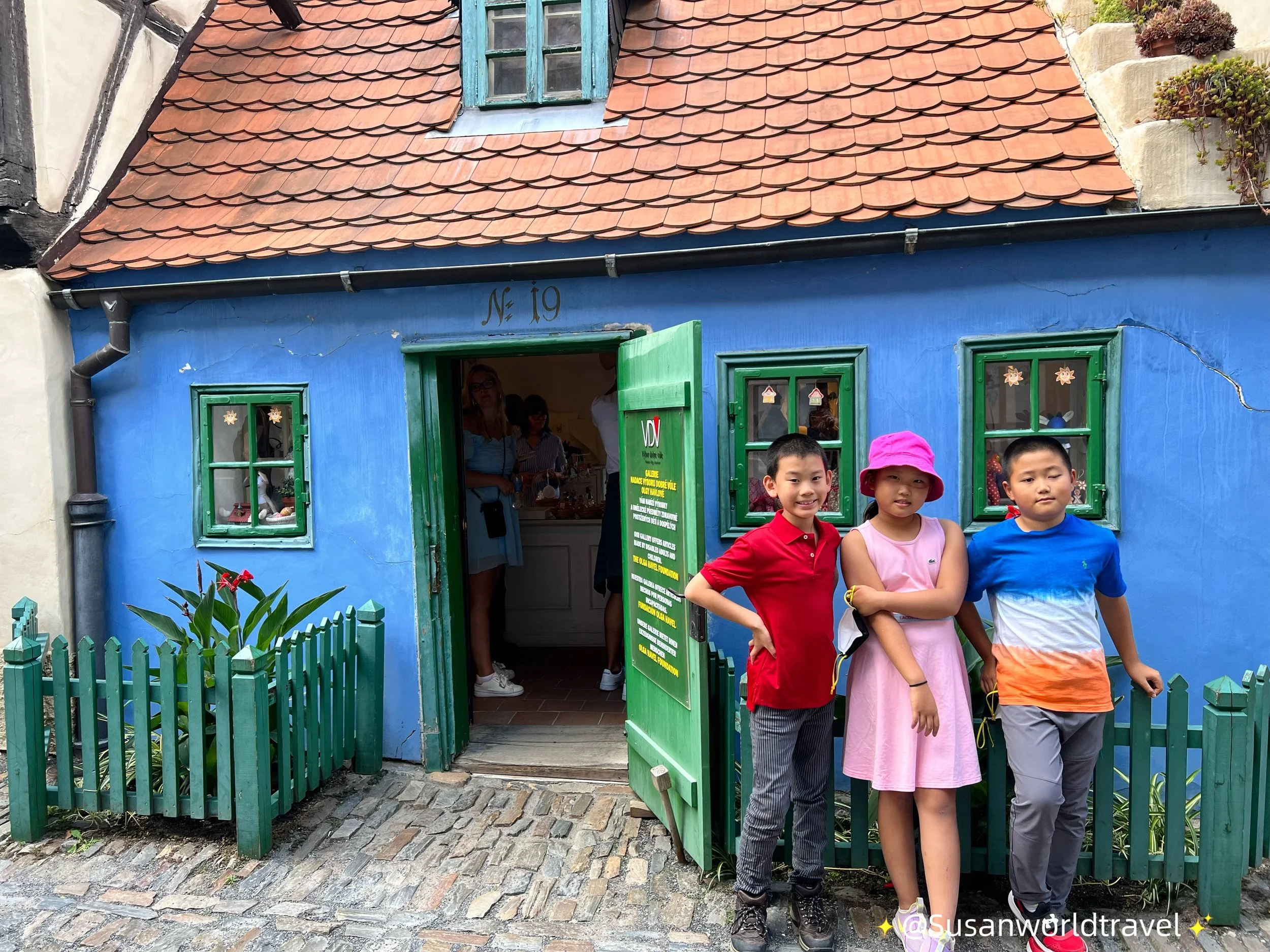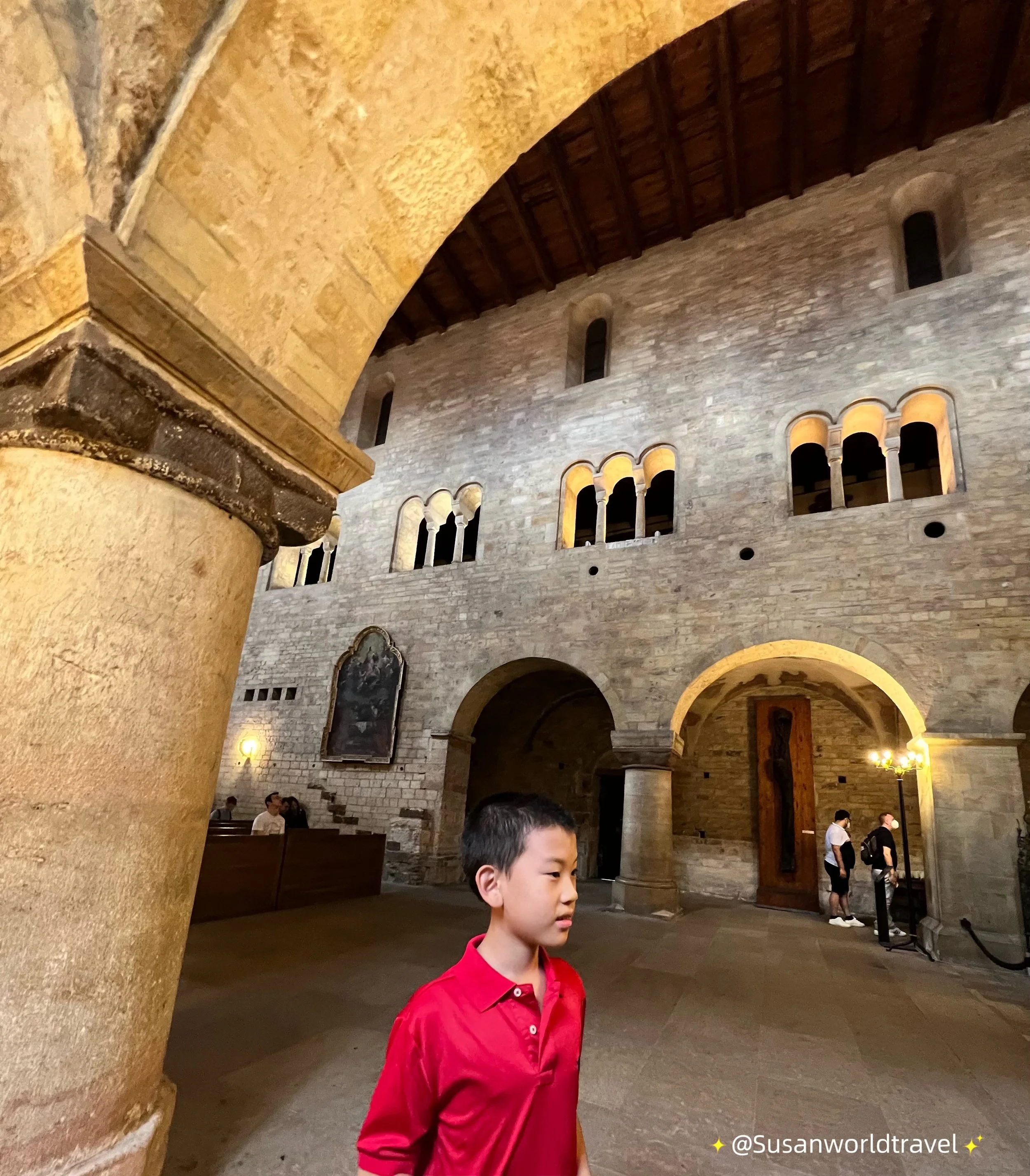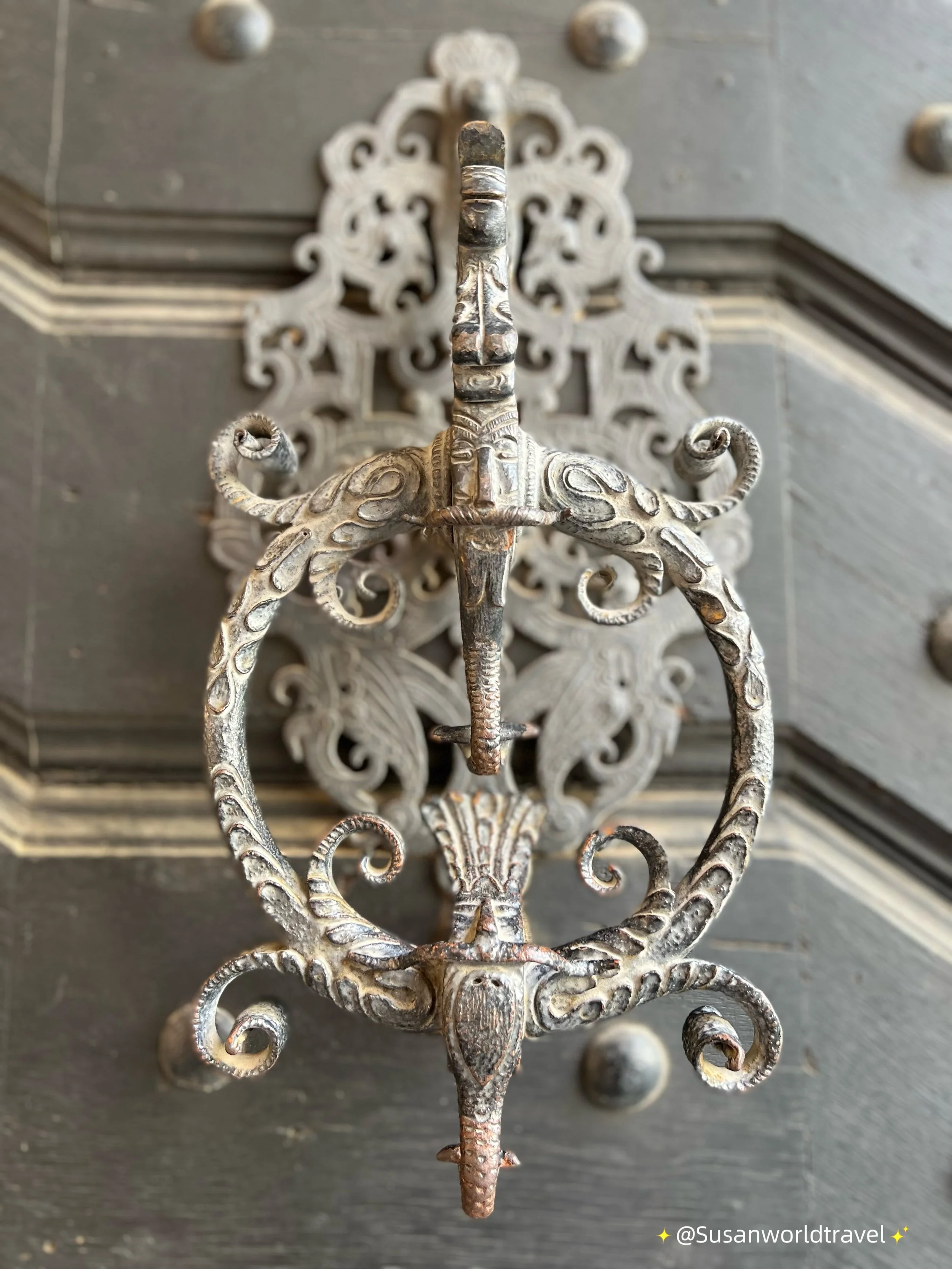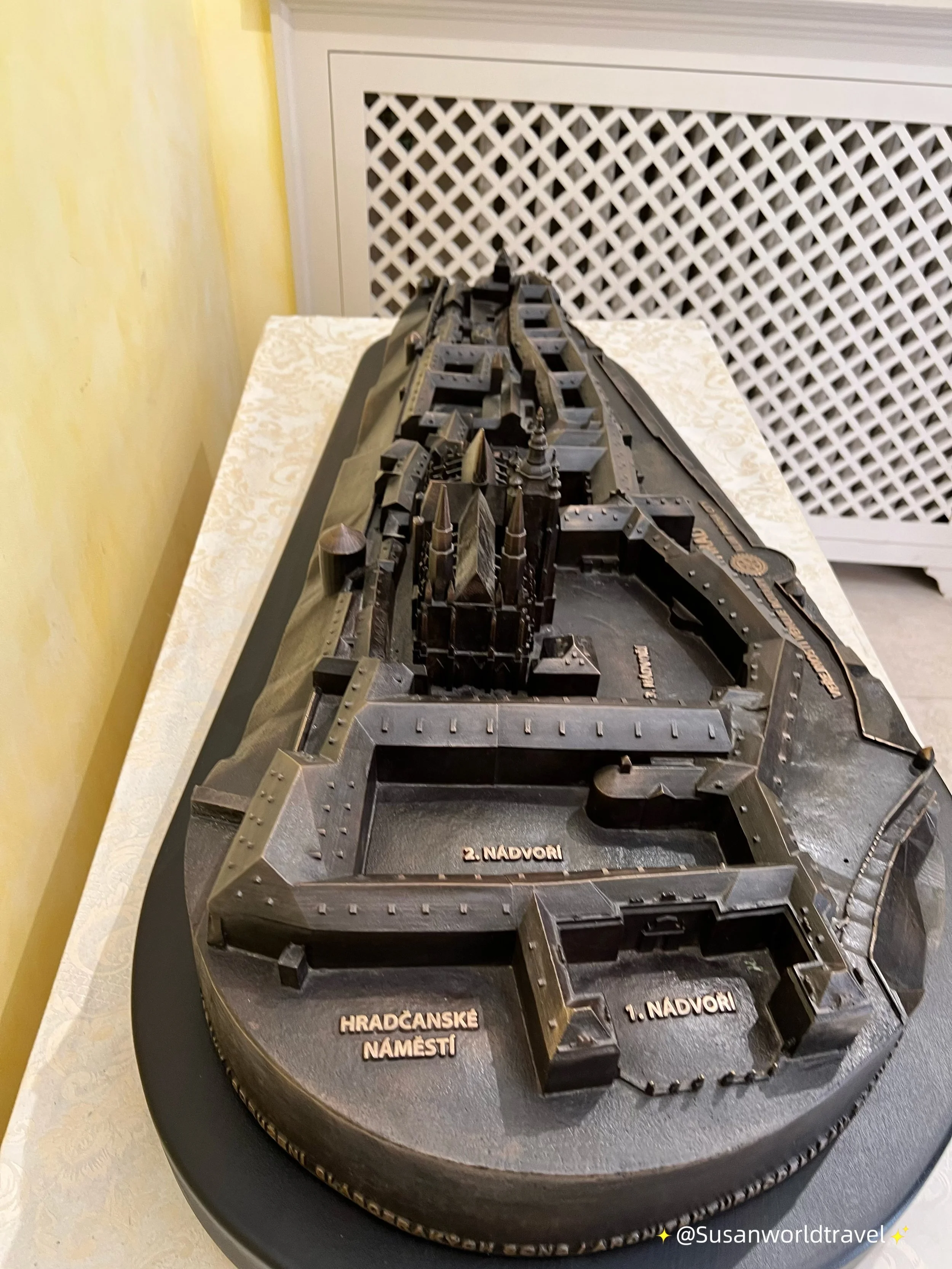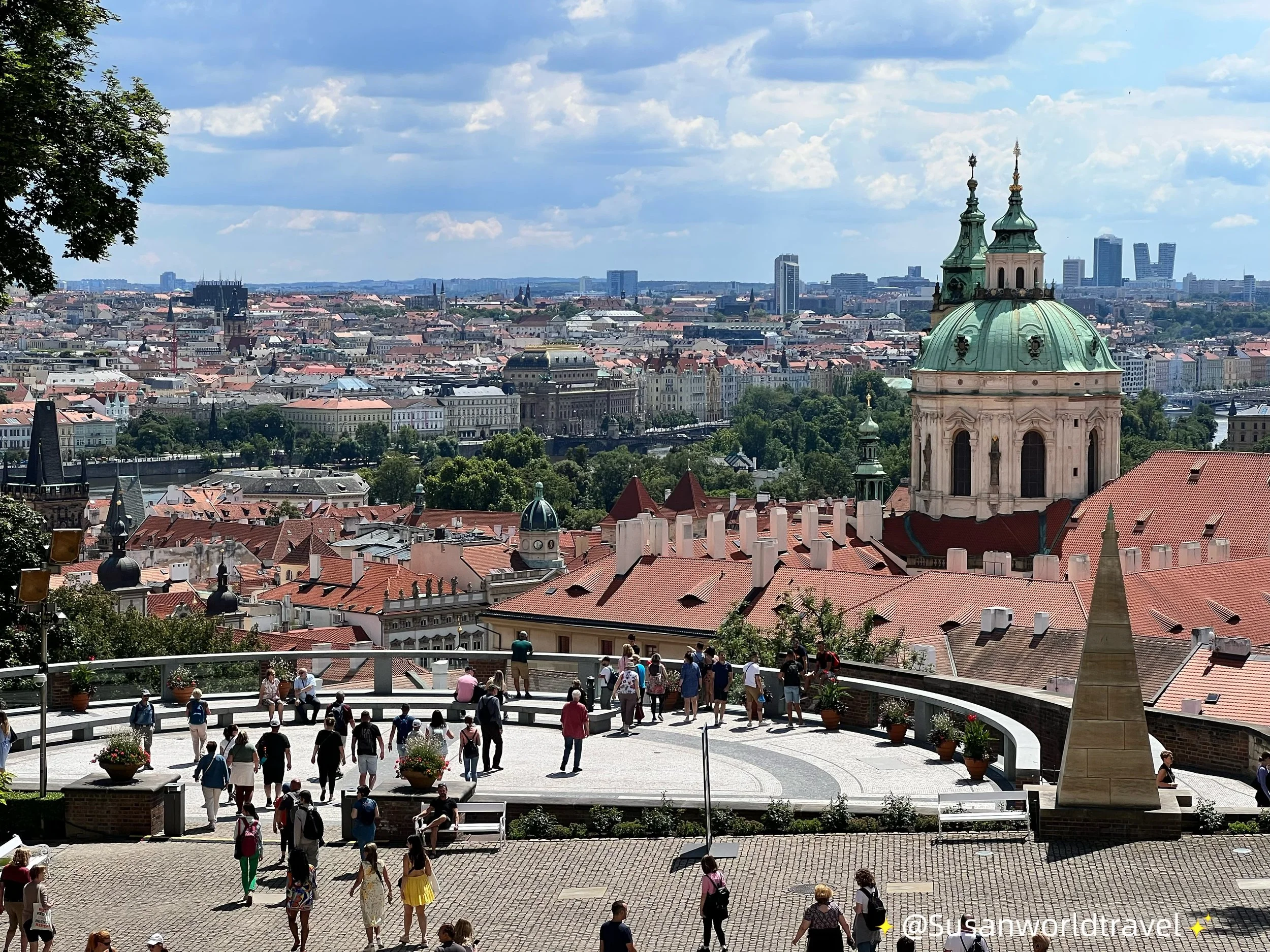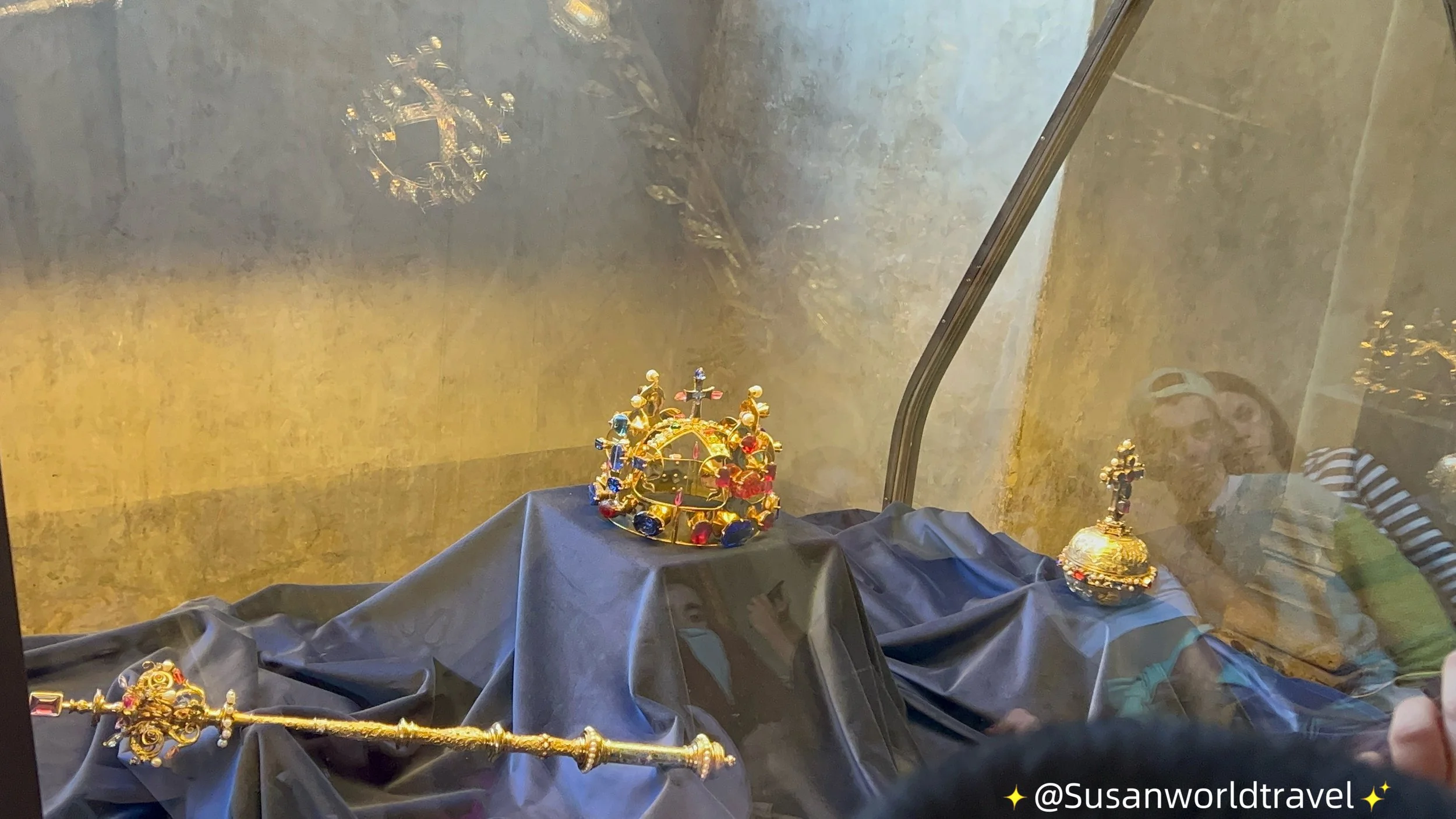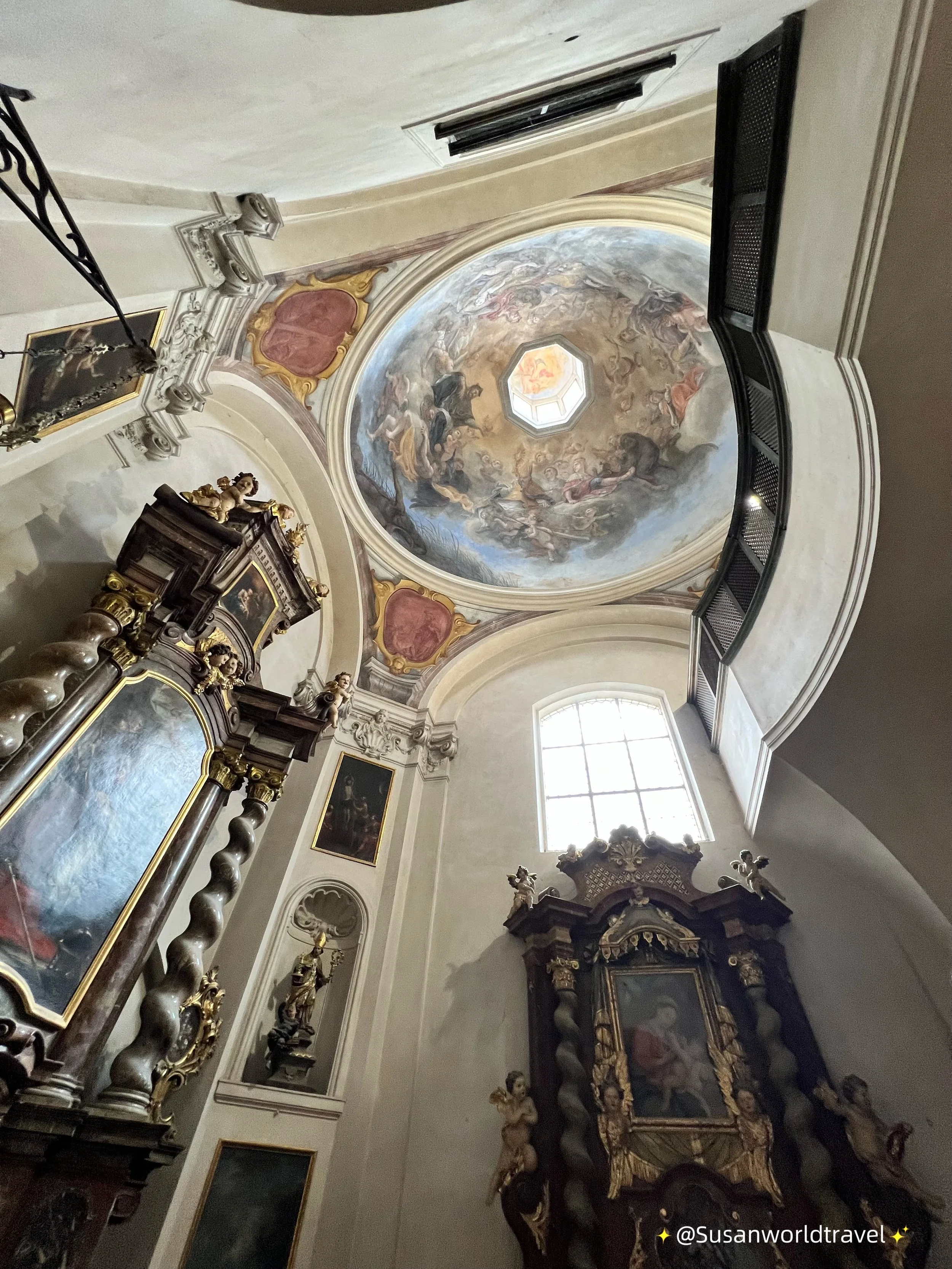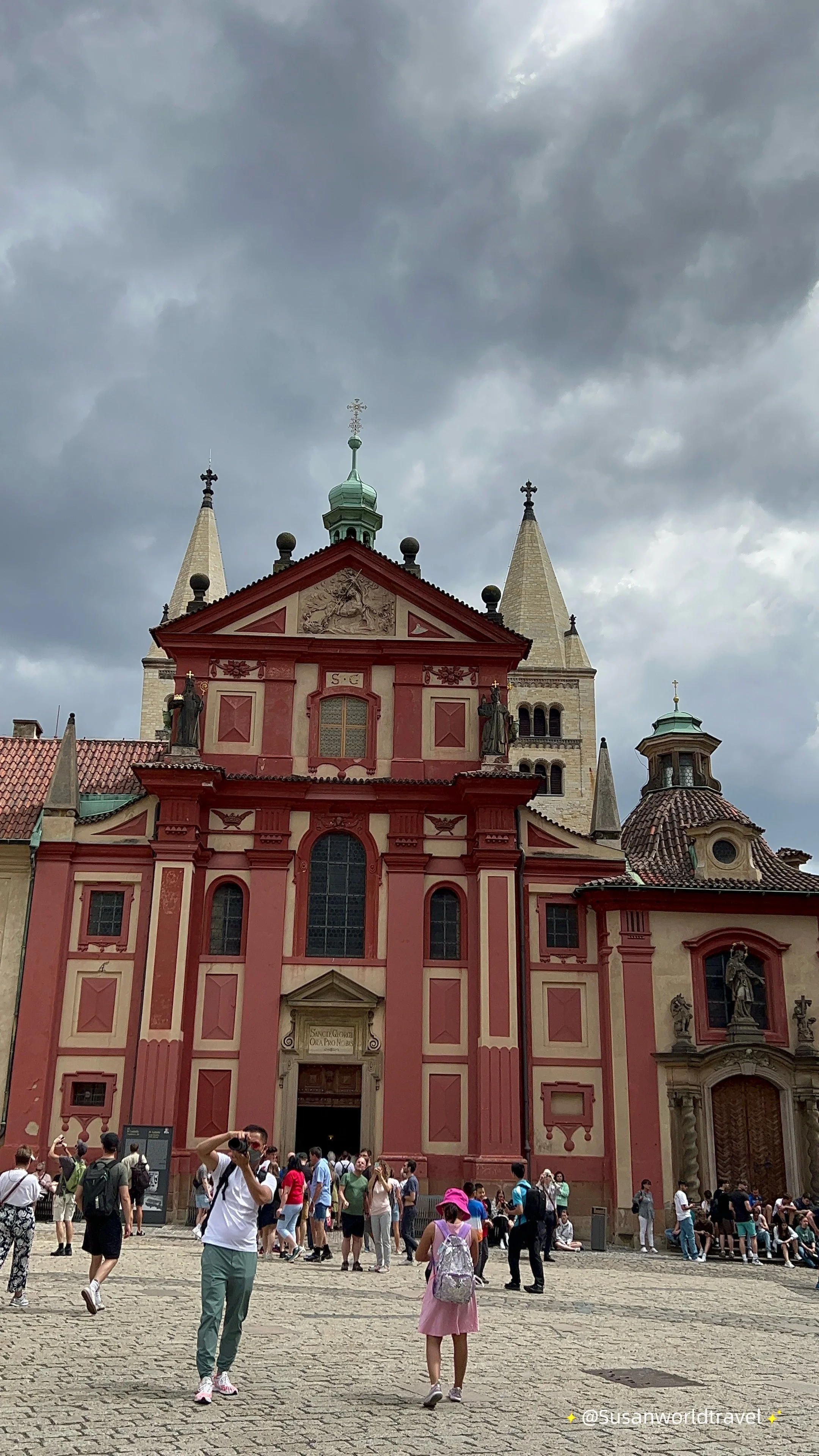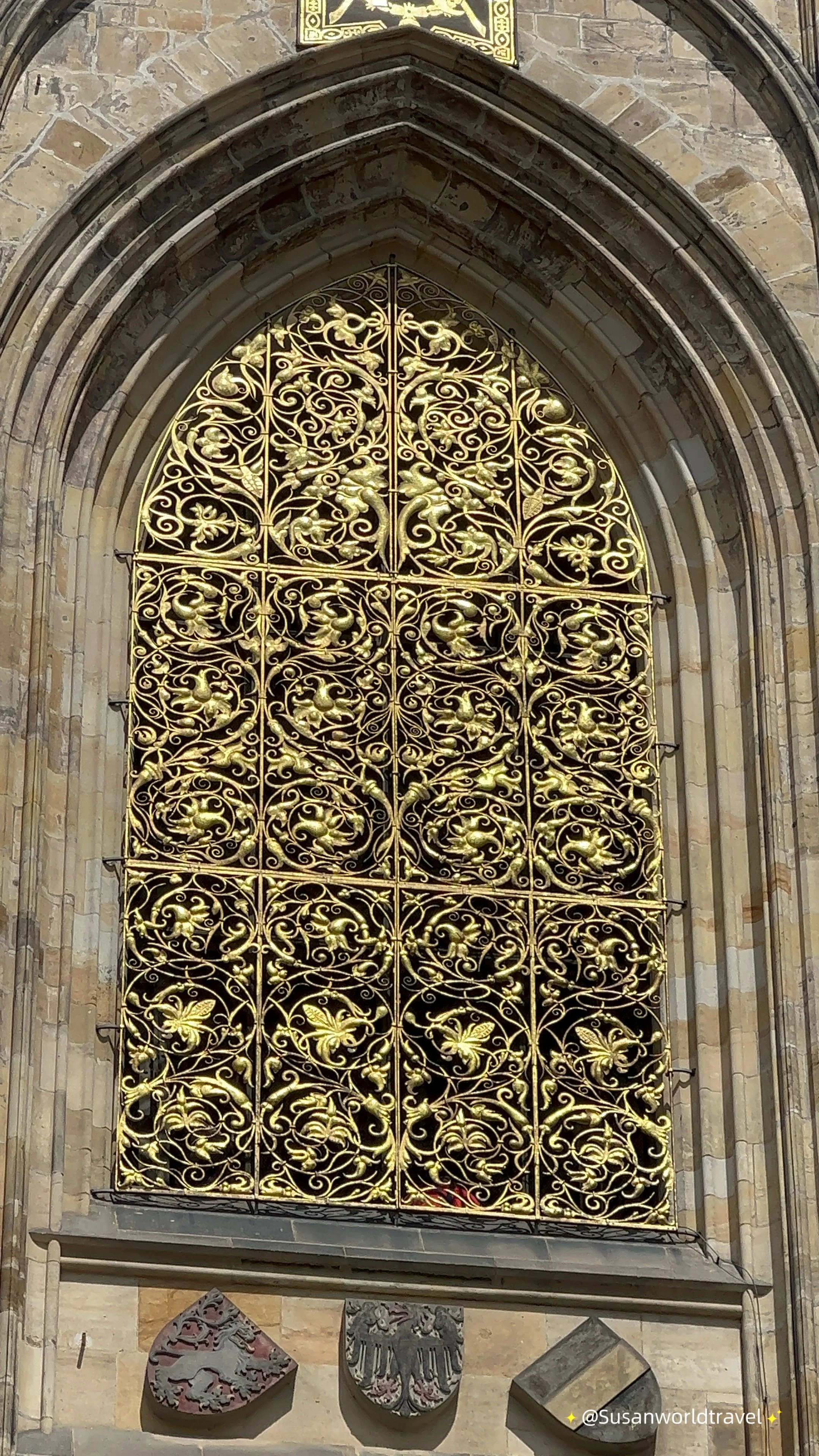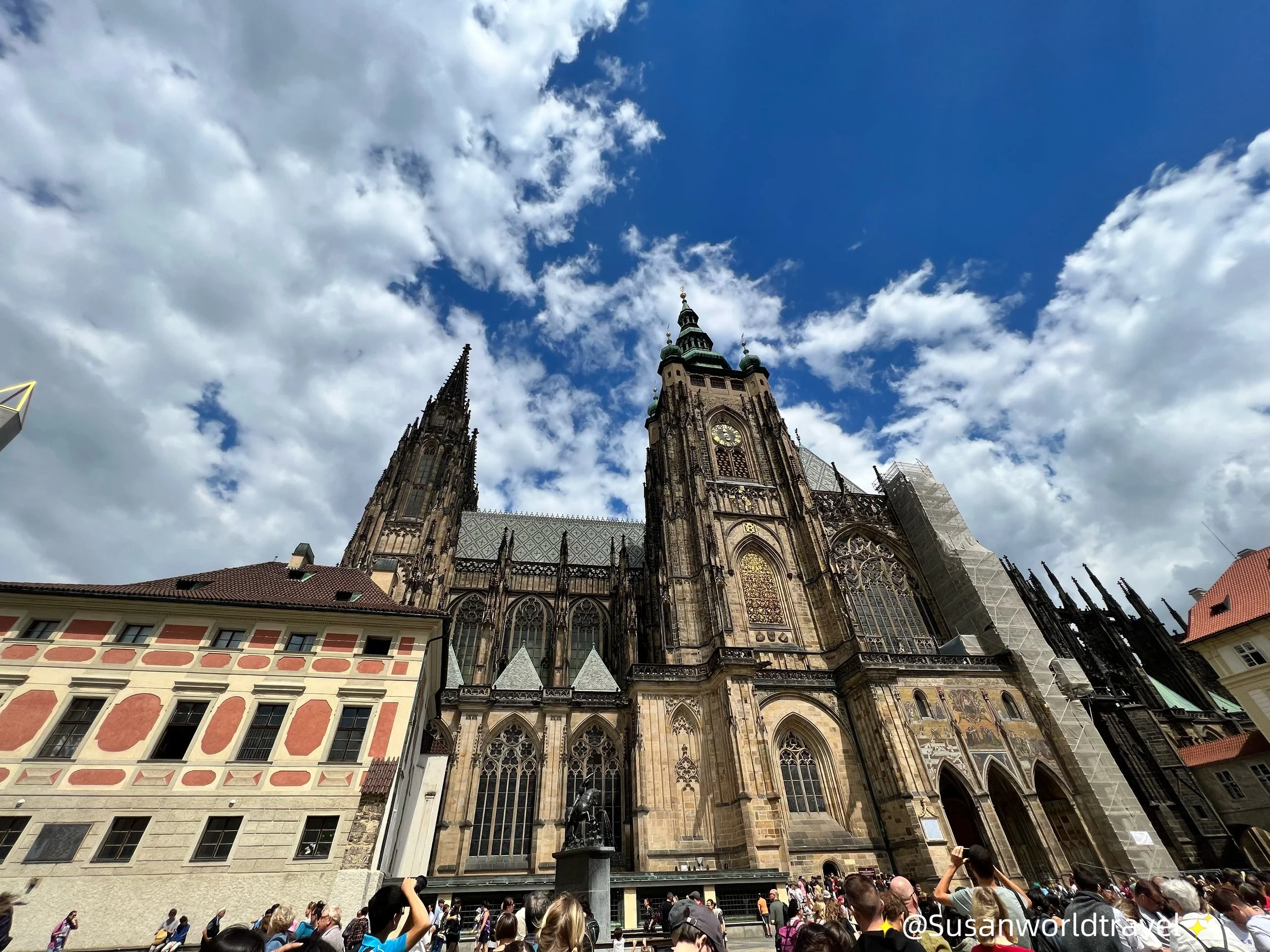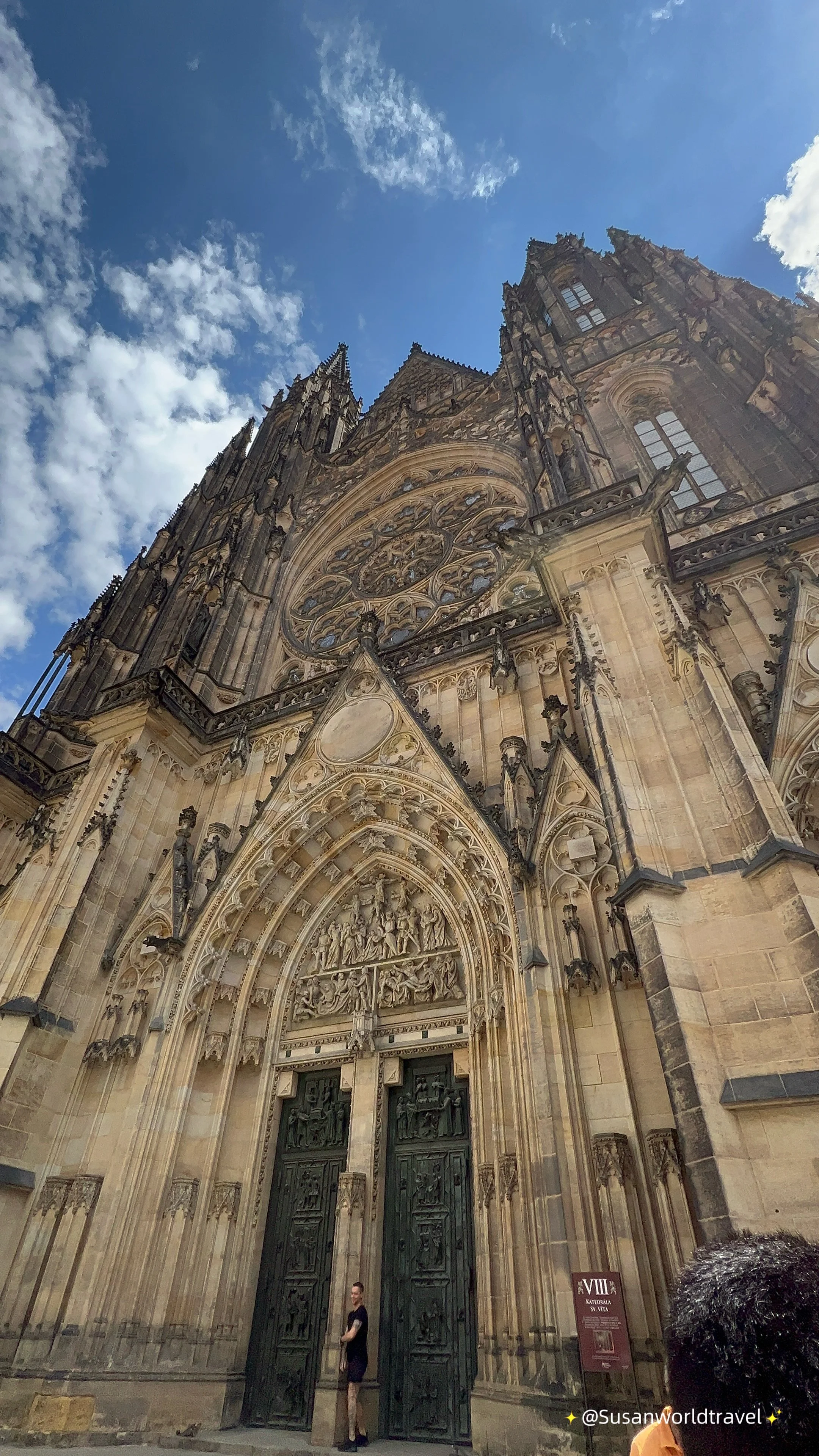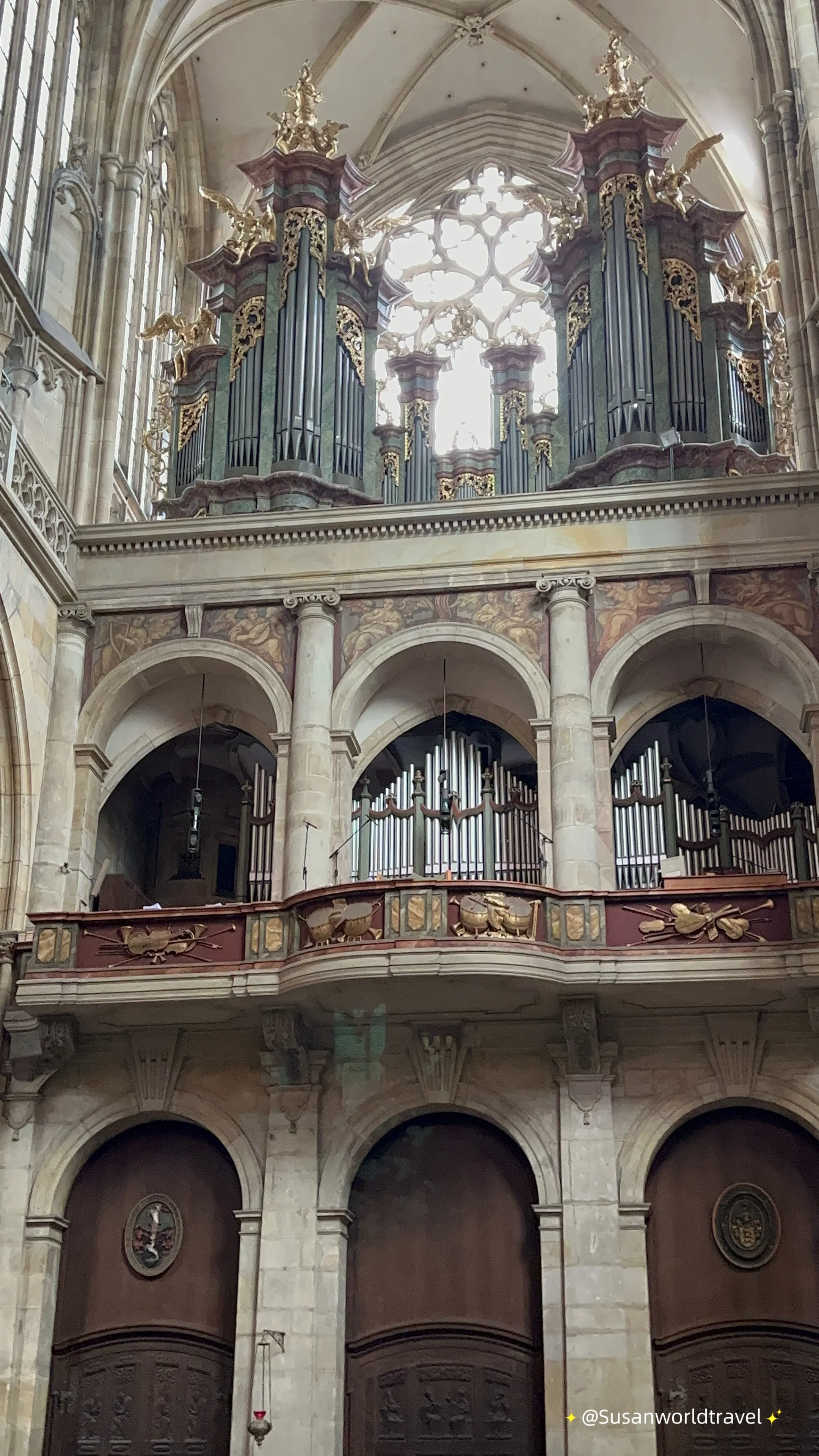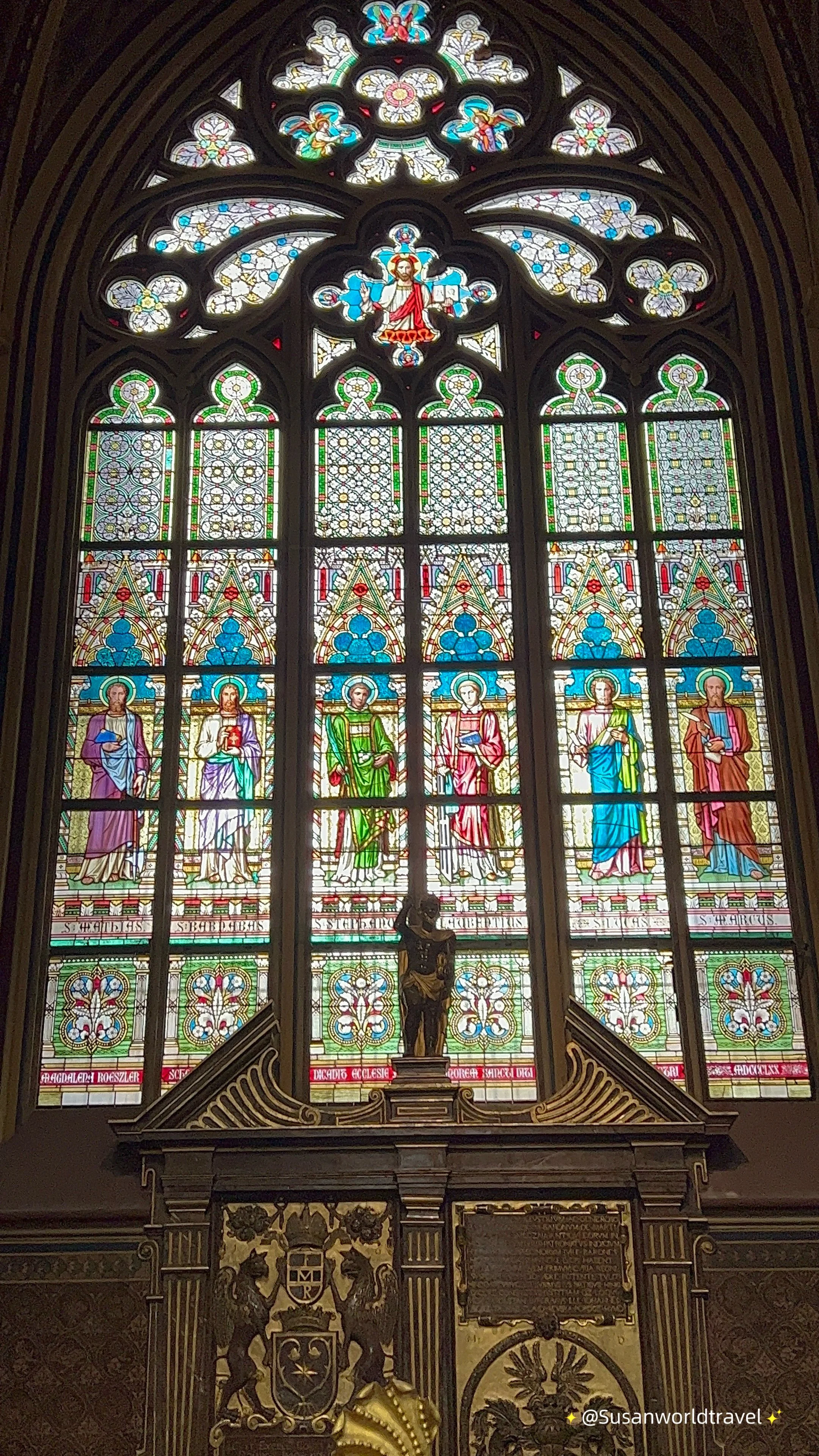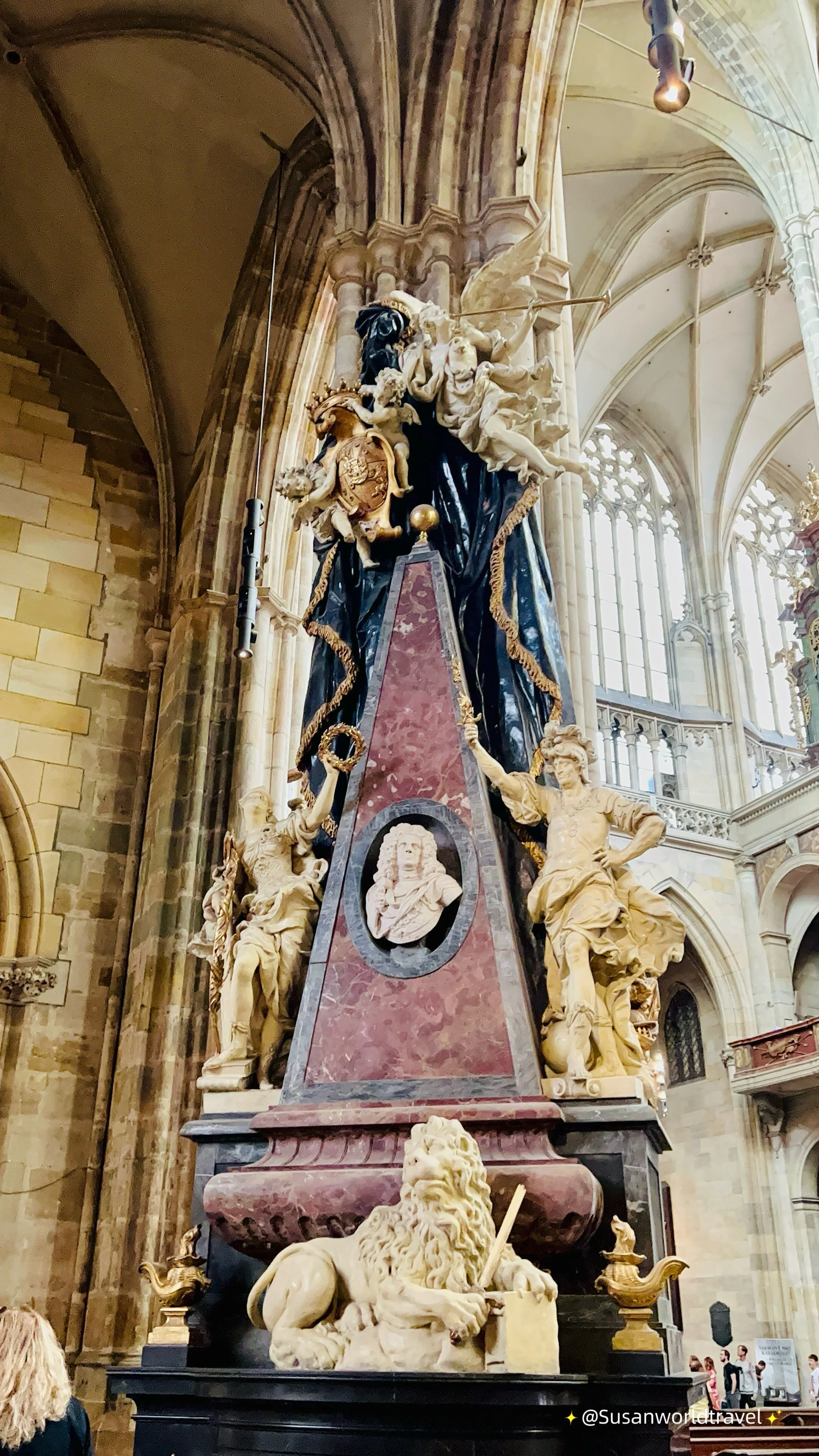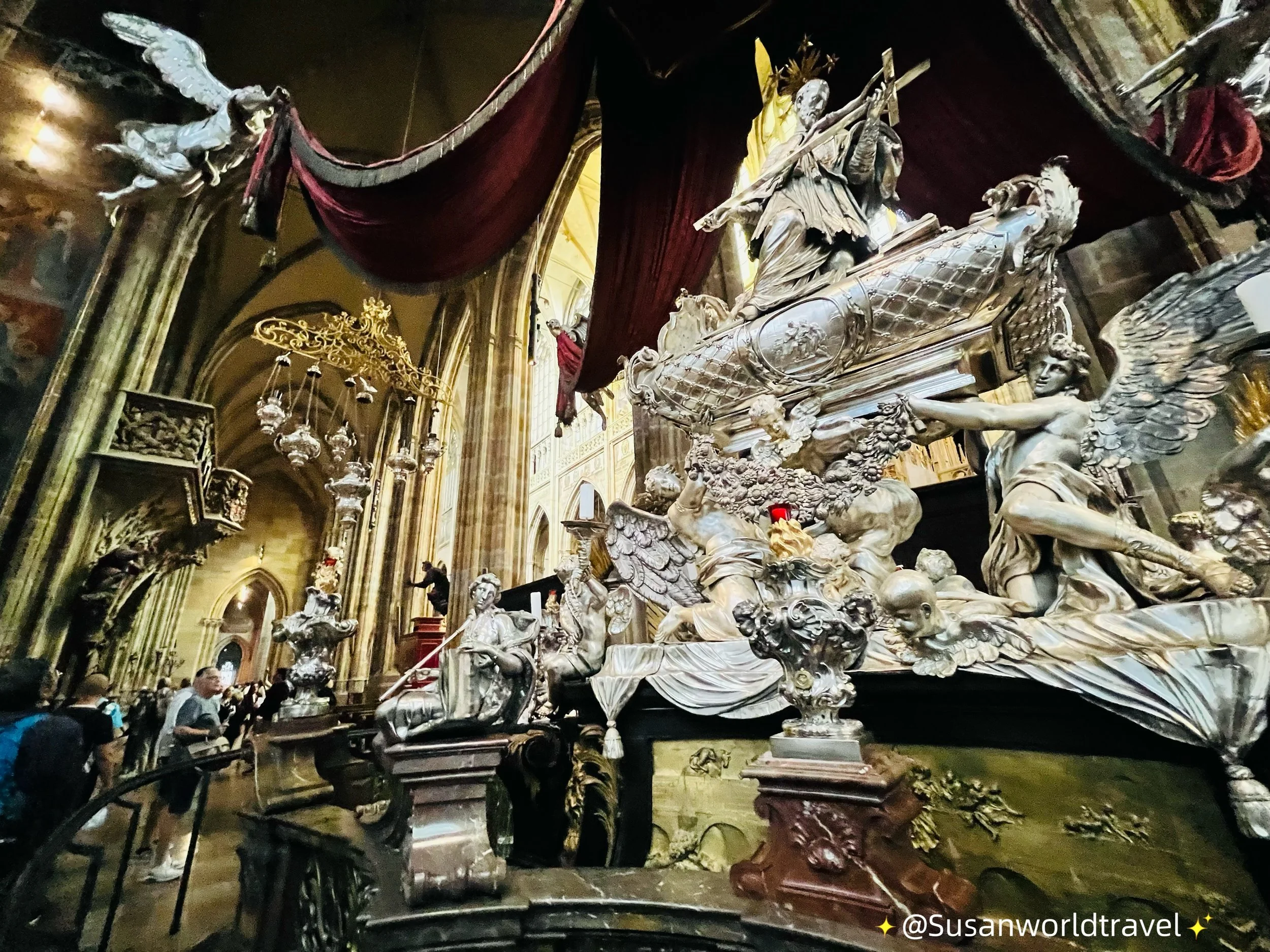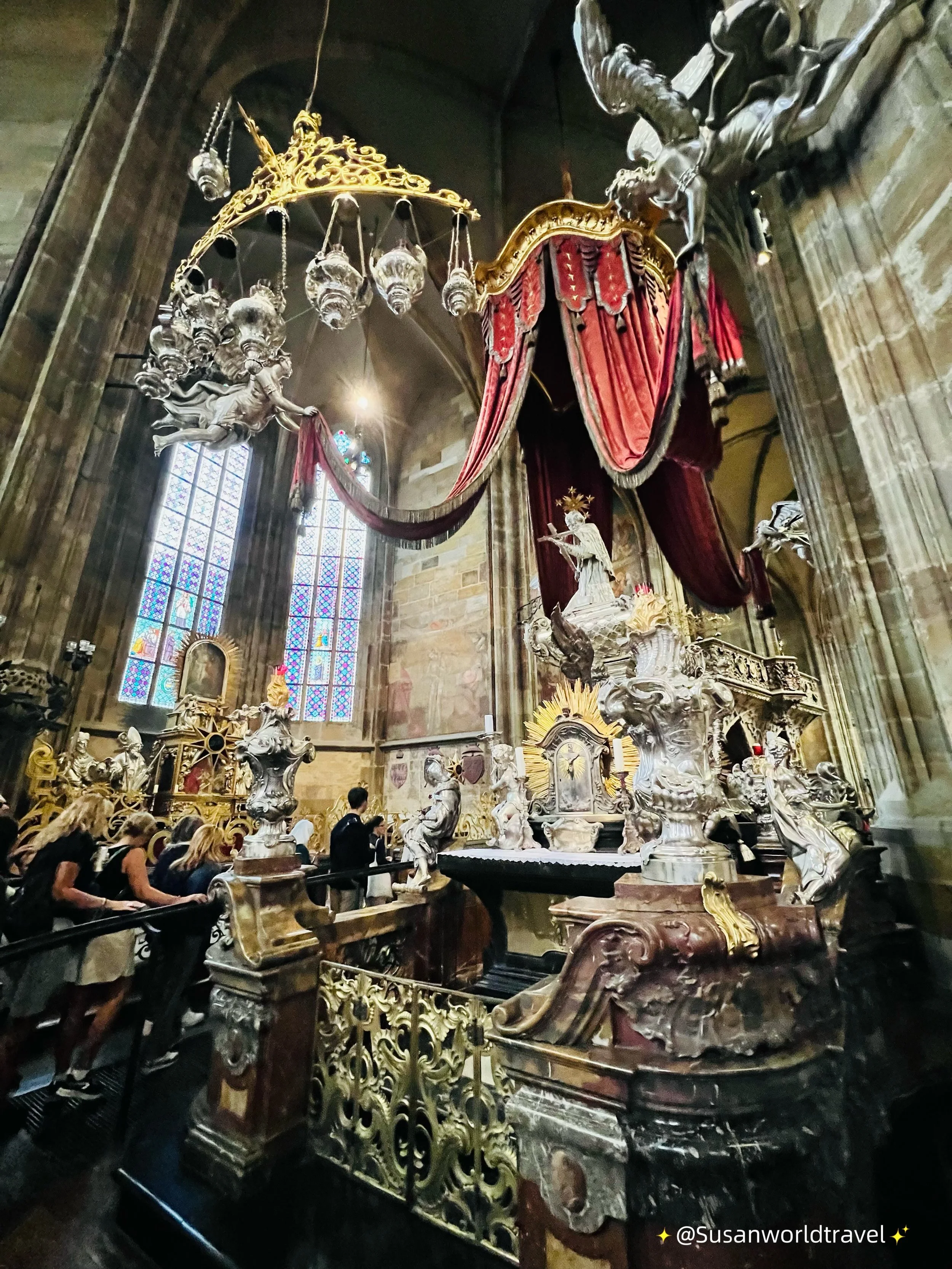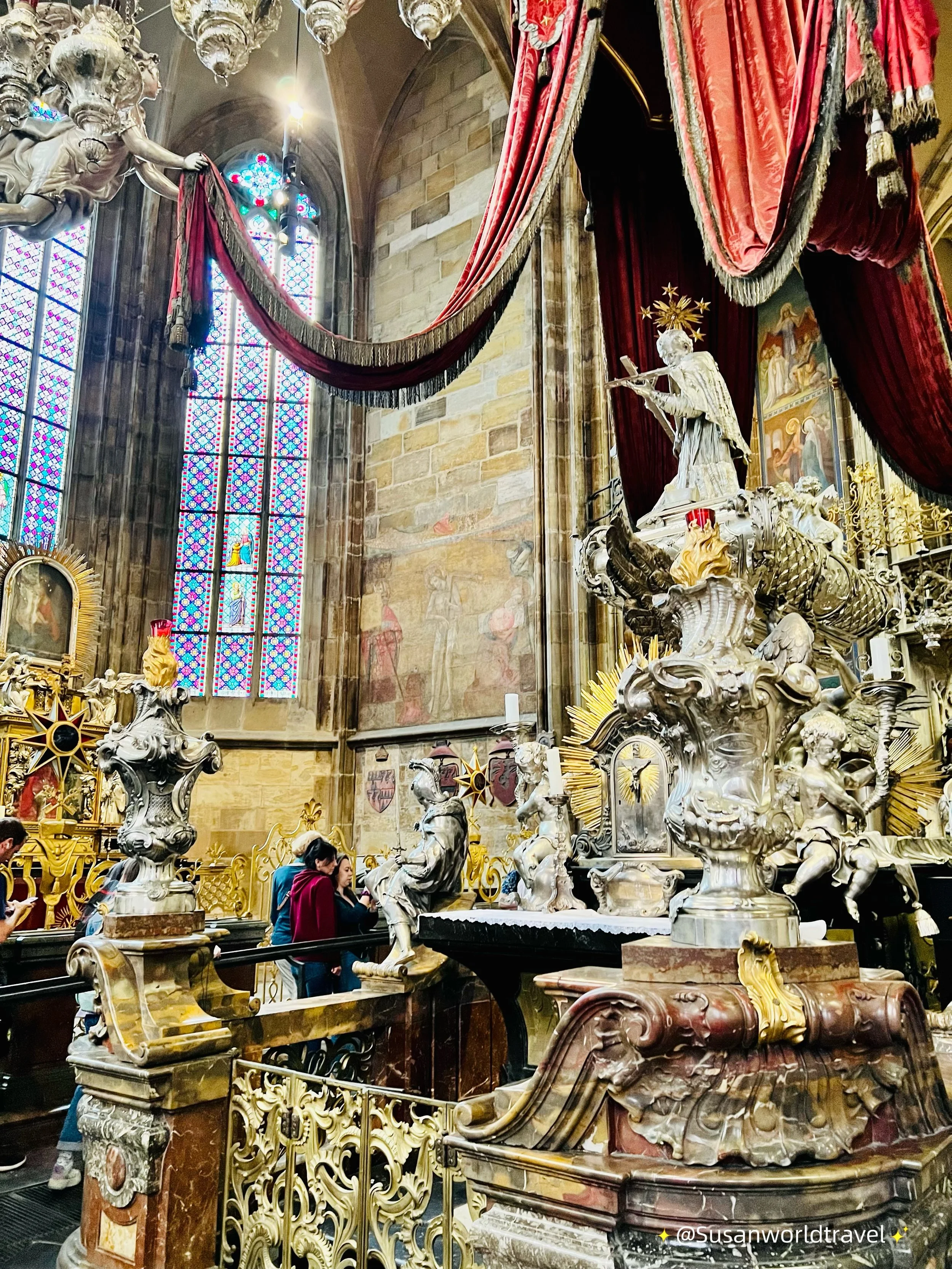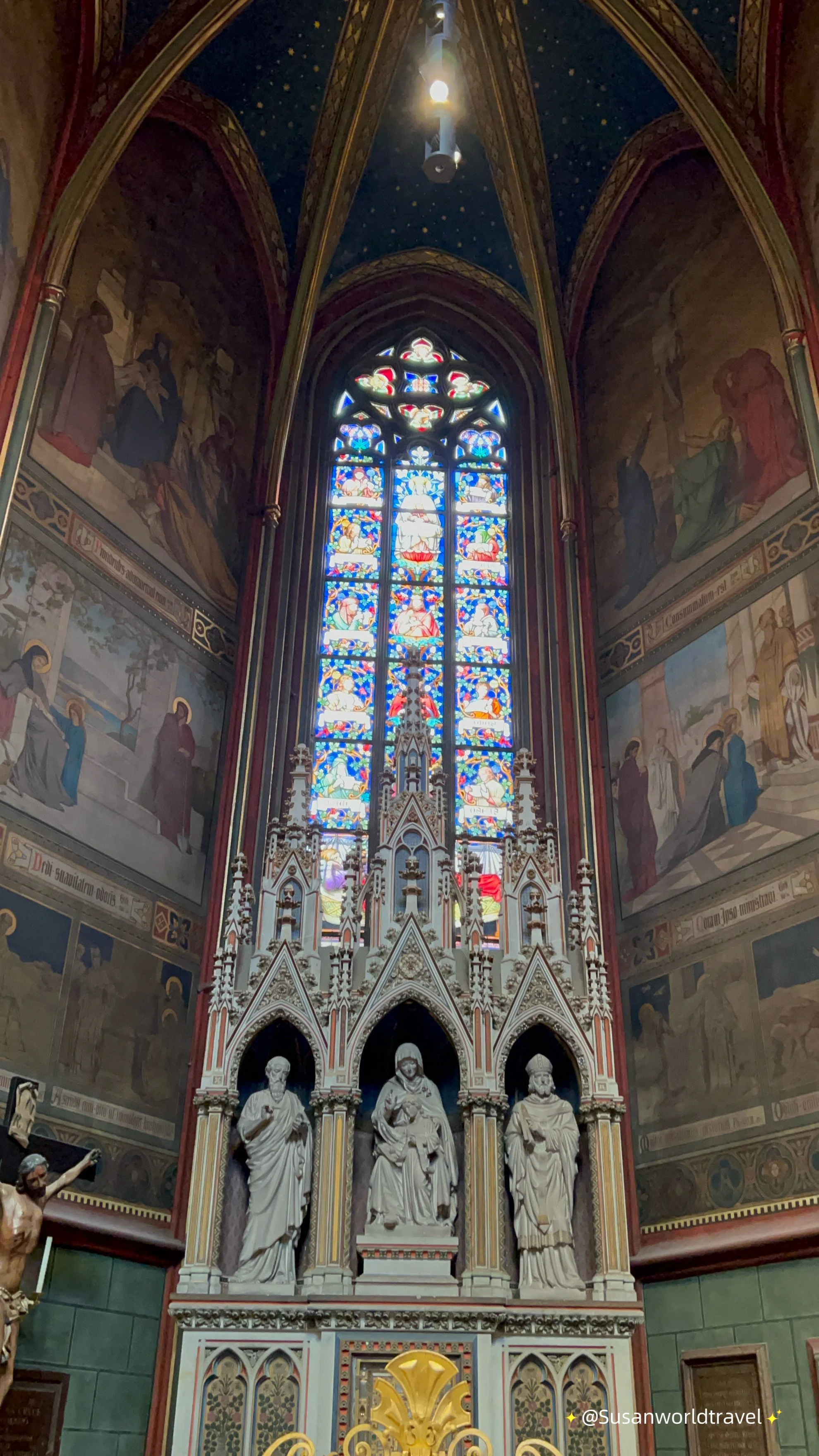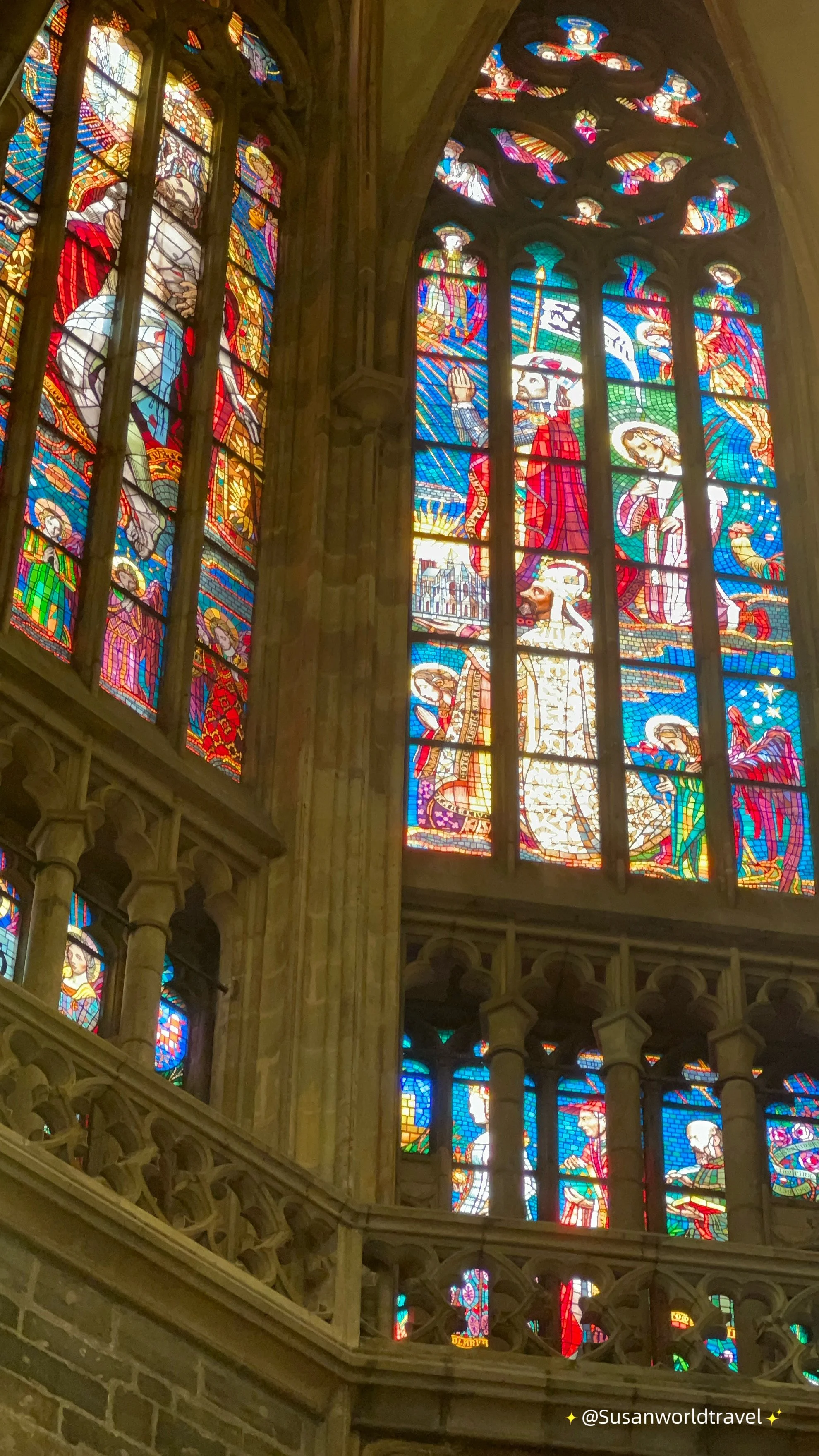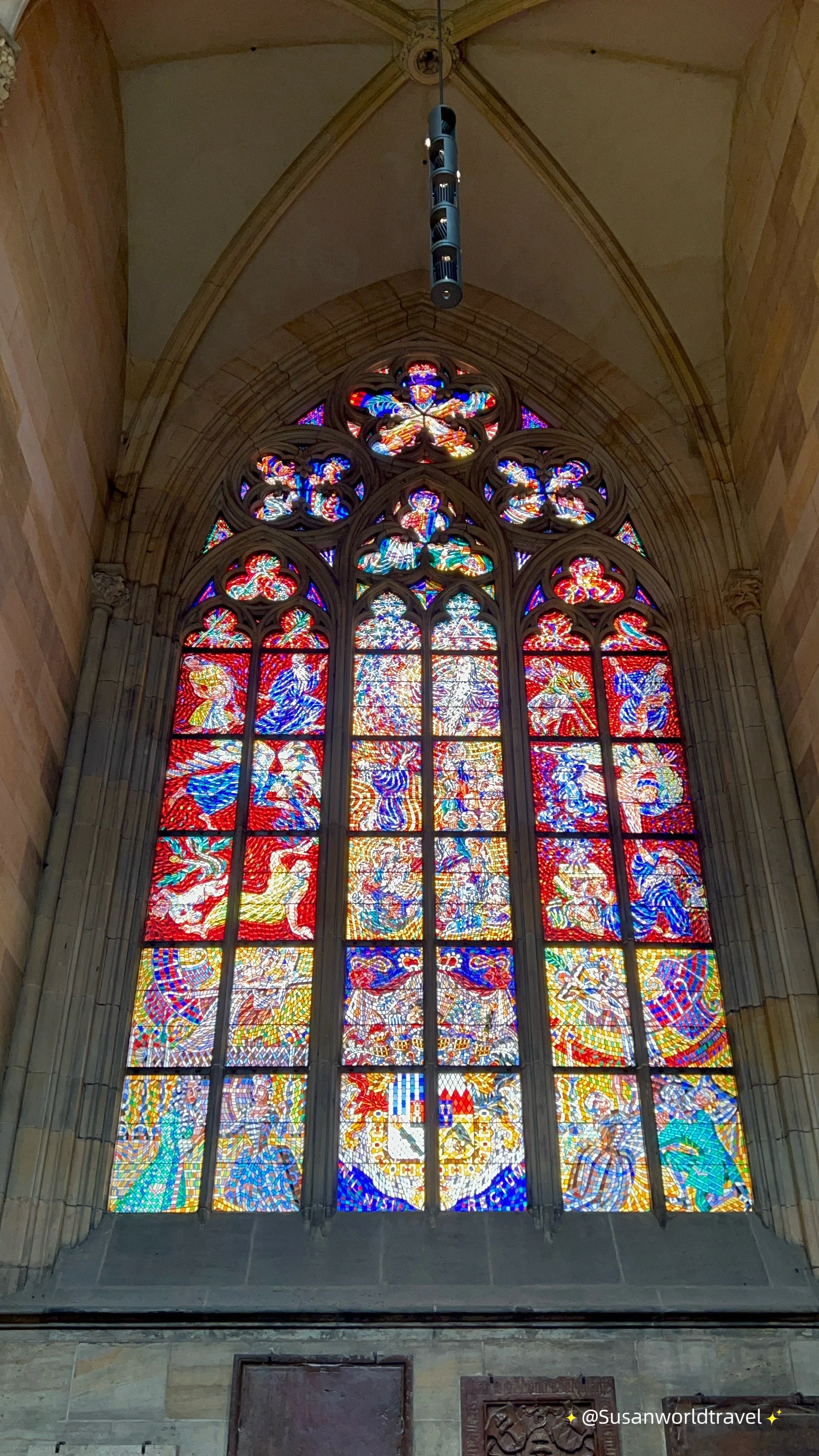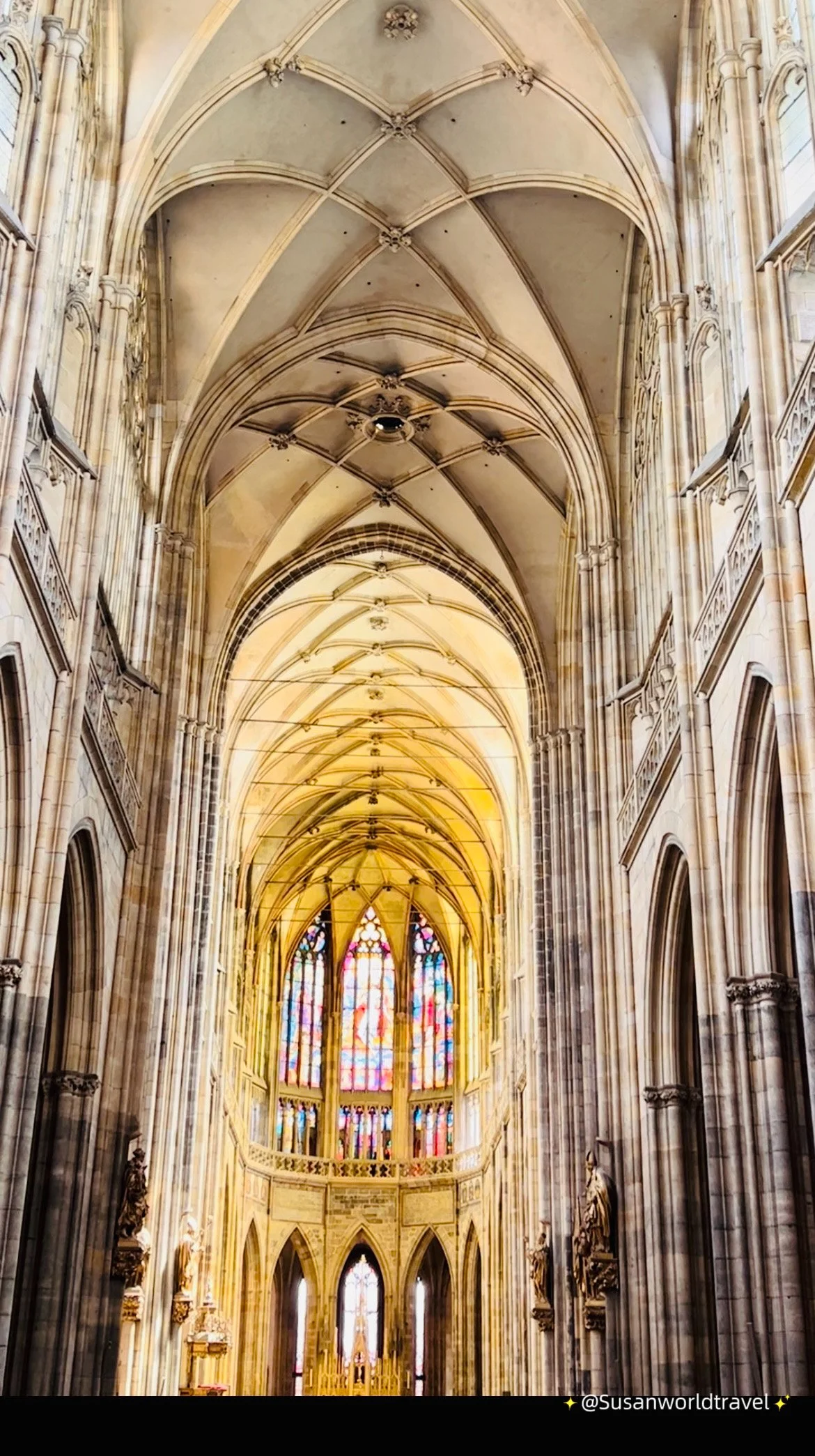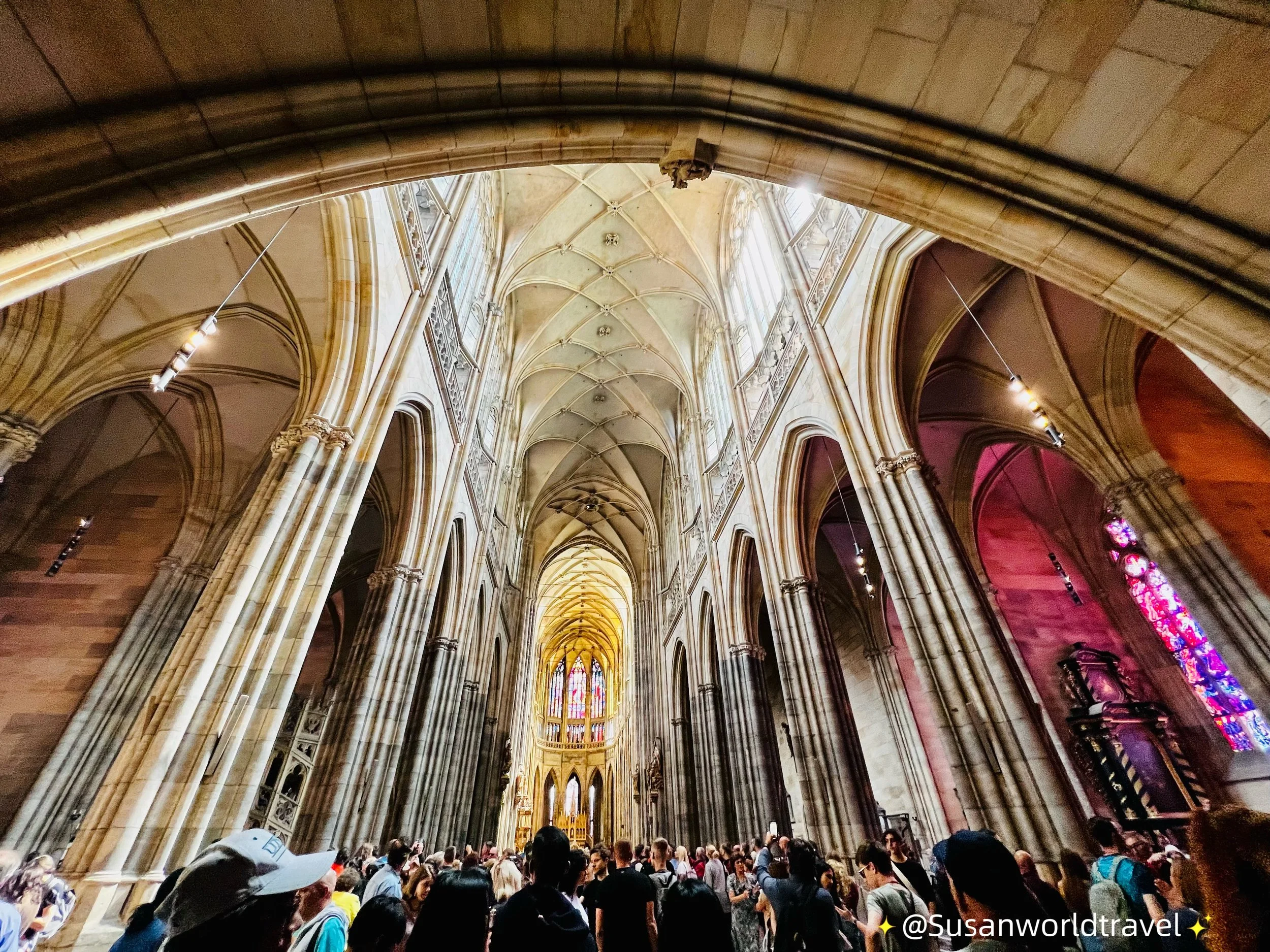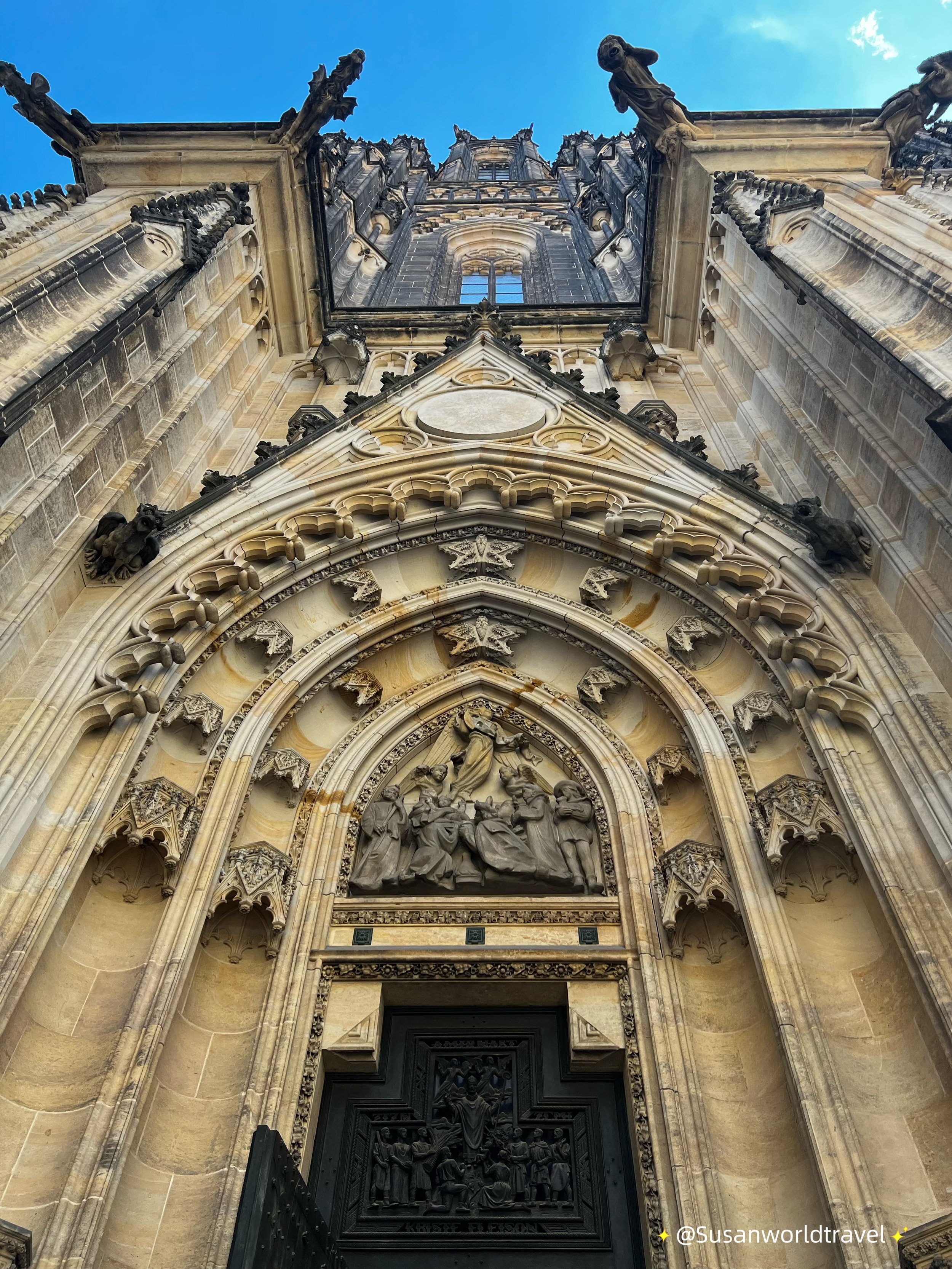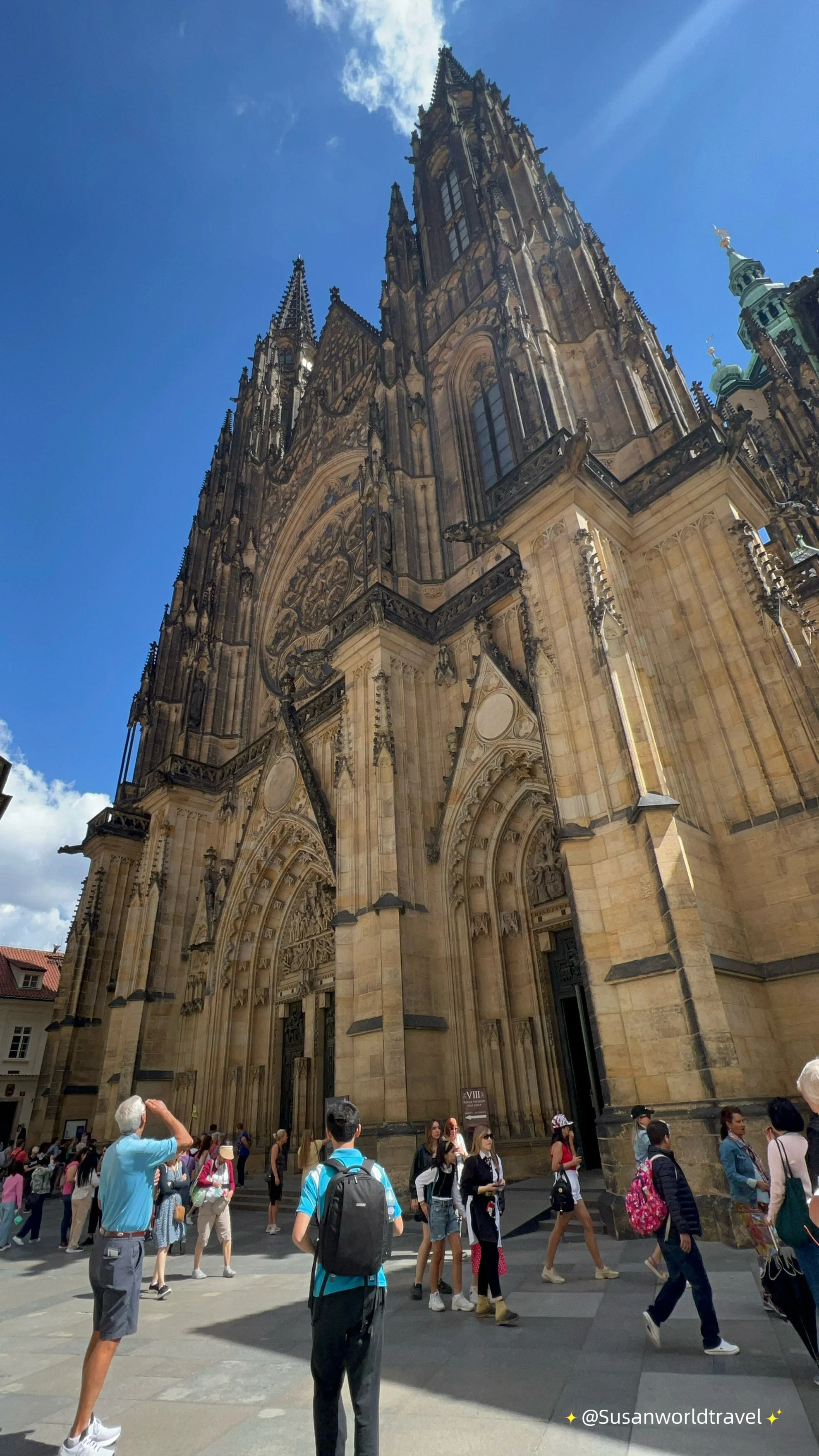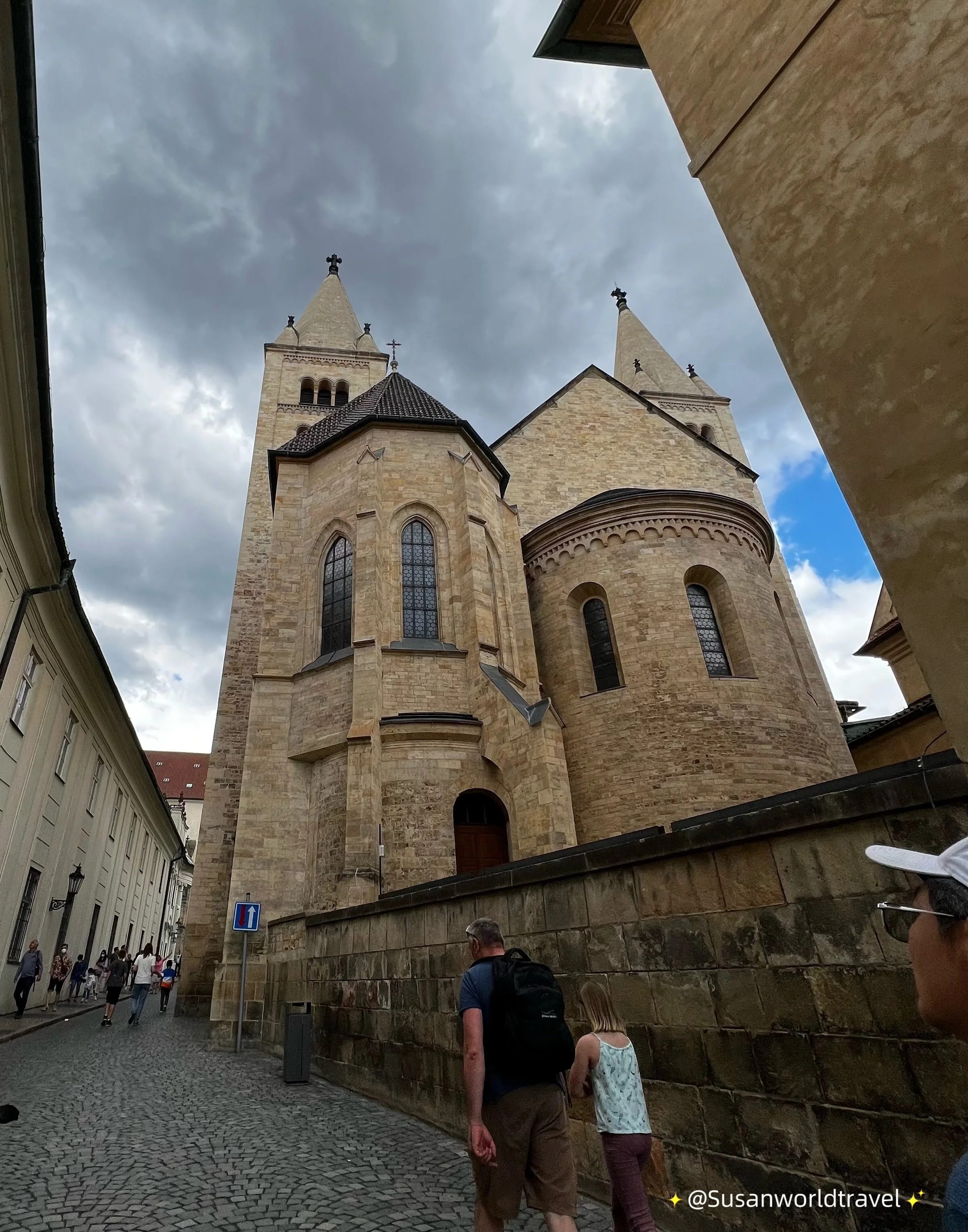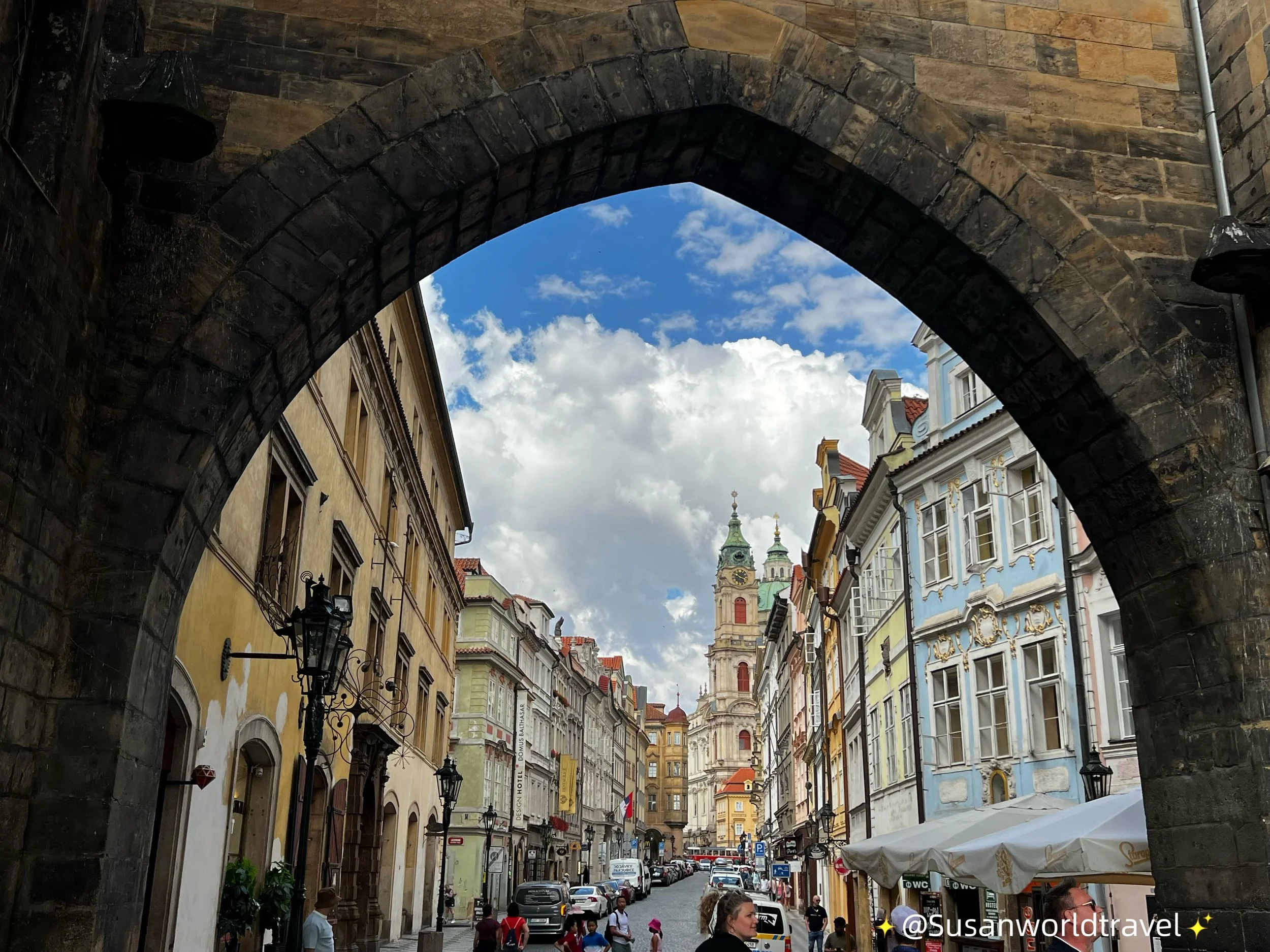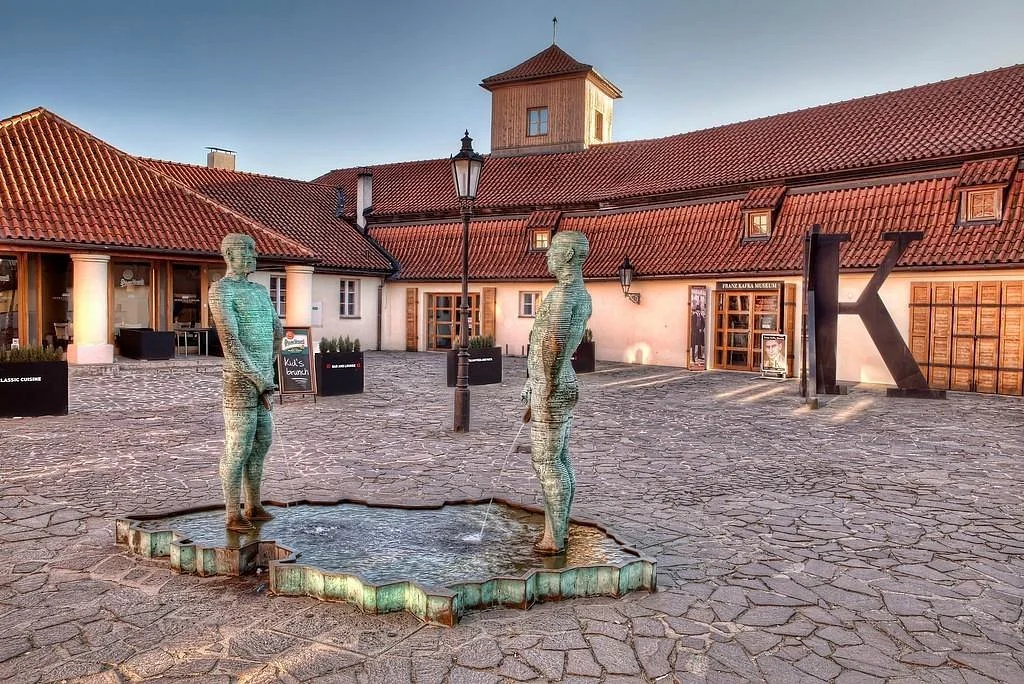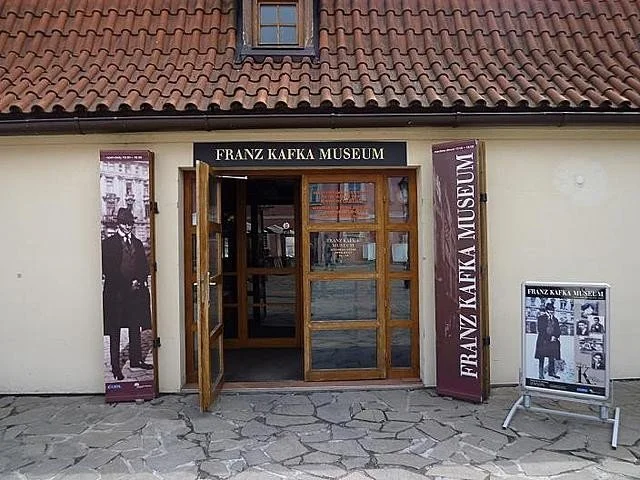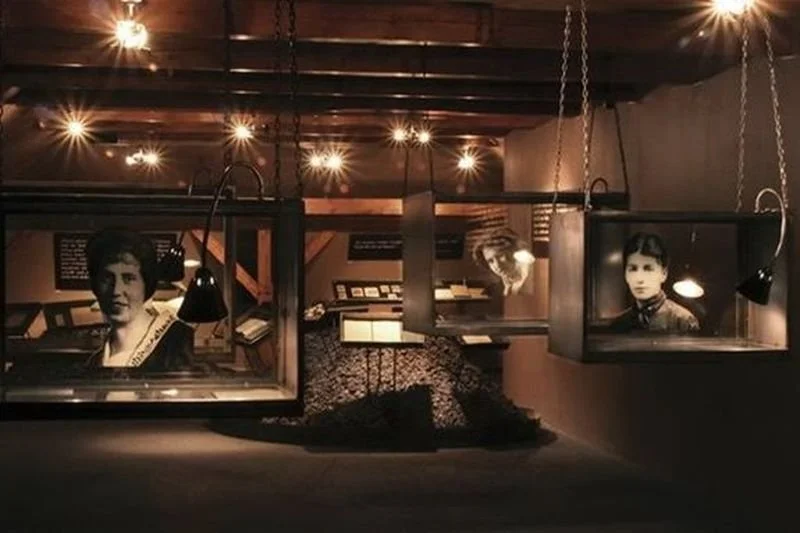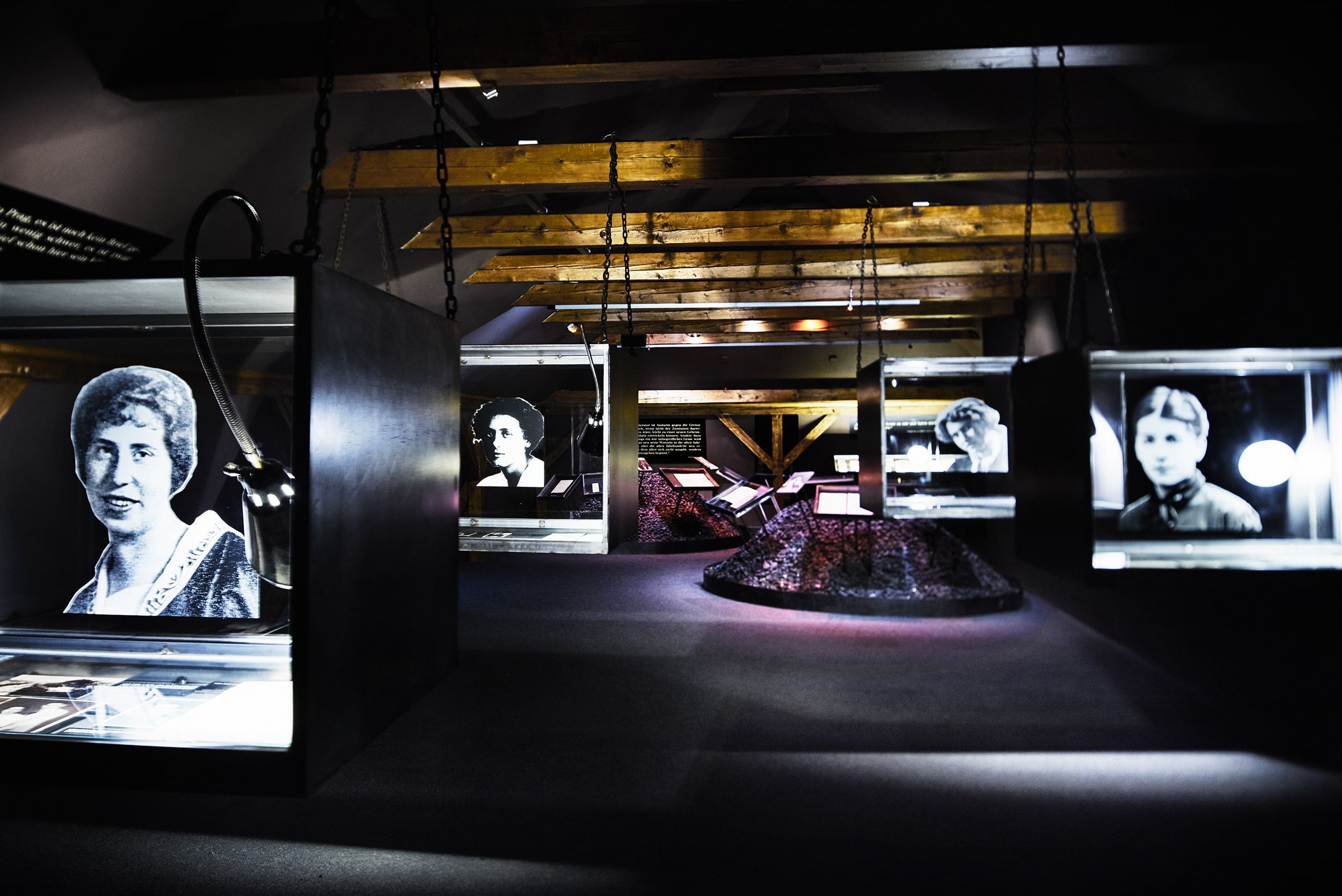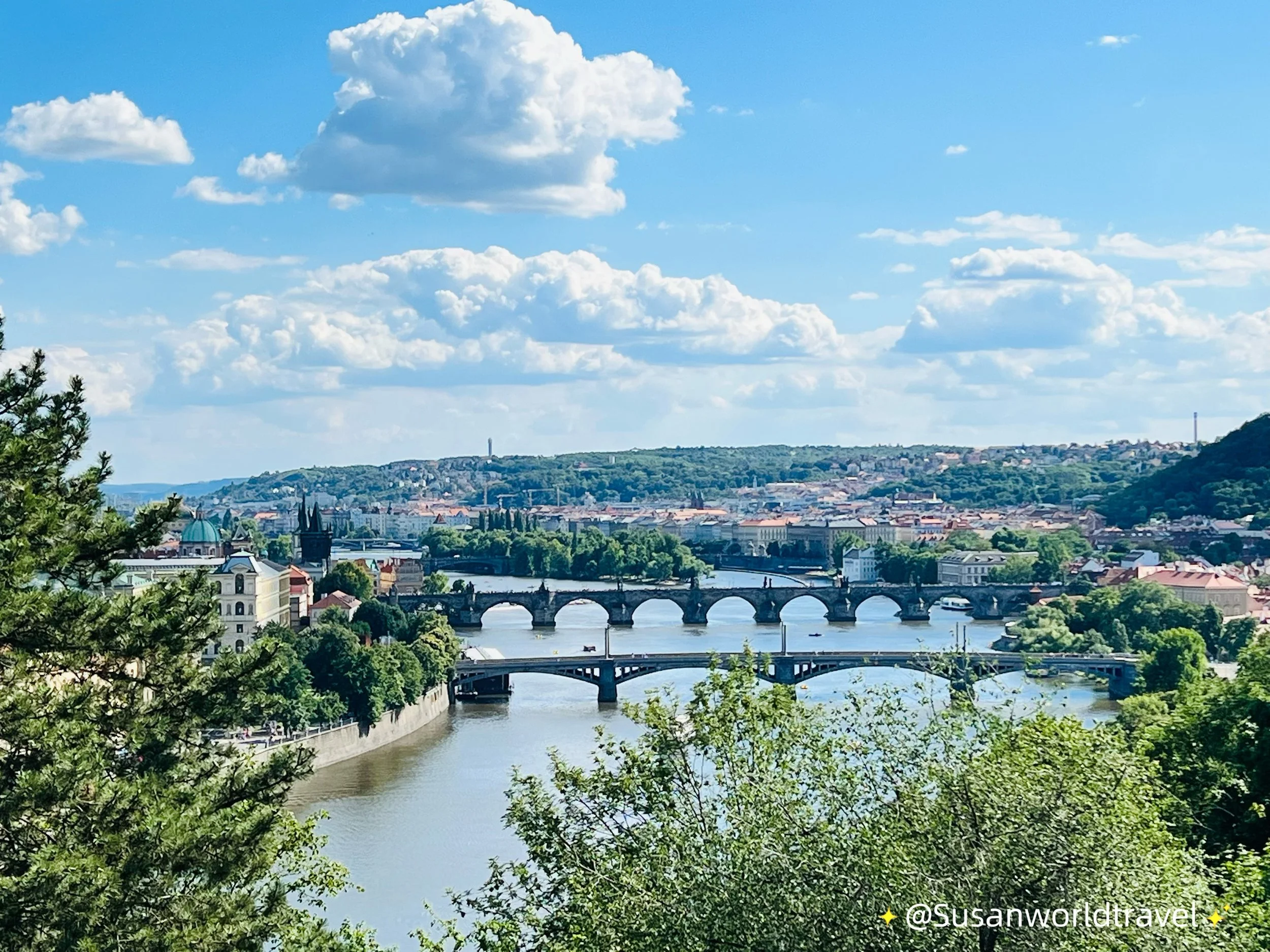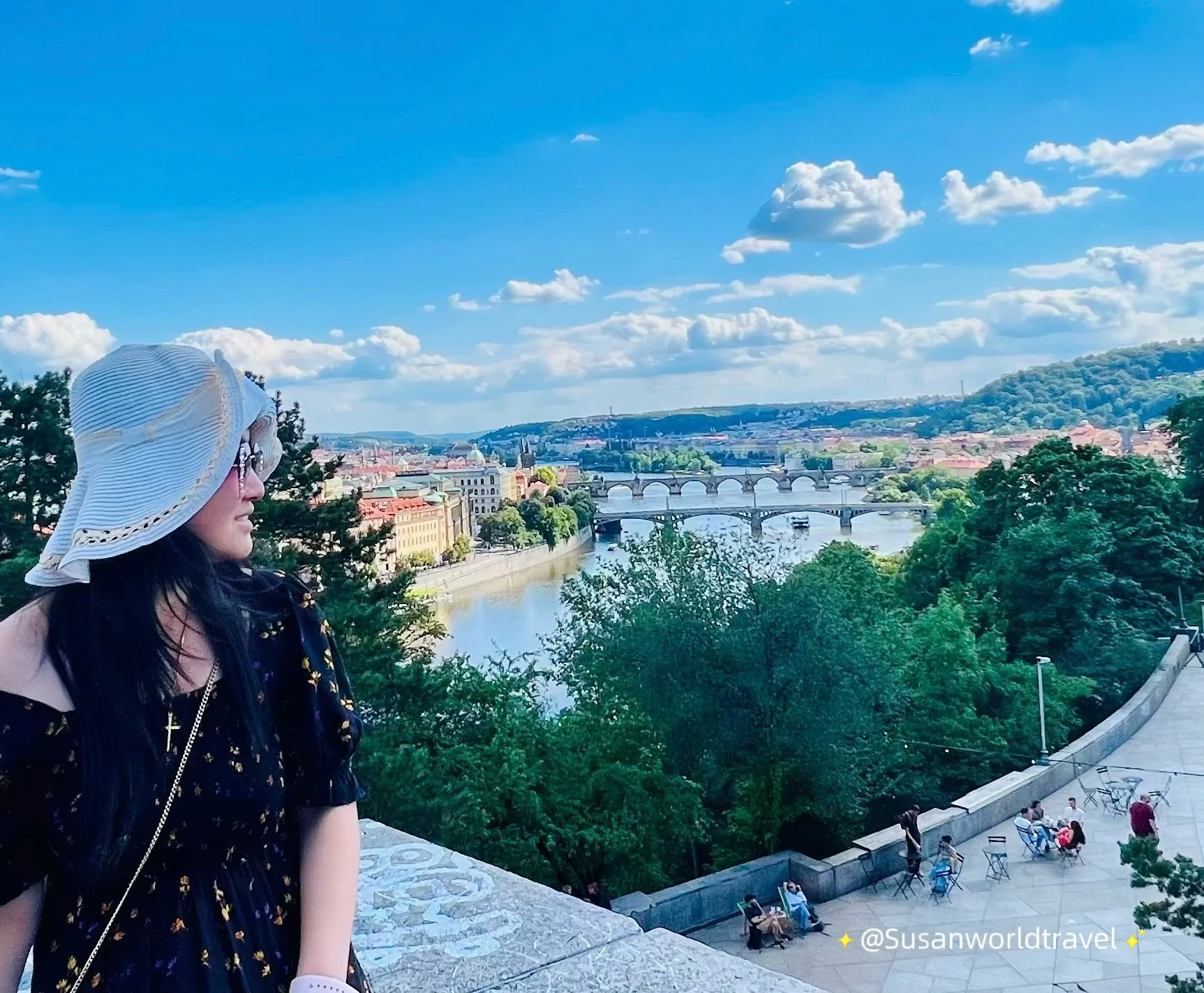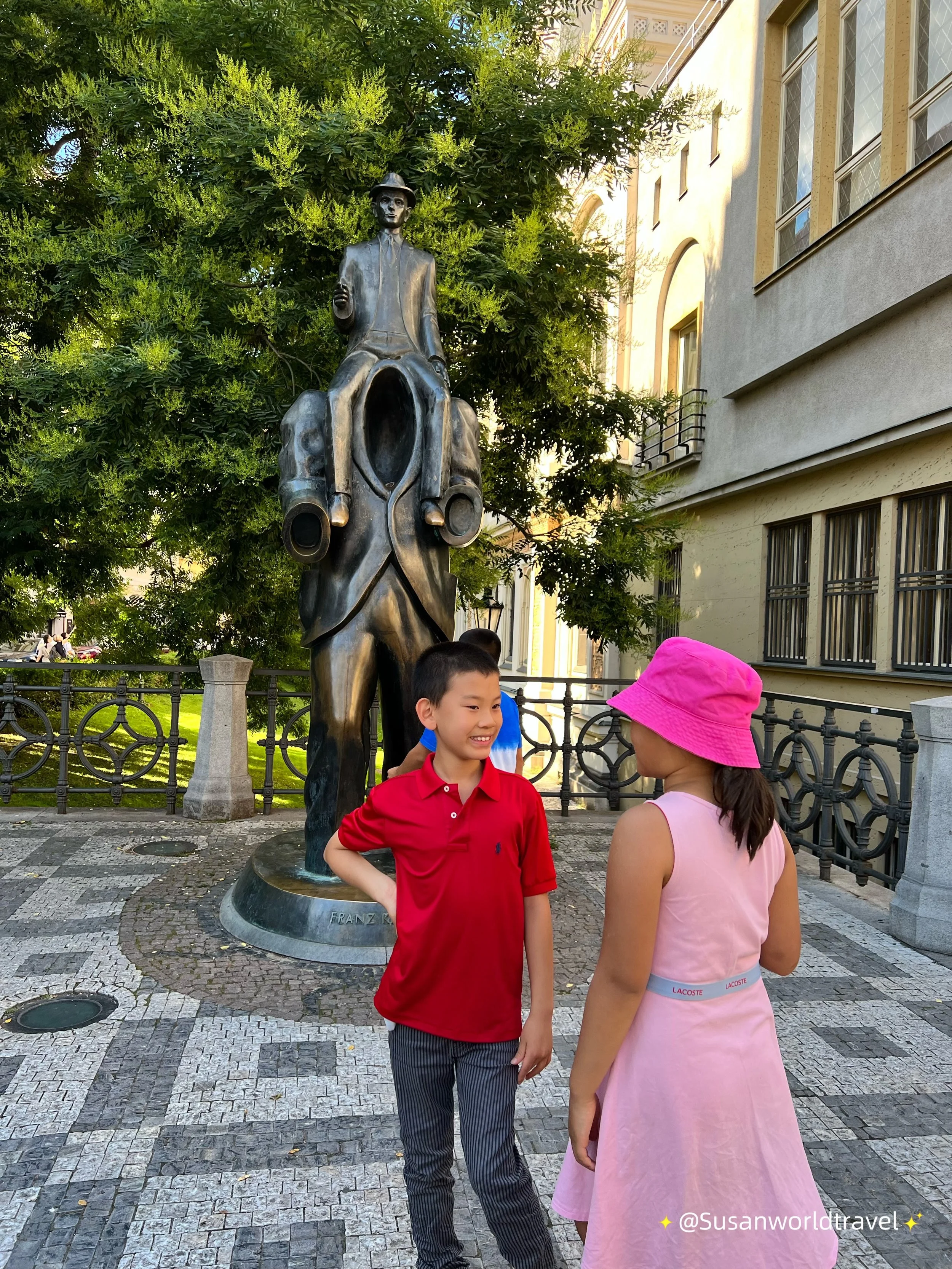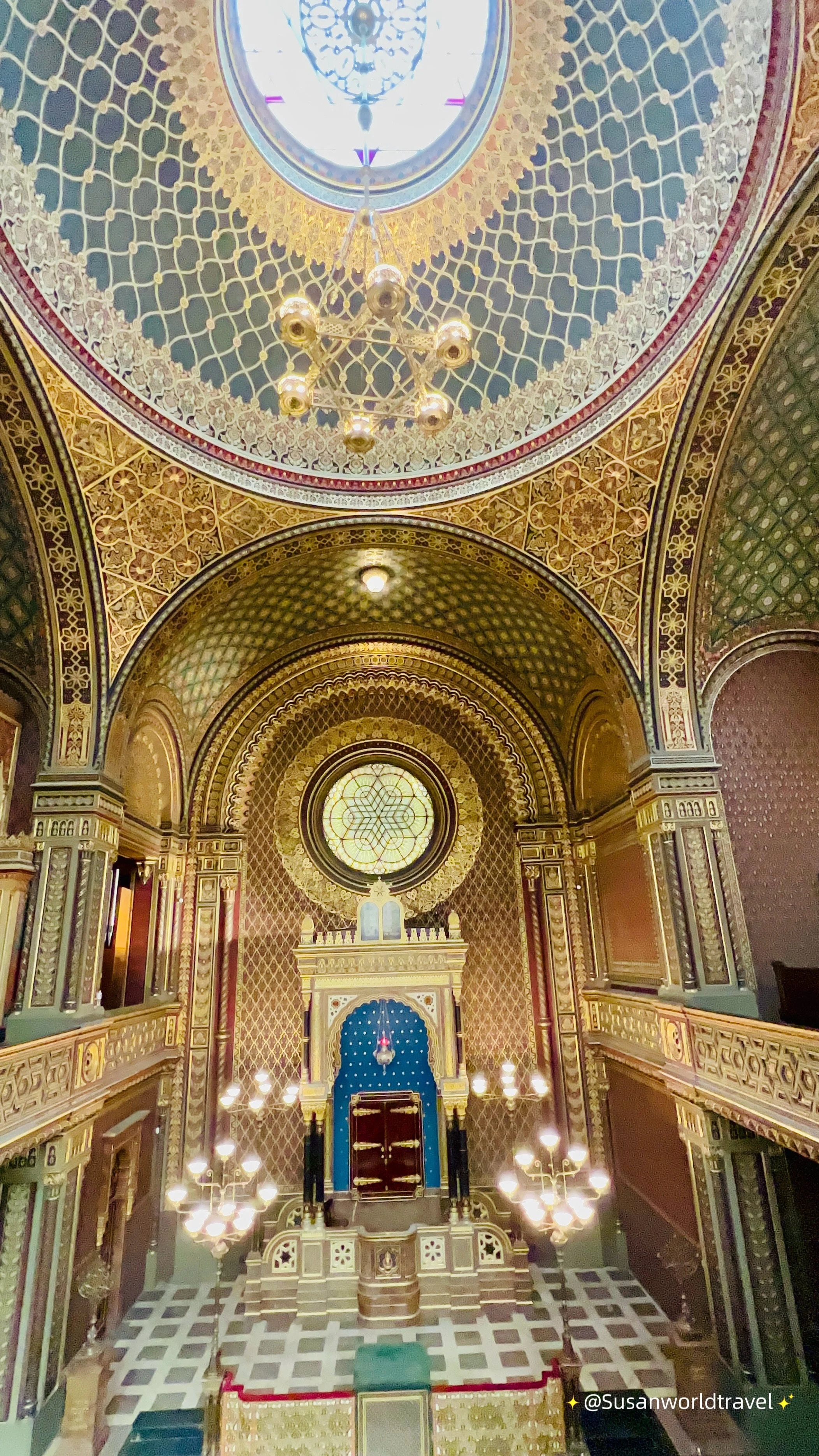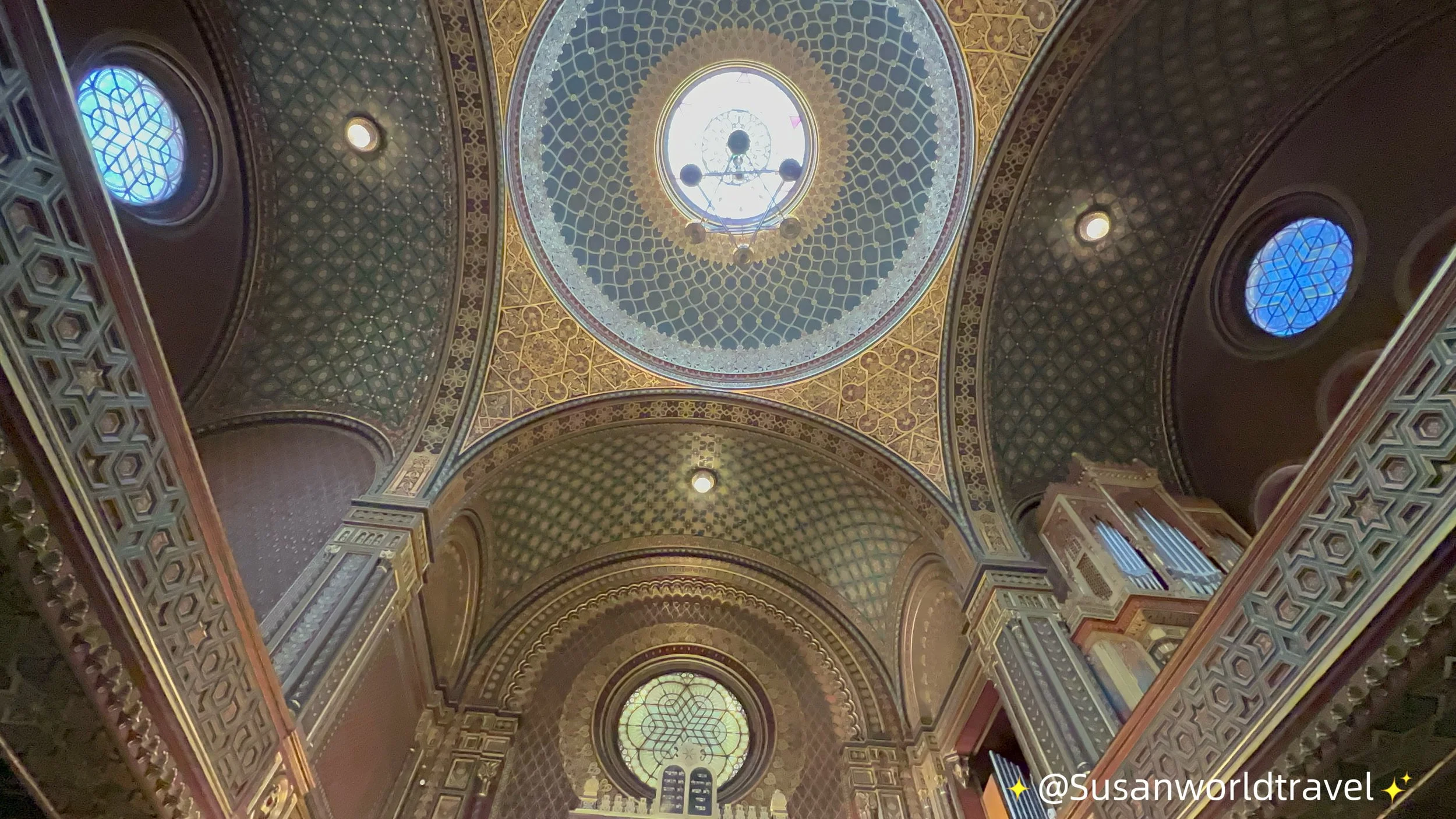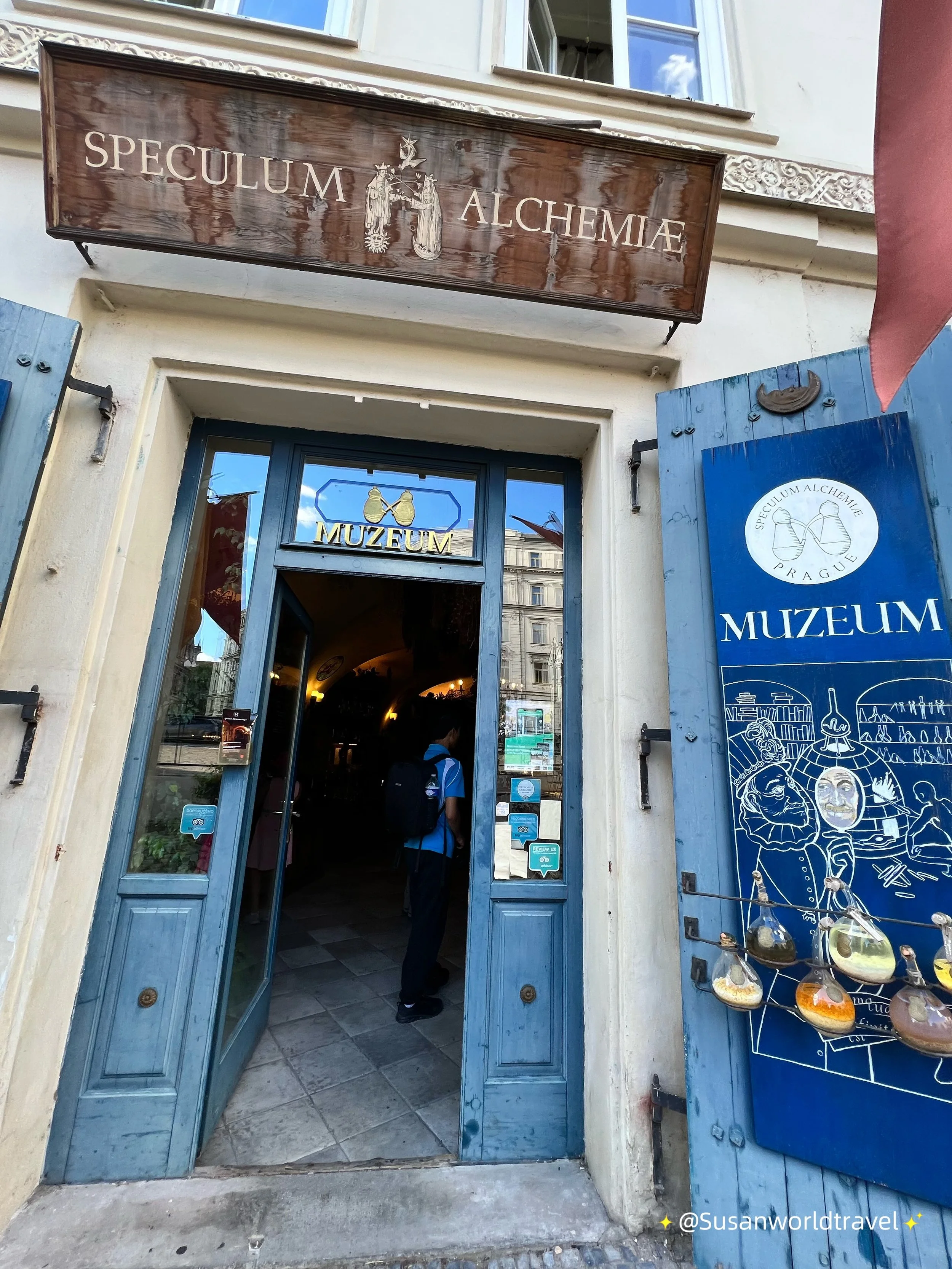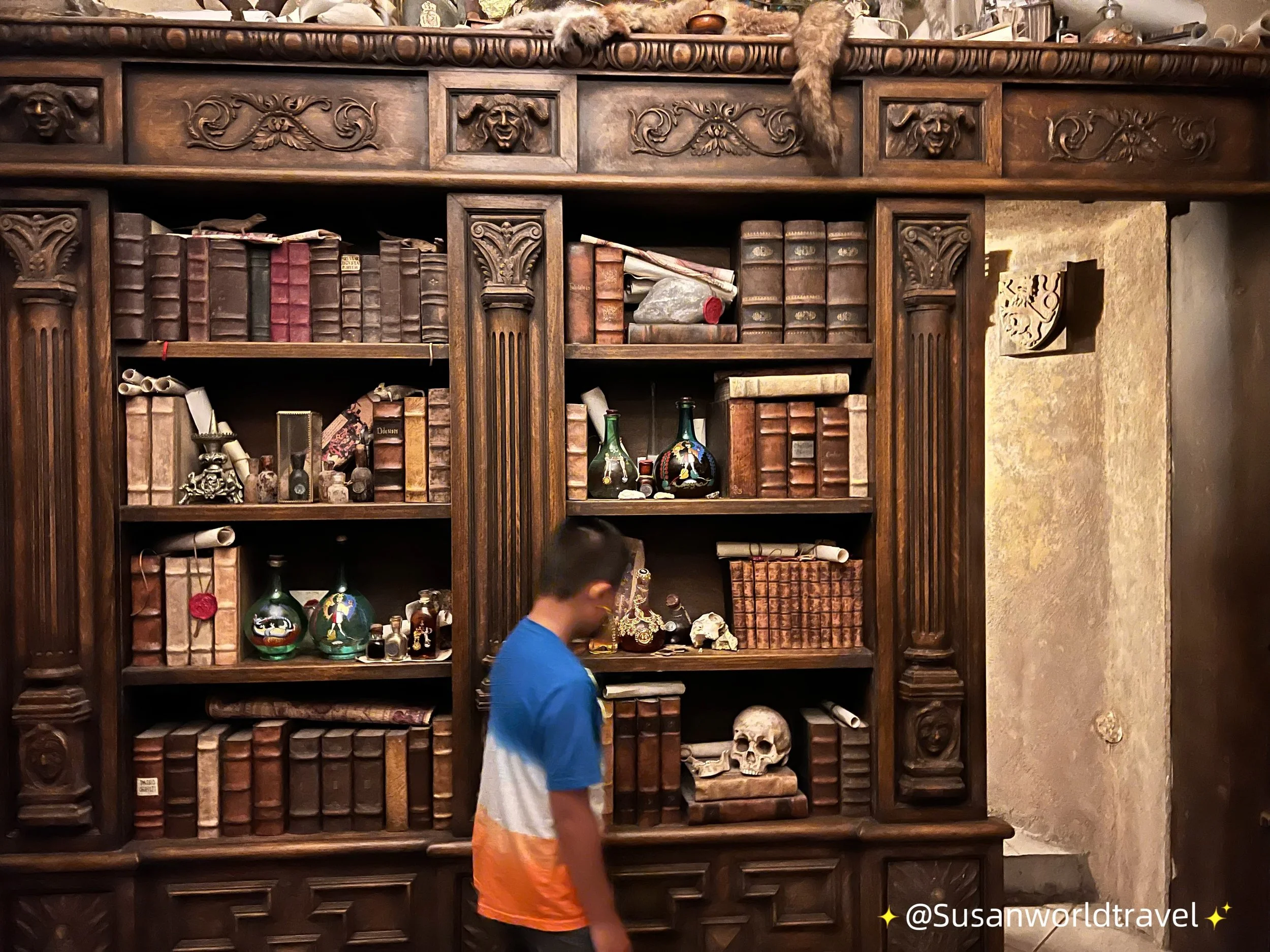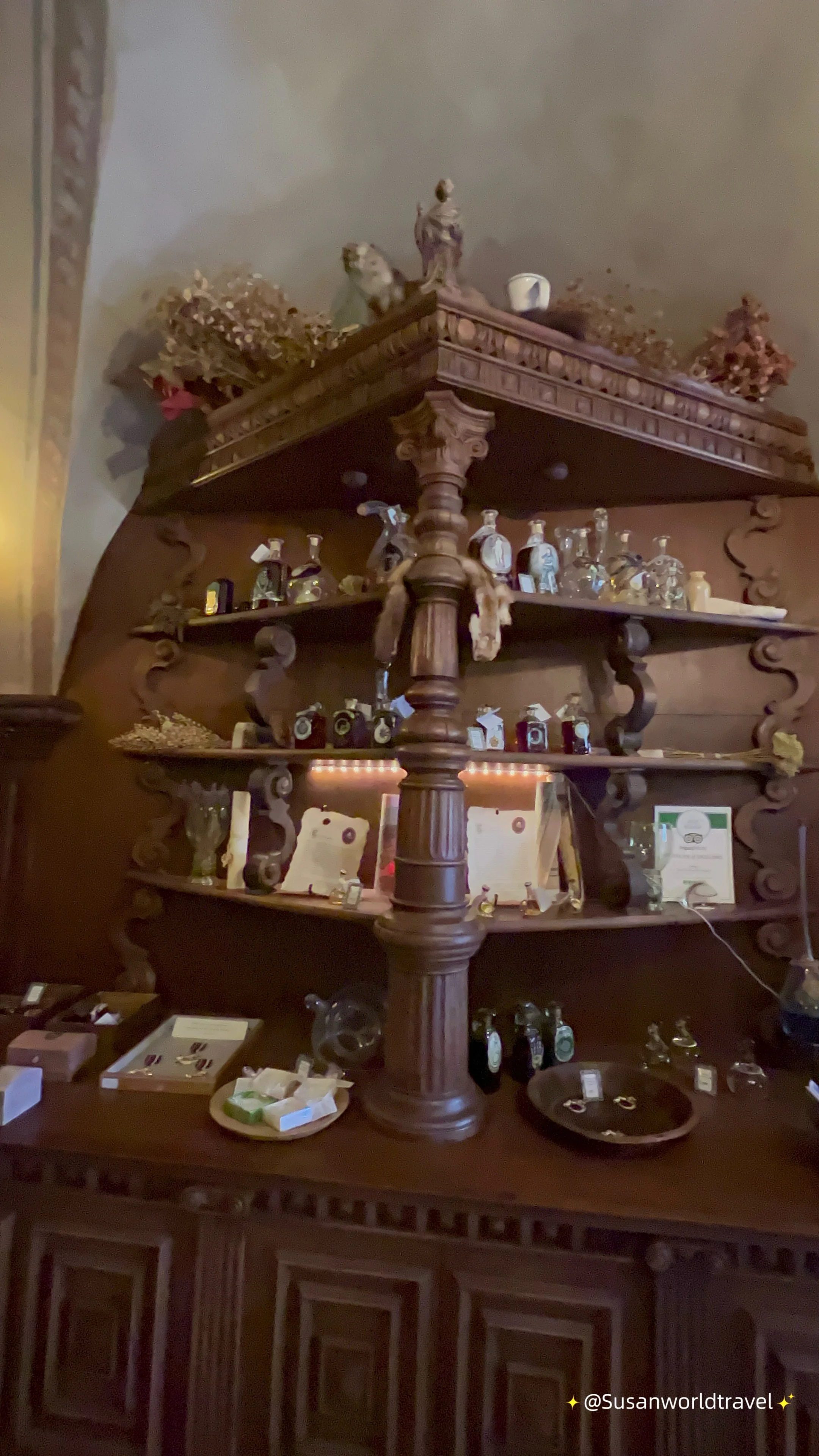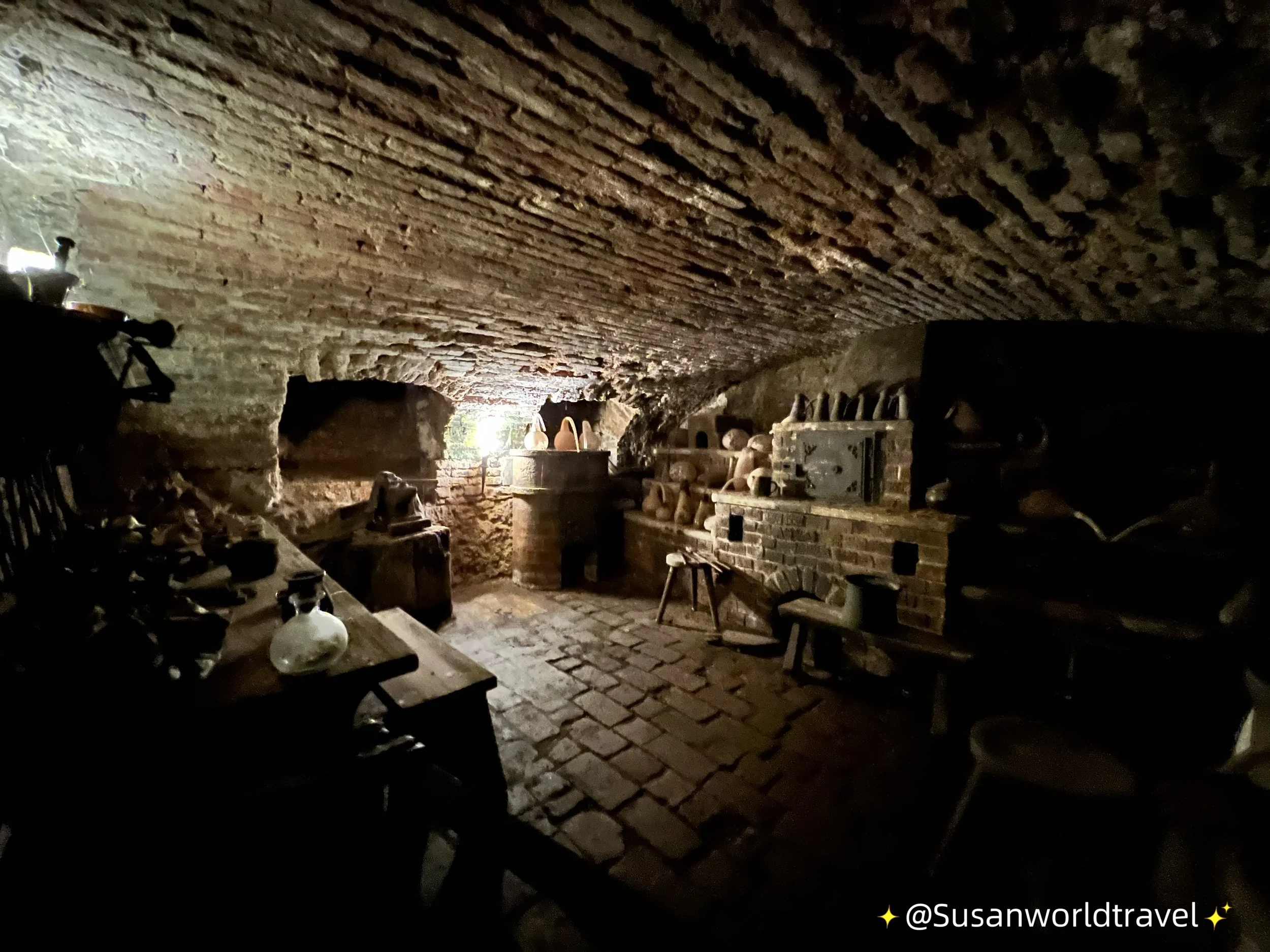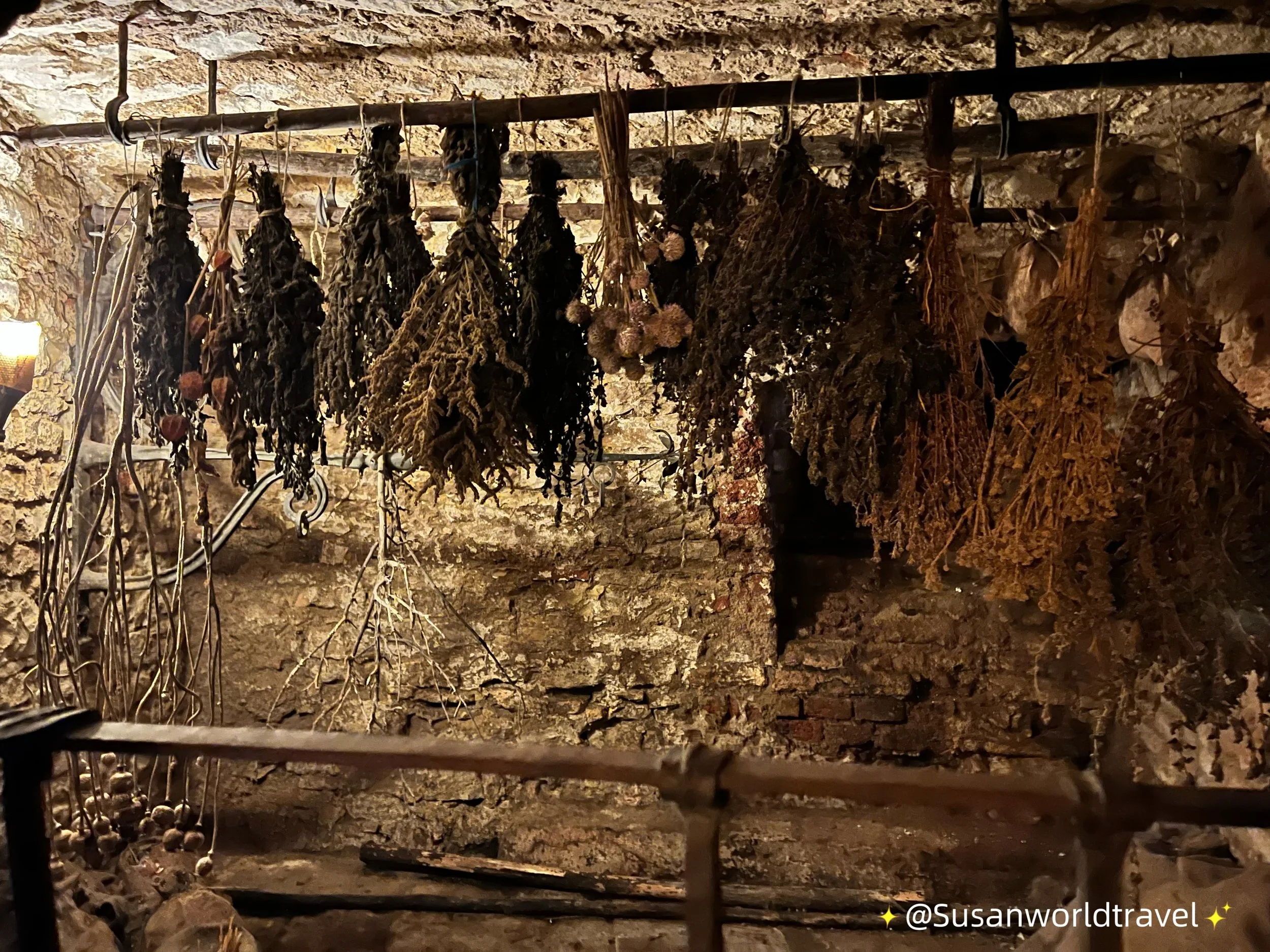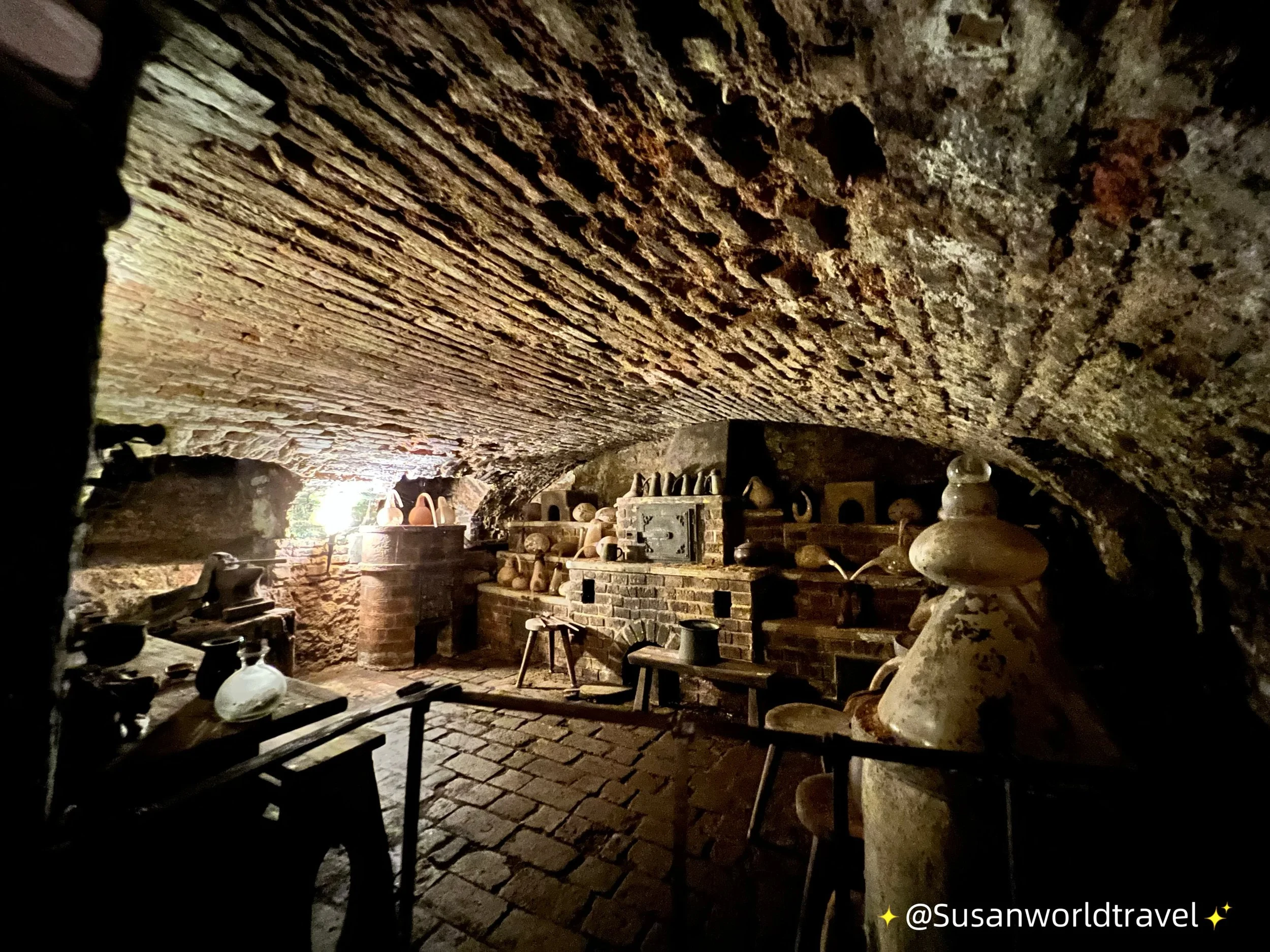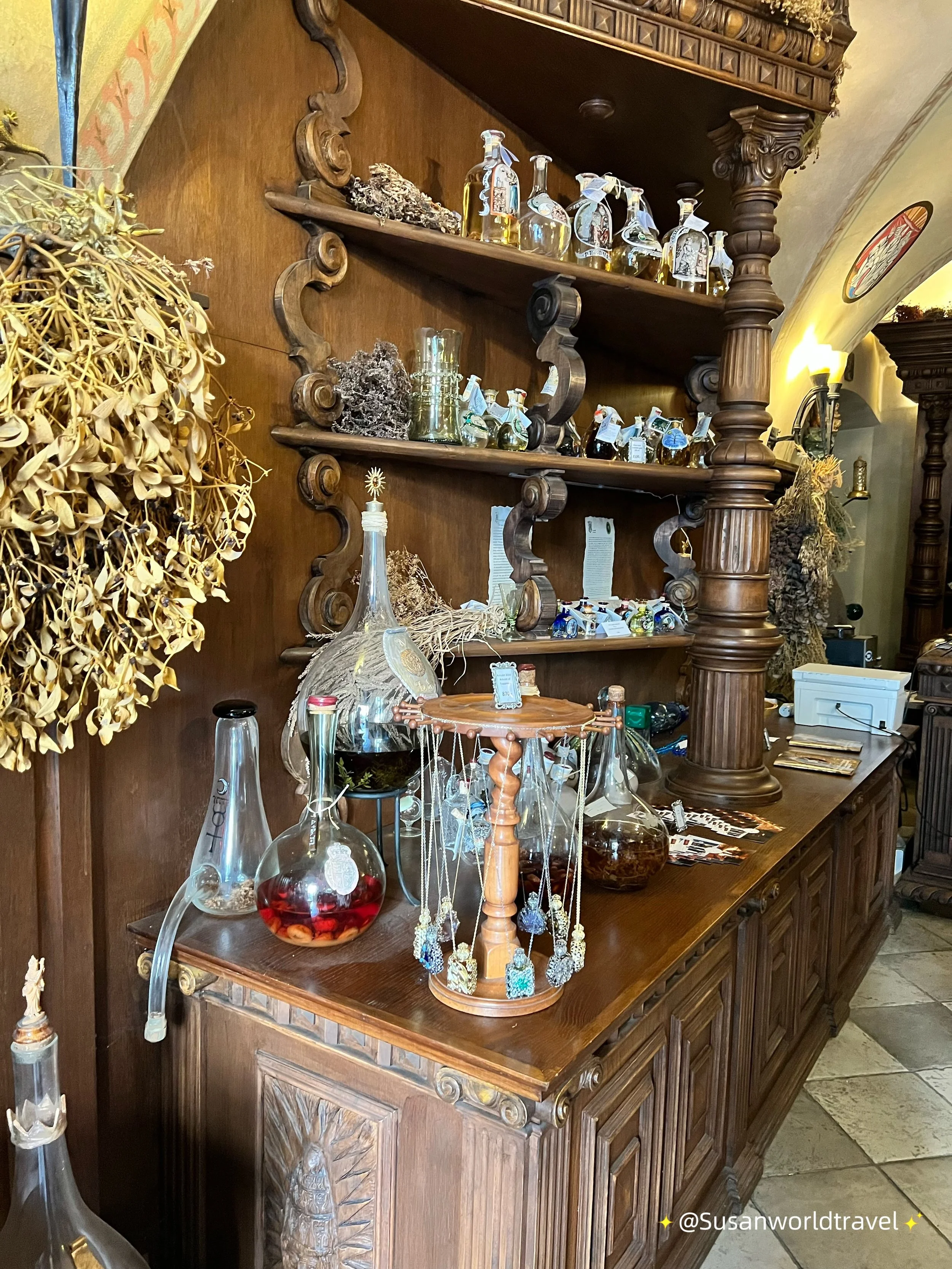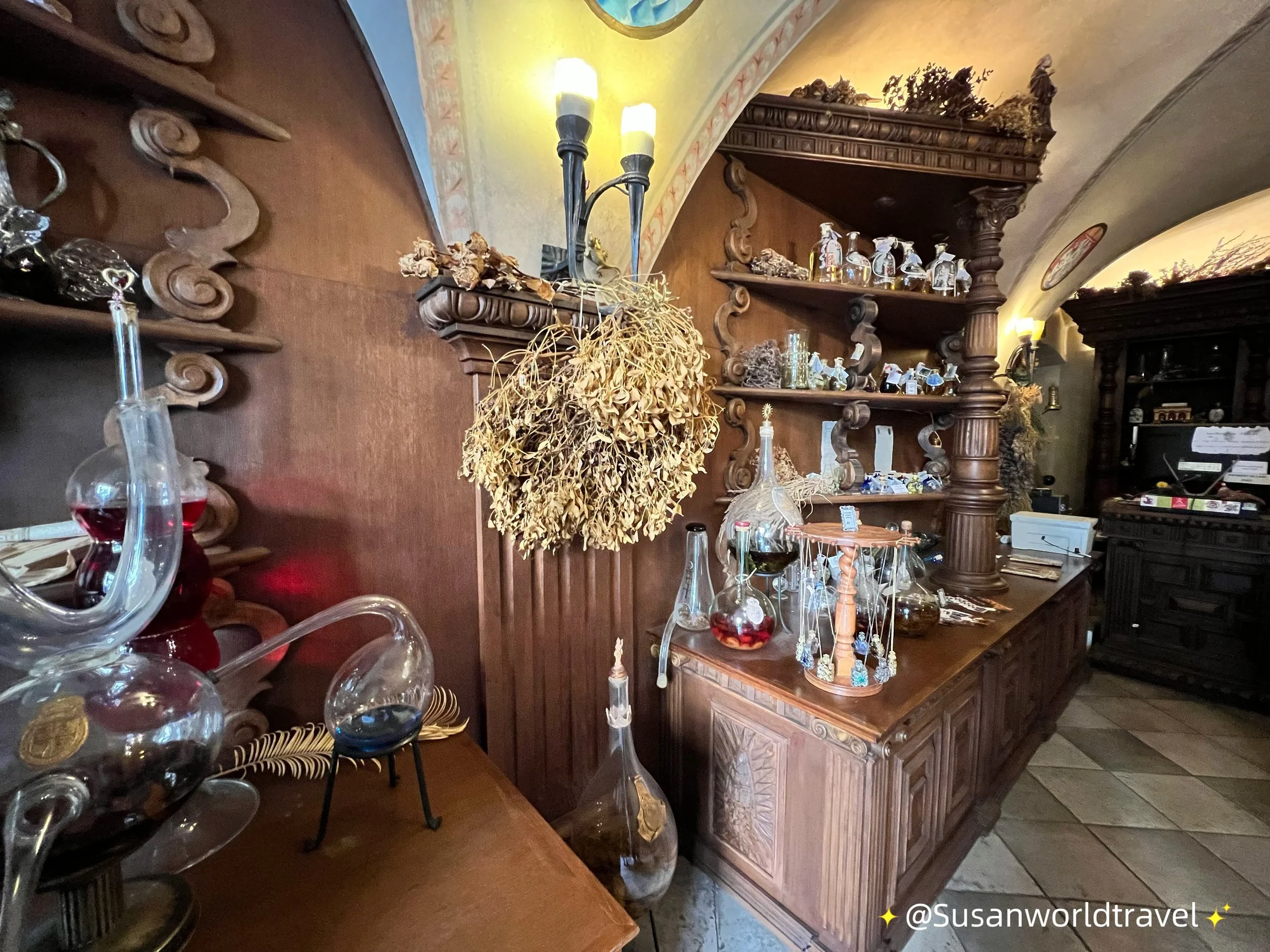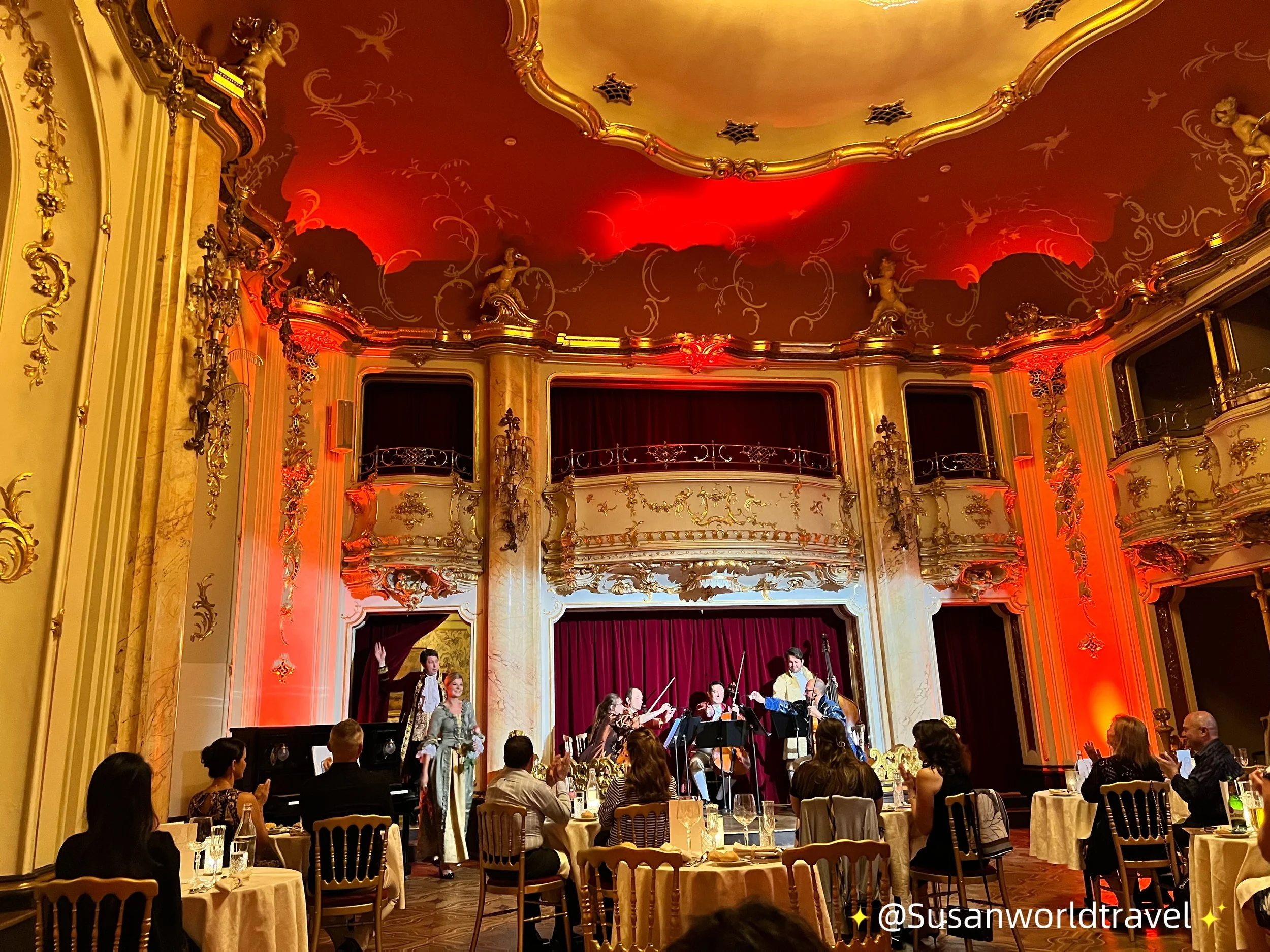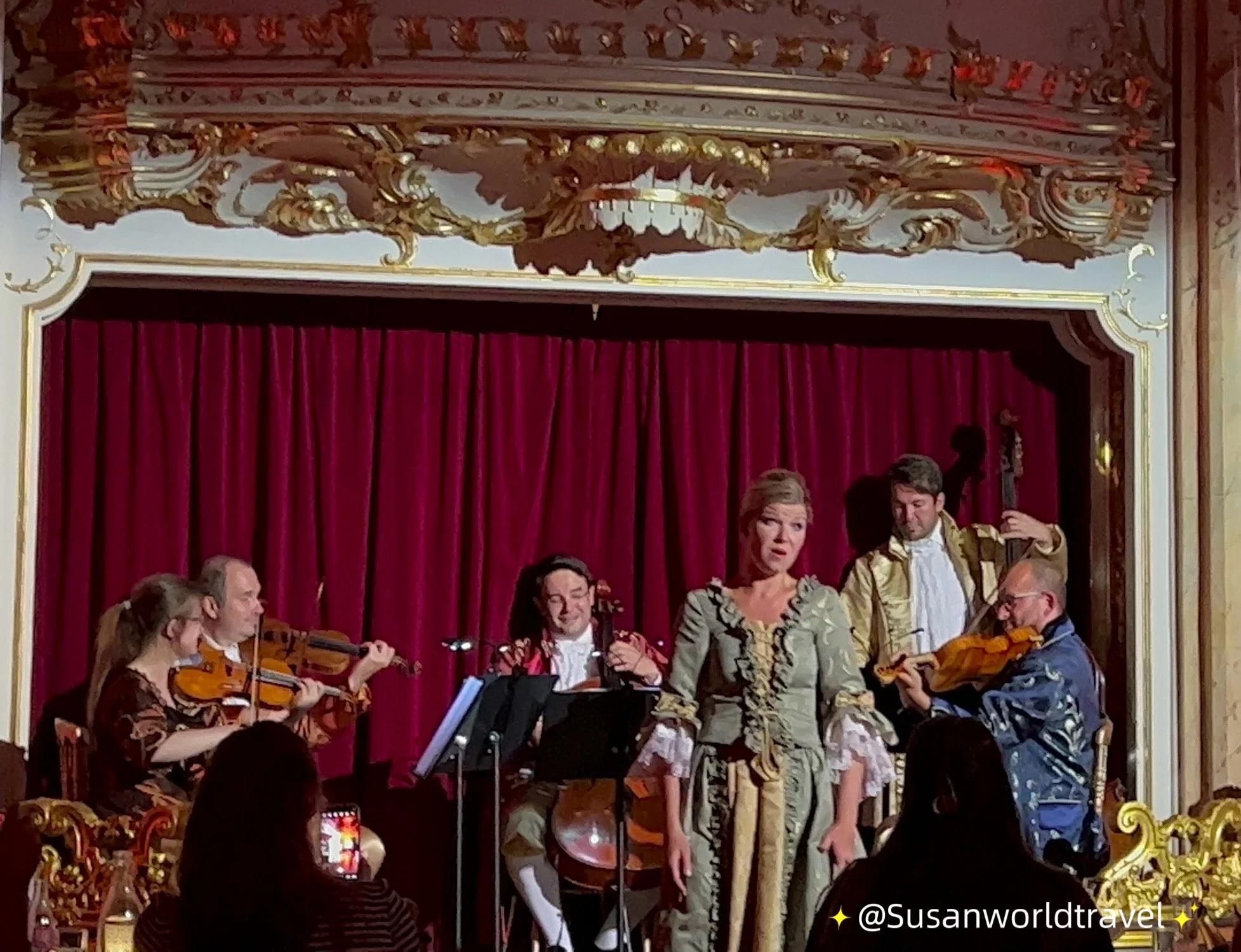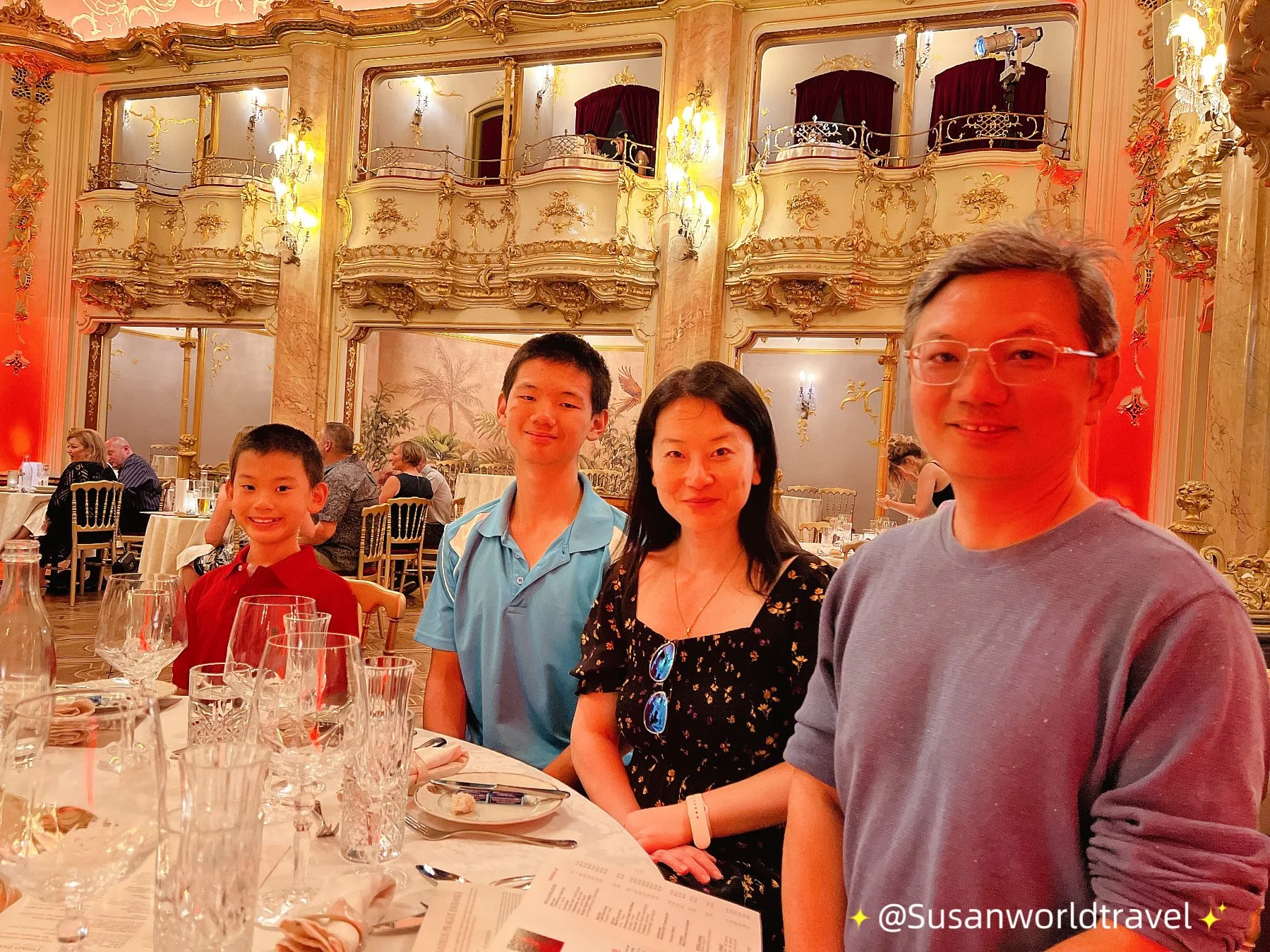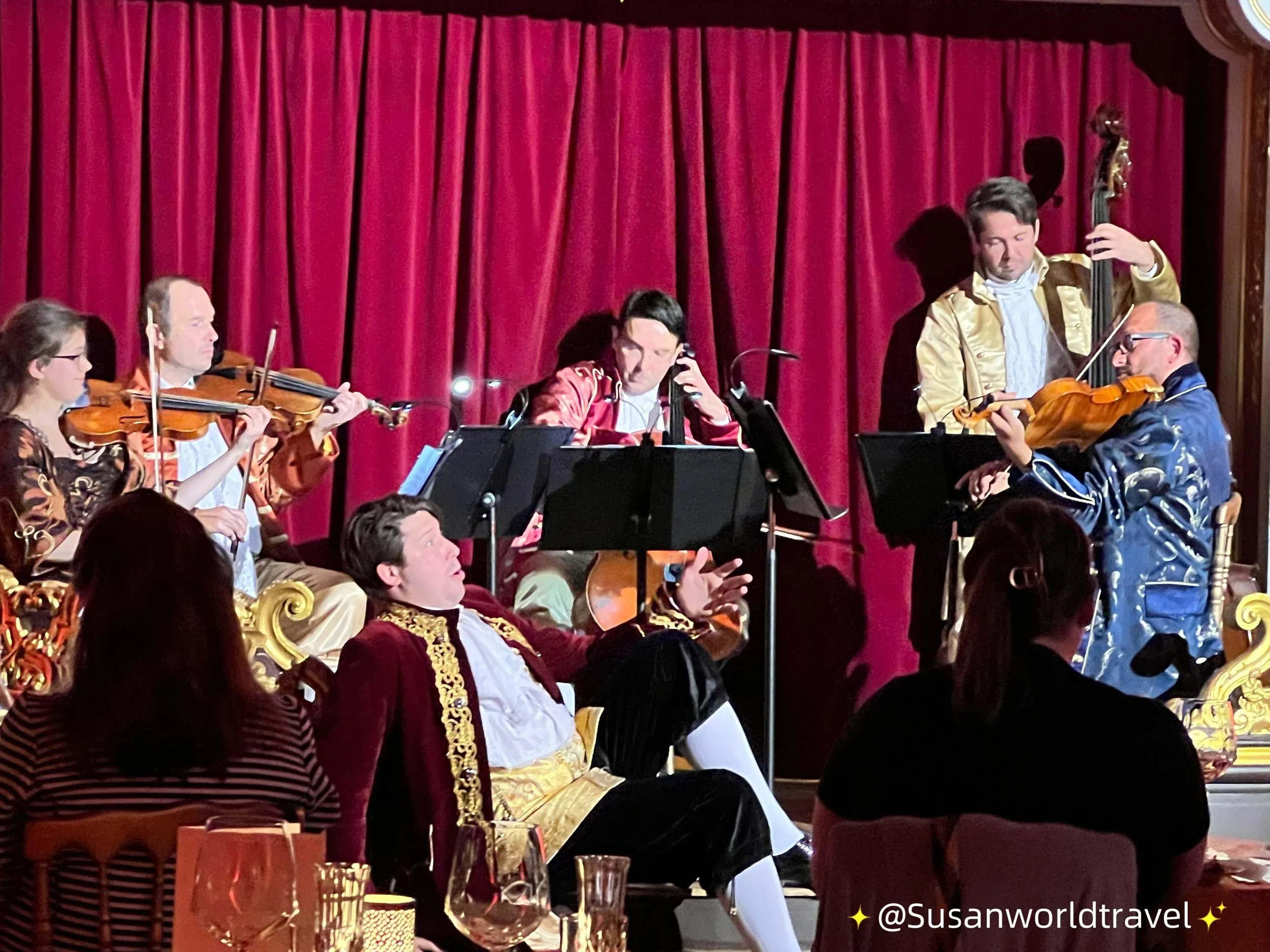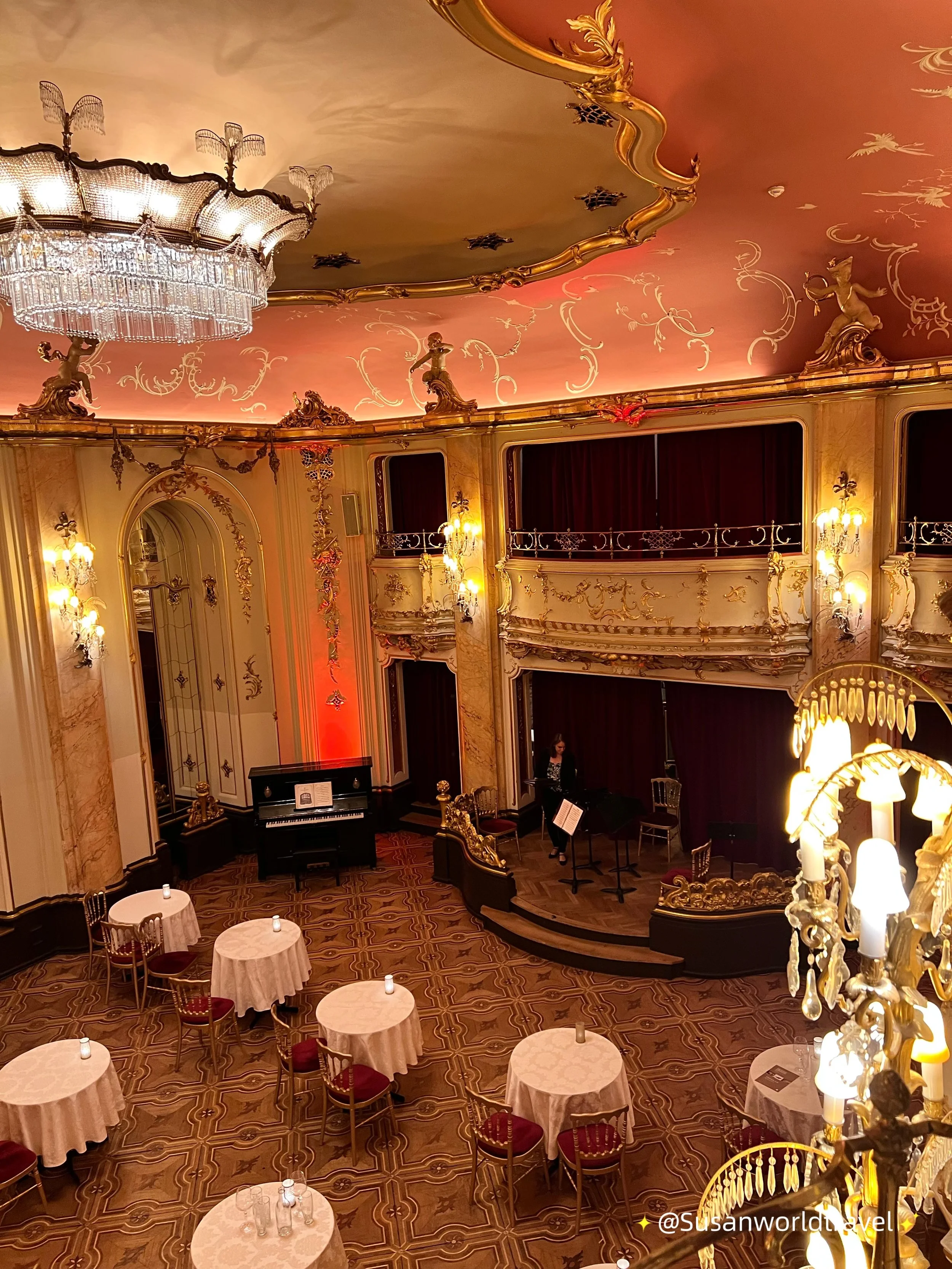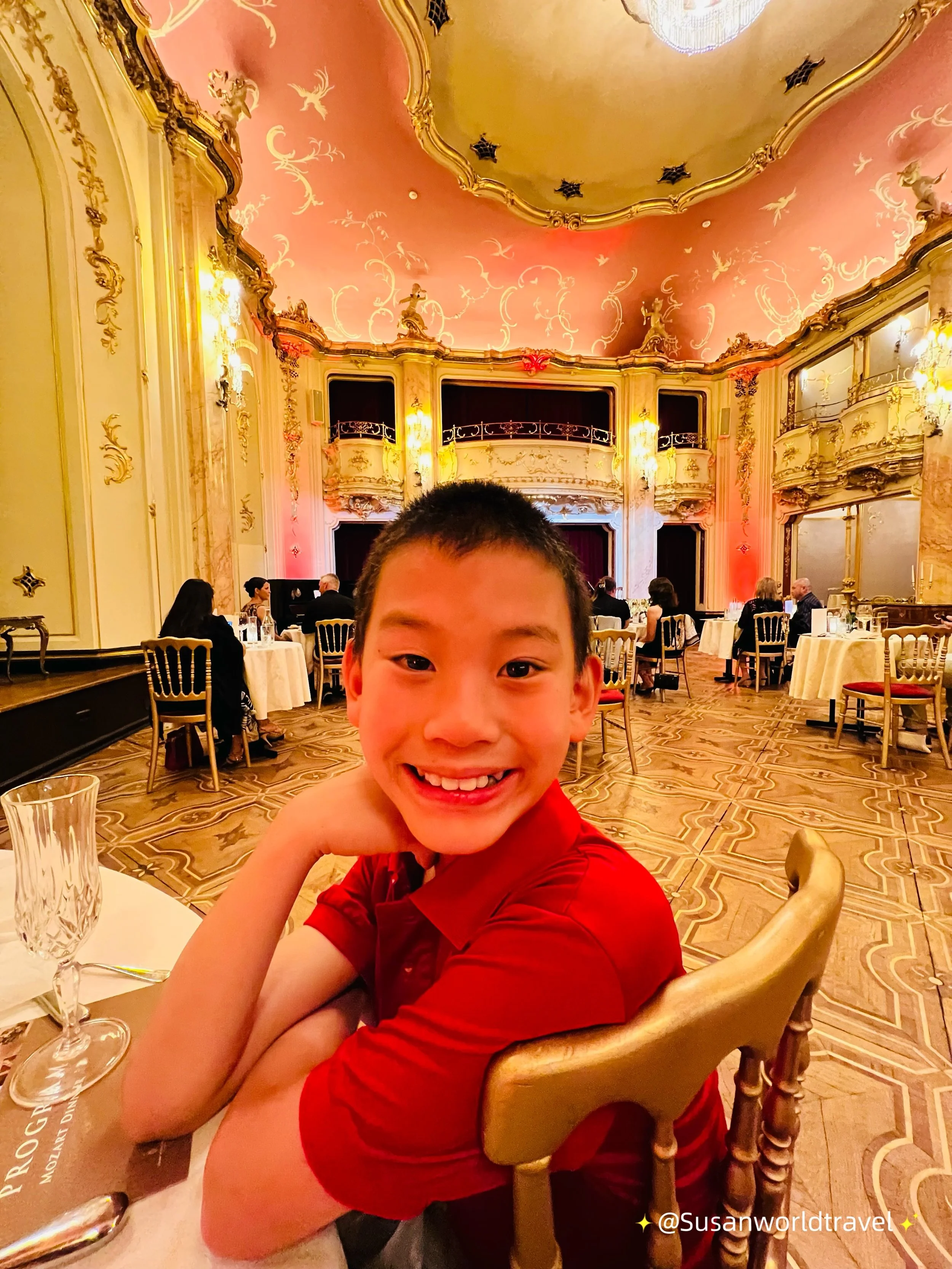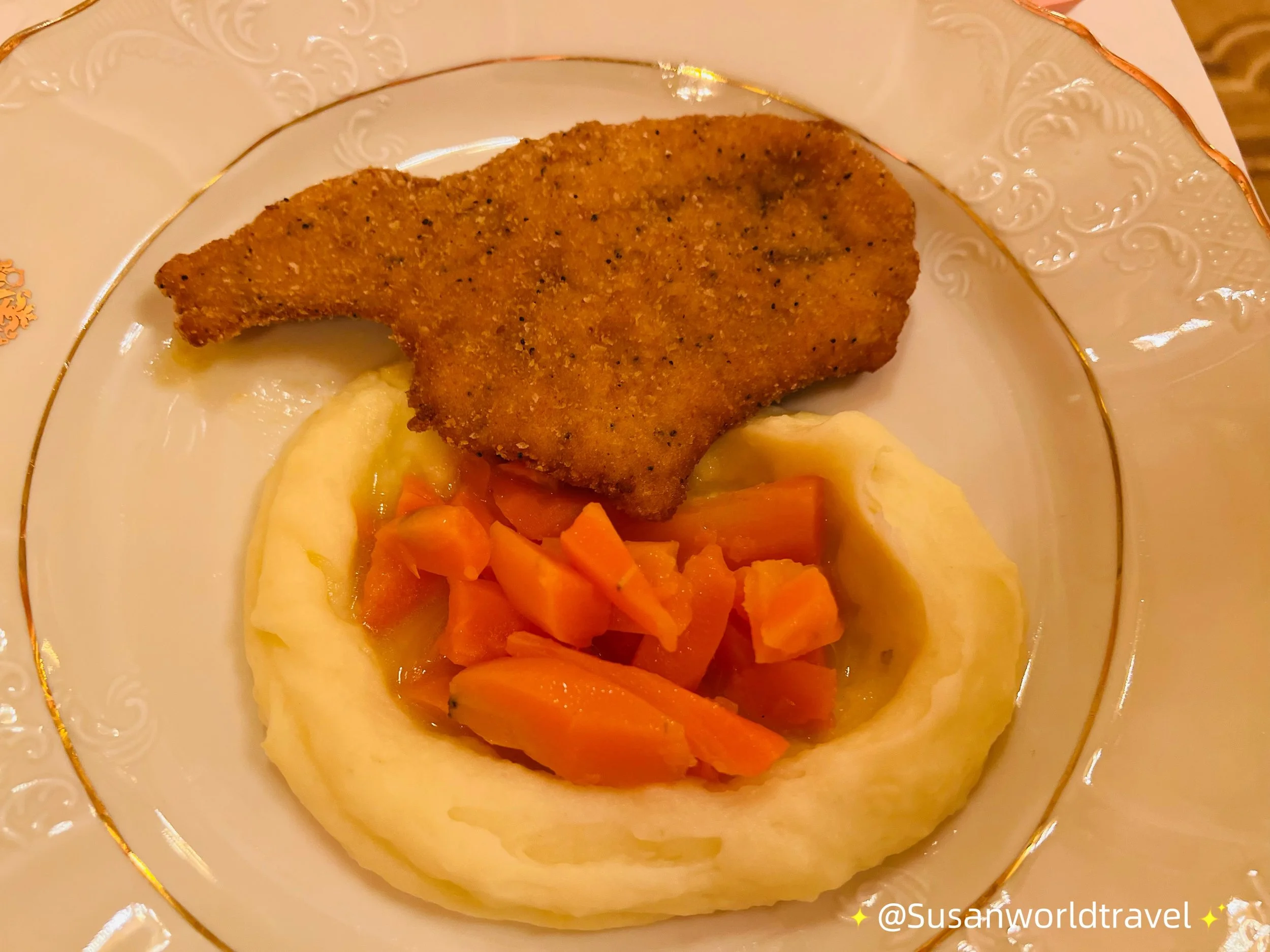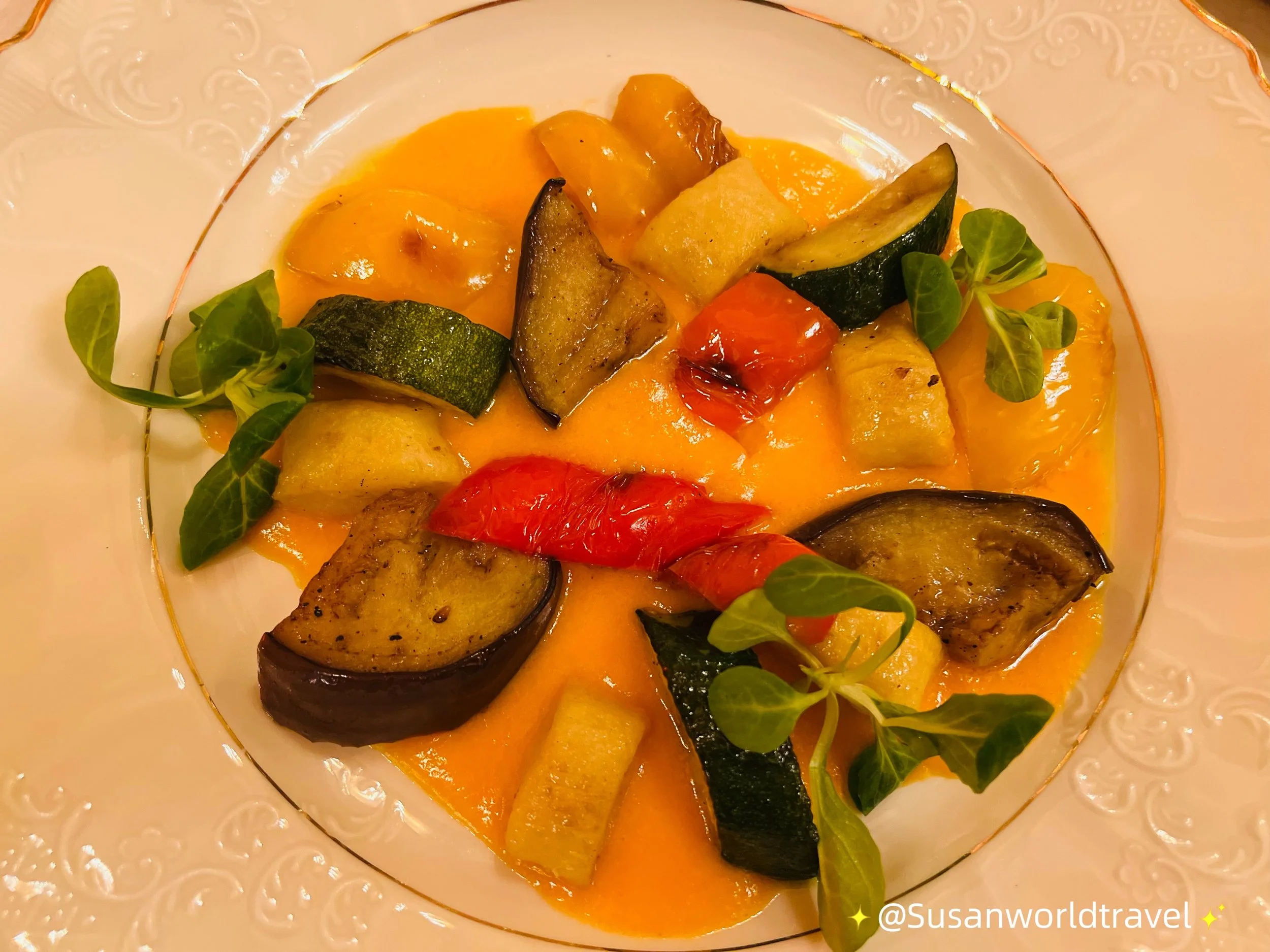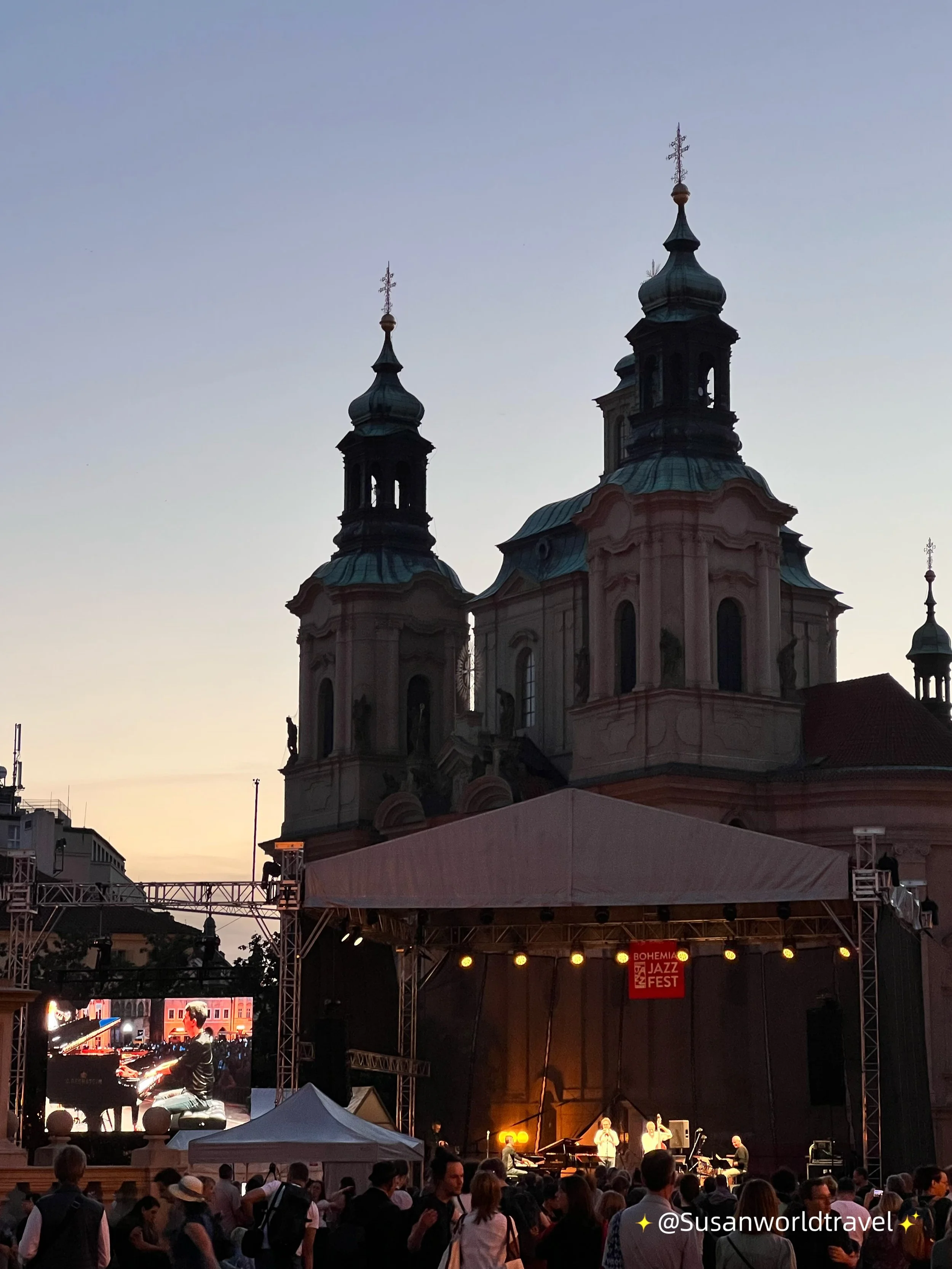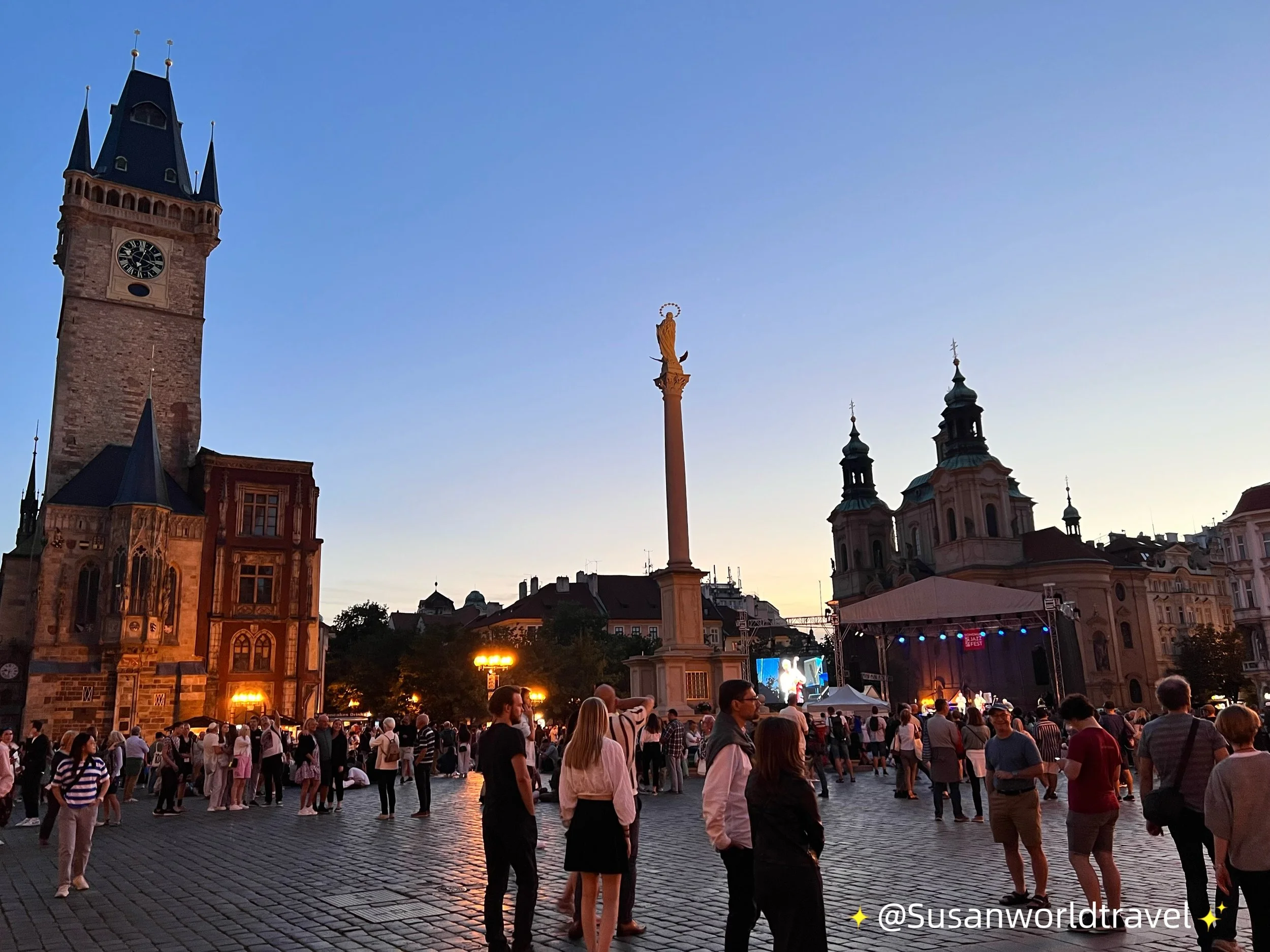Czech Day 2
Charles Bridge was quite crowded during the daytime with tourists and vendors. So, on our second day, we woke up early to catch the sunrise and take photos of the bridge bathed in its soft, golden hues. Charles Bridge, built between 1357 and the early 15th century under the commission of Emperor Charles IV, is one of Prague’s most iconic landmarks. Designed in Gothic style by architect Peter Parler, the bridge connects Prague Castle with the Old Town and was once a crucial trade route between Eastern and Western Europe. Famous for its 30 statues, including the renowned statue of Saint John of Nepomuk, Charles Bridge has become a symbol of Prague, representing its medieval roots and cultural heritage. Saint John of Nepomuk, a 14th-century Czech priest, is revered for his martyrdom after refusing to reveal the confessions of Queen Johanna to King Wenceslaus IV, leading to his execution by drowning. His statue on Charles Bridge, featuring a halo of five stars, is a symbol of his sainthood, and it is believed that touching it brings good luck and protection from drowning. He is the patron saint of bridges and confessions.
Prague Castle is a remarkable historical and architectural site, one of the largest ancient castles in the world, dating back to the 9th century. It has been the seat of Czech kings, emperors, and presidents, and its complex features a blend of architectural styles, from Romanesque to Gothic. The highlight of the castle is St. Vitus Cathedral, home to stunning stained glass windows that date back to the 14th century. These vibrant windows depict biblical scenes, saints, and important moments in Czech history, with one of the most famous being the Window of St. Wenceslas, designed by Czech artist Alfons Mucha. The castle not only serves as a symbol of Czech history and culture but also offers breathtaking views of Prague.
A visit to Prague Castle typically begins with entering through the Main Gate, where you’re greeted by the Castle Courtyards. First, explore the stunning St. Vitus Cathedral, renowned for its Gothic architecture and beautiful stained glass windows. Next, head to the Old Royal Palace, home to historical rooms like Vladislav Hall. From there, walk to the charming Golden Lane, a medieval street lined with colorful houses, then visit St. George’s Basilica, one of Prague’s oldest churches. If time permits, wander through the Castle Gardens for scenic views of the city. Finally, conclude your visit by checking out the Powder Tower, which offers great views of the surroundings. This sequence will help you experience the full historical and architectural significance of the castle complex.
After the tour of Prague Castle, we walked to the Franz Kafka Museum, located in the Lesser Town near the Charles Bridge. Kafka, born in Prague in 1883, is one of the most influential writers of the 20th century, known for his surreal and existential works that explore themes of alienation, bureaucracy, and the absurdity of life. The museum, with its unique and minimalist design, offers a deep dive into Kafka's life and legacy, featuring original manuscripts, photographs, and interactive exhibits. Inside, the atmosphere reflects the surreal and existential themes of Kafka’s writing. One of the most striking features is a larger-than-life sculpture by Jaroslav Róna, which depicts Kafka’s head atop a rotating body, symbolizing the complexity of his character. The entire experience was a fitting continuation of our exploration of Prague’s rich history and literary heritage.
We took a taxi to Letná Park, a stunning vantage point offering panoramic views of Prague and the Vltava River. From here, we could admire the city’s historic skyline, including Prague Castle, Charles Bridge, and the charming Old Town, all framed by the river winding through the heart of the city. we crossed the Vltava River and made our way to the Jewish Quarter (Josefov). As we walked through this historic area, we passed the upscale luxury brand shops that now line the streets of the Jewish Corner, a striking contrast to the district’s rich heritage. We also visited the Old-New Synagogue, one of the oldest active synagogues in Europe.
The Prague Alchemy Museum, located near the Old Town, offers a fascinating glimpse into the city’s secretive alchemical past. Since alchemy was forbidden at times, many experiments were conducted in hidden underground labs—one of which was only rediscovered after a flood revealed its entrance. The museum features replicas of these labs, ancient tools, and manuscripts that showcase the alchemists' quest for gold, immortality, and the philosopher’s stone. Interestingly, some of the old alchemical recipes share surprising similarities with traditional Chinese medicine, highlighting a curious overlap in ancient healing practices across cultures.
For dinner, we chose the Mozart Dinner Show, a unique experience combining live classical music, elegant dining, and Prague’s historic charm. Held in a beautiful Baroque hall, the show featured opera singers and musicians performing arias from Mozart’s famous operas like Don Giovanni and The Magic Flute, while we enjoyed a candlelit three-course meal.
Although born in Vienna, Mozart had a special connection with Prague, where his music was deeply appreciated. In 1787, he premiered Don Giovanni at the Estates Theatre, and famously said, “My Praguers understand me.” This dinner show perfectly captured the bond between Mozart and the city.
